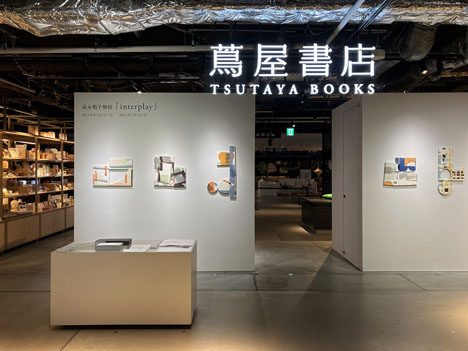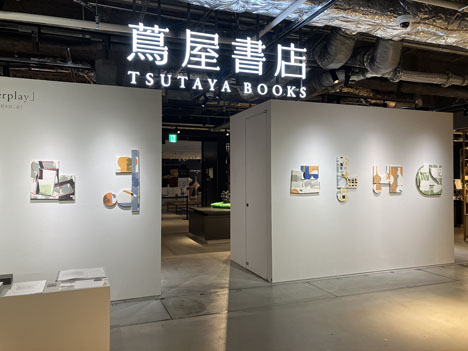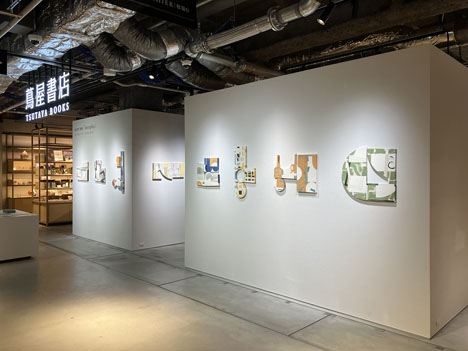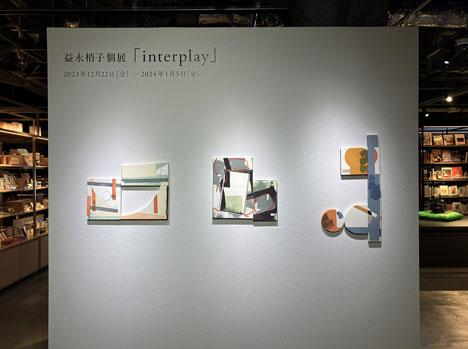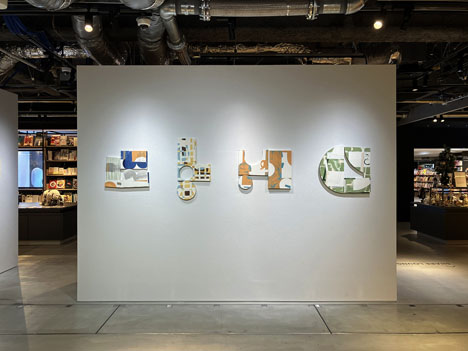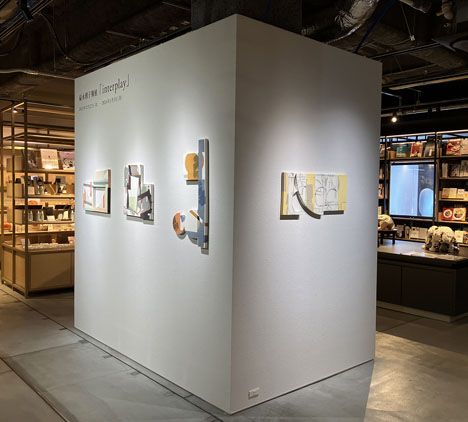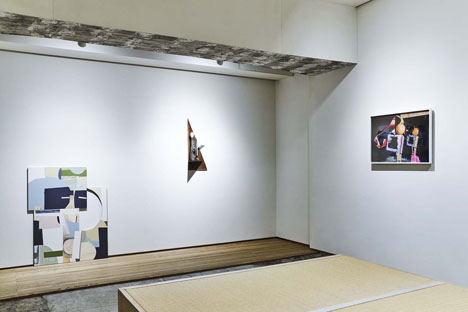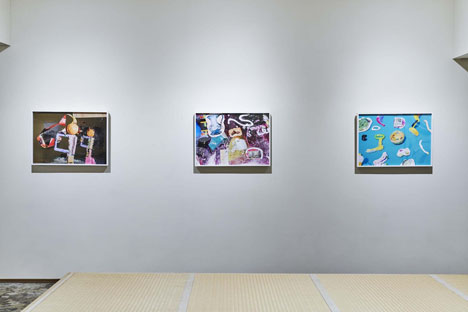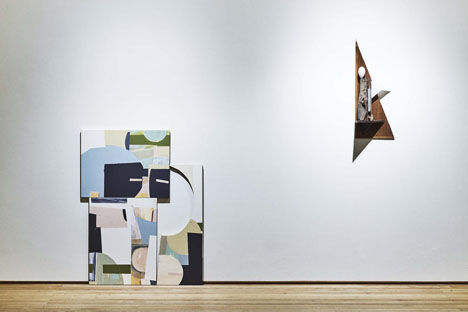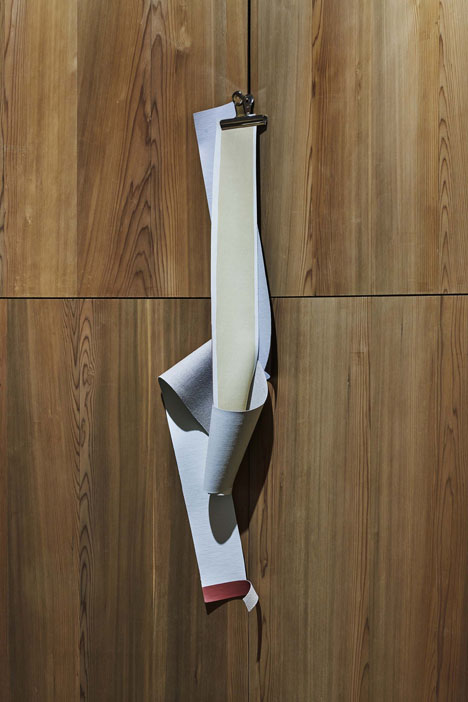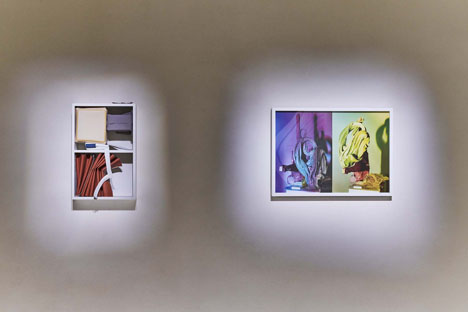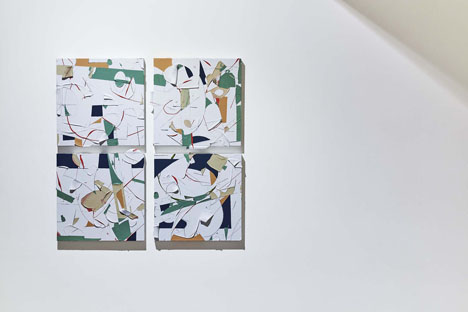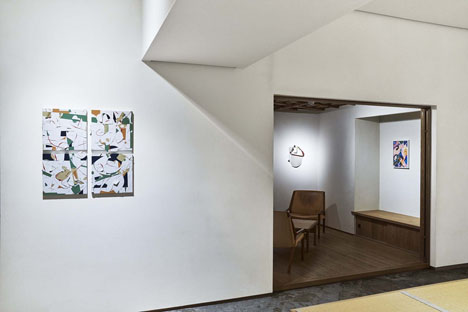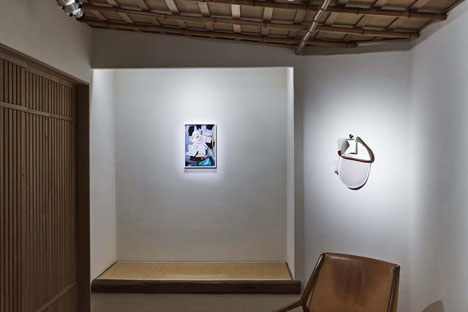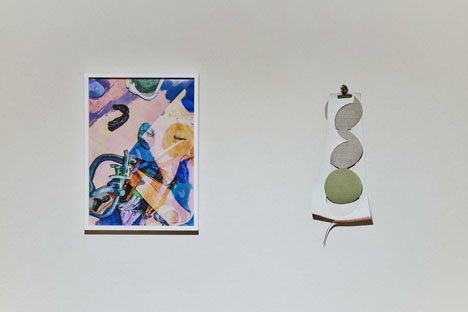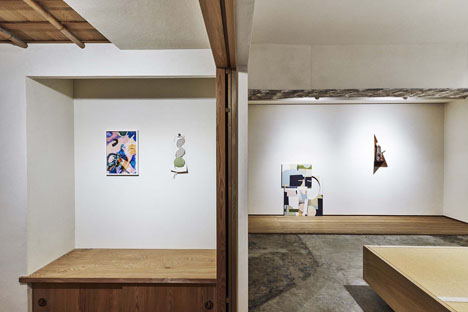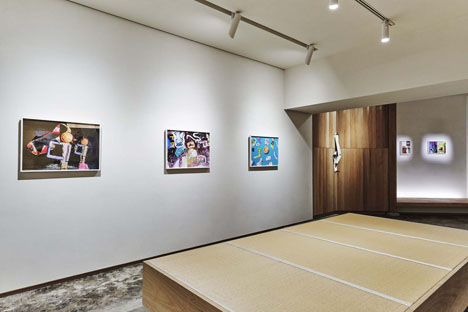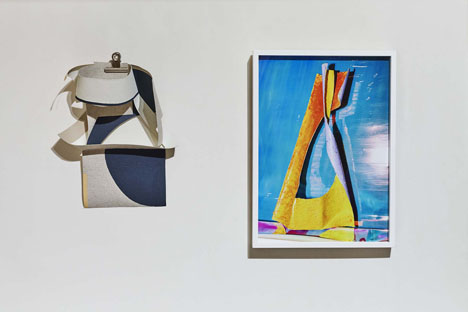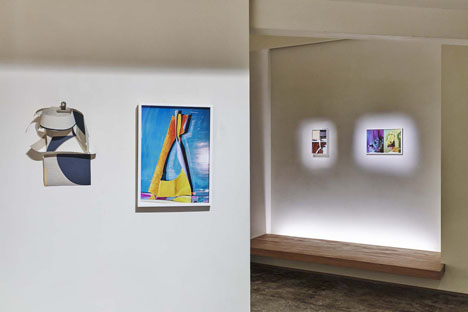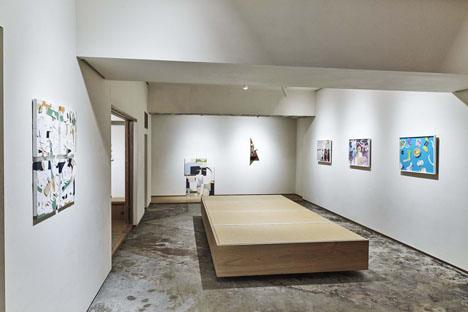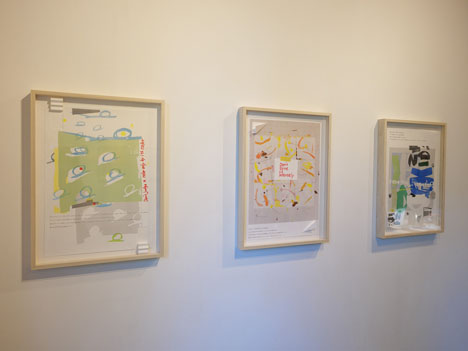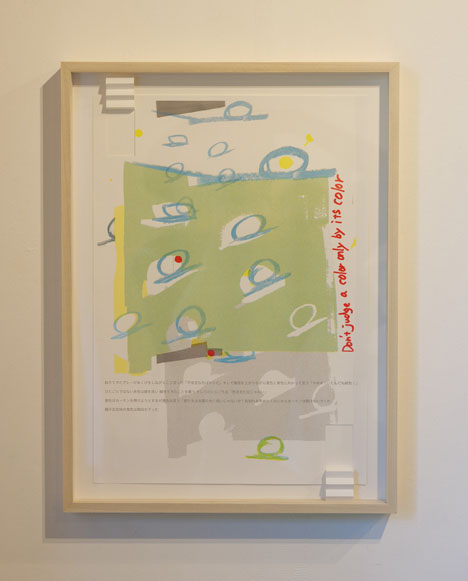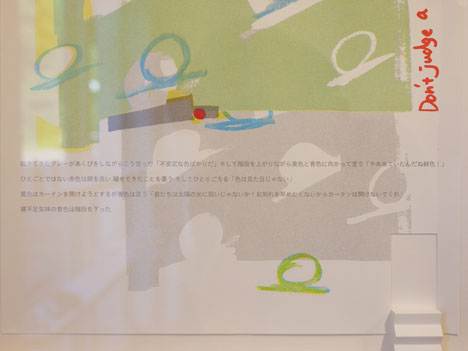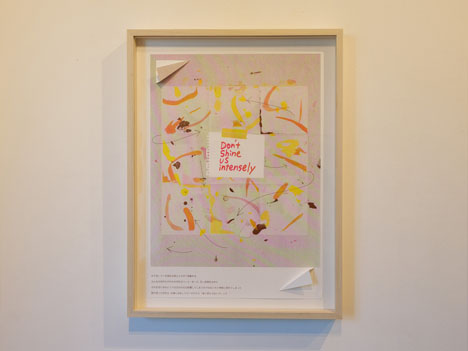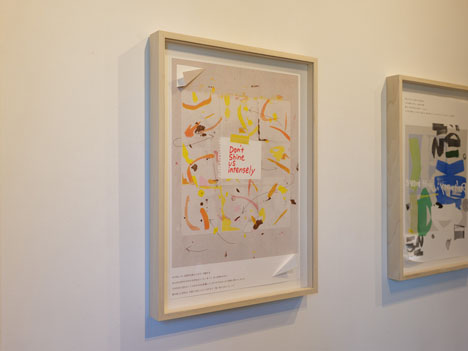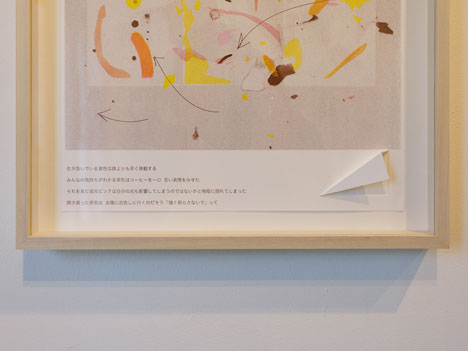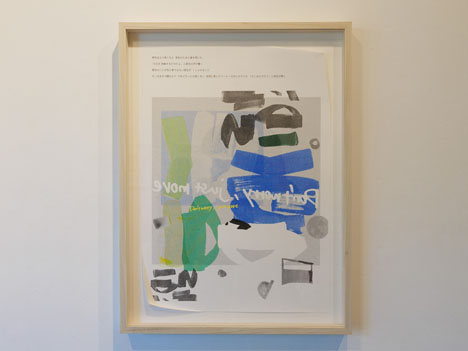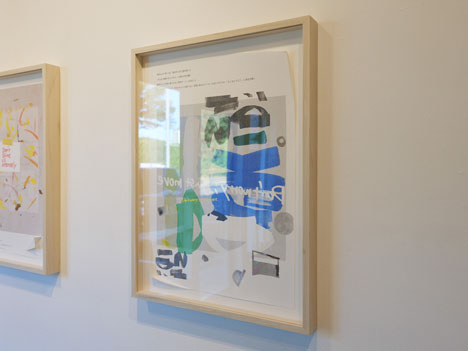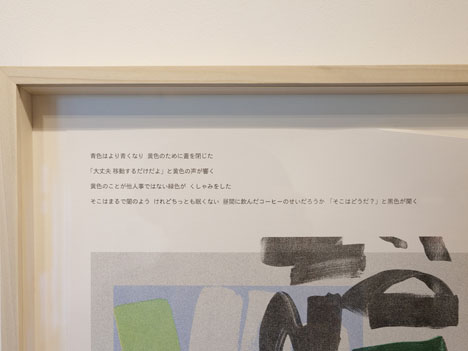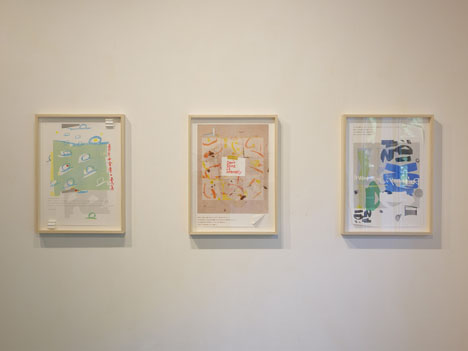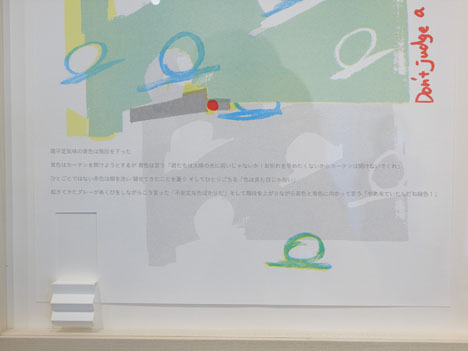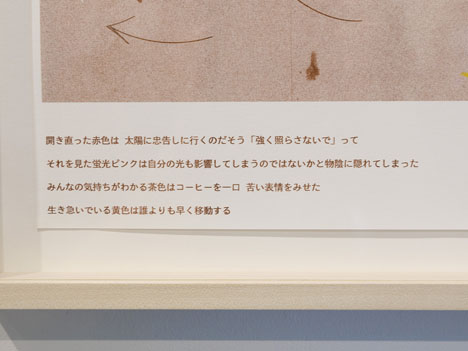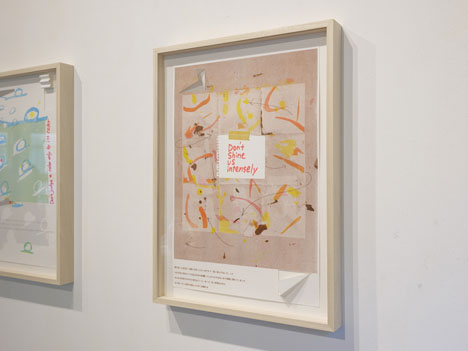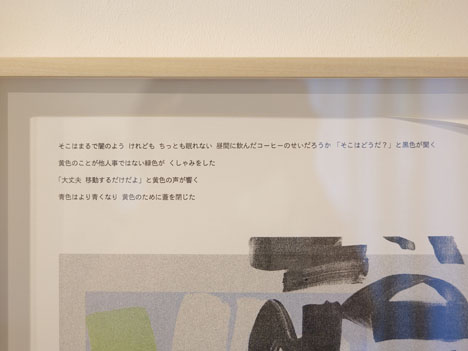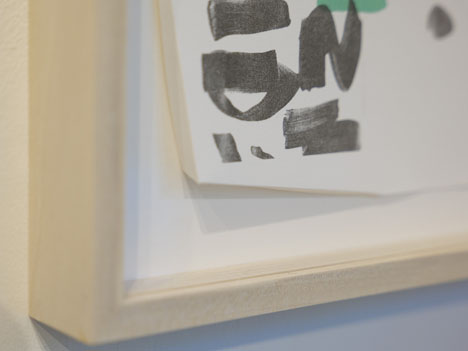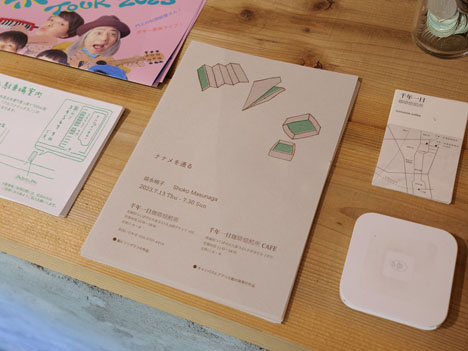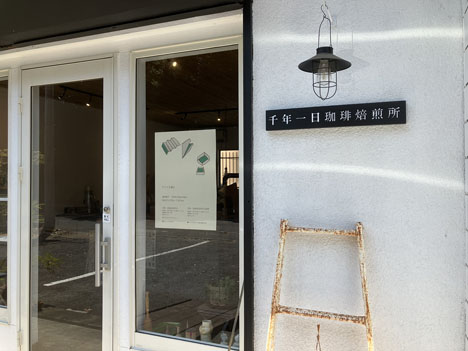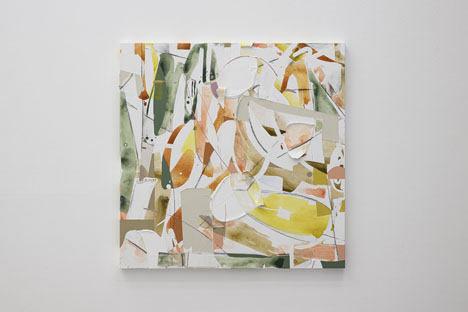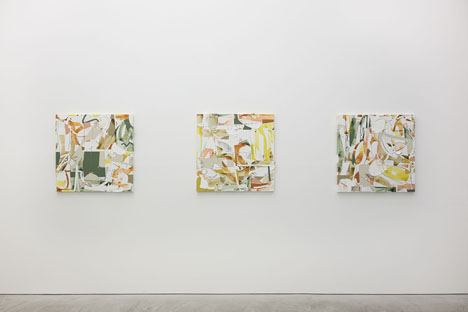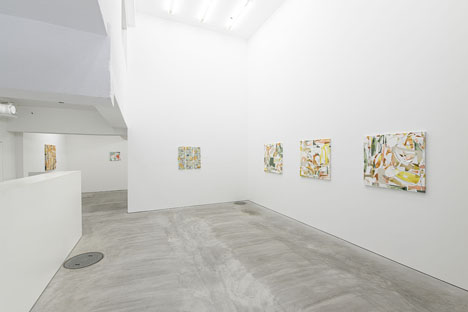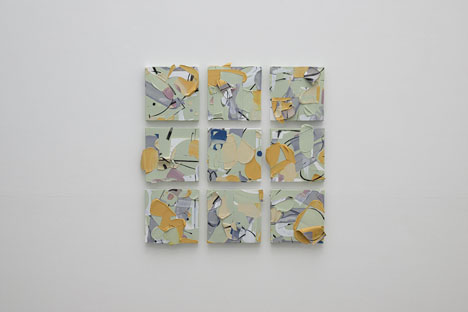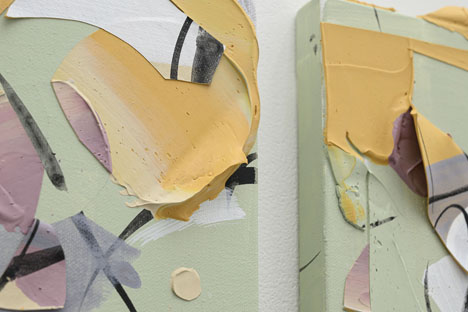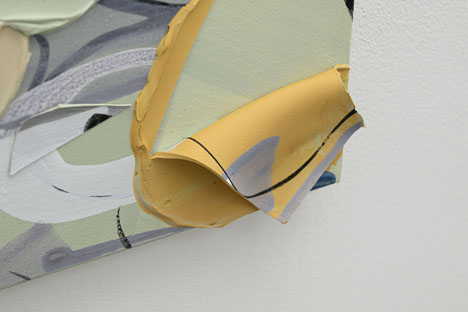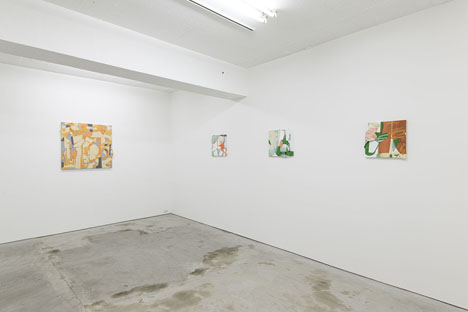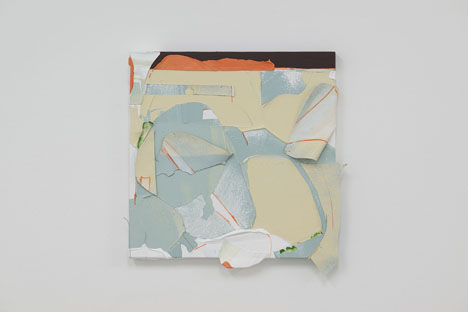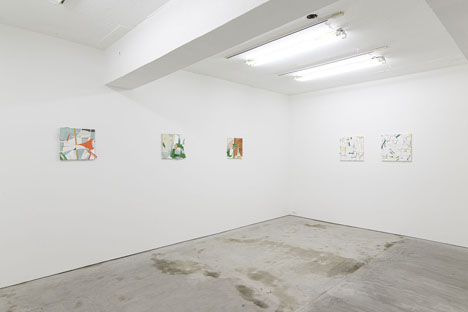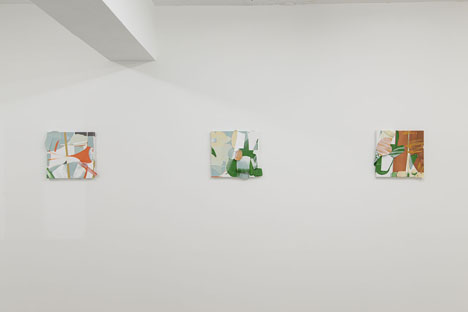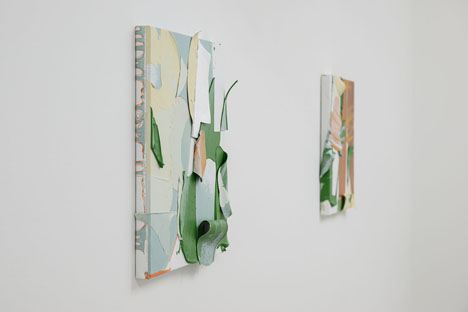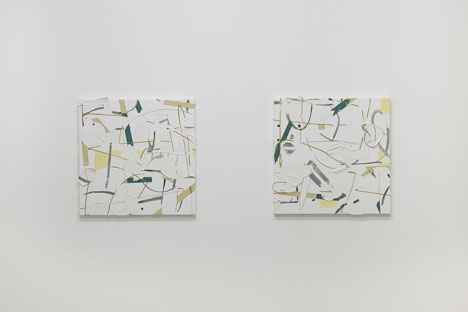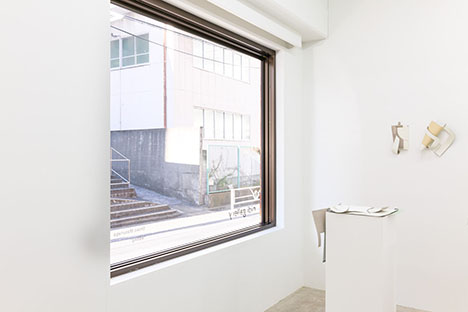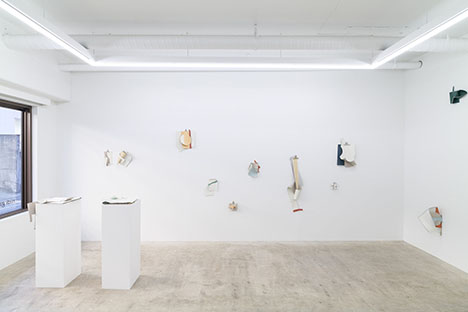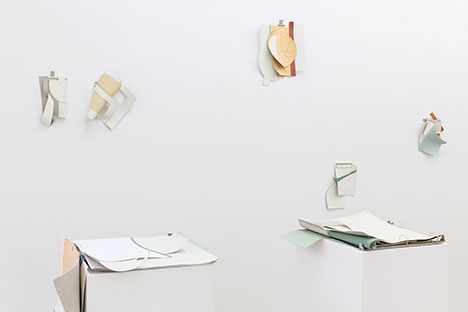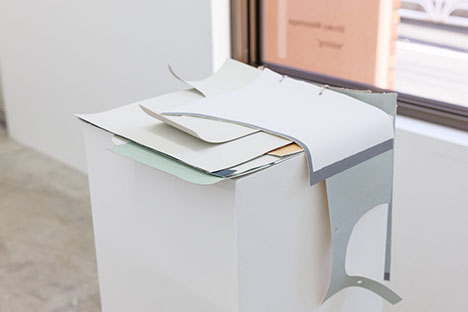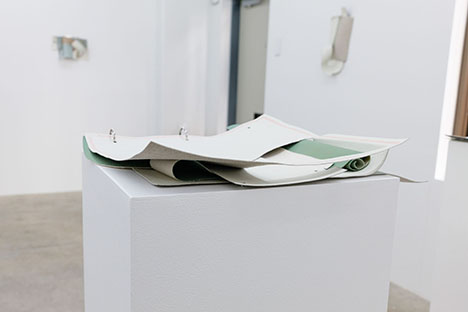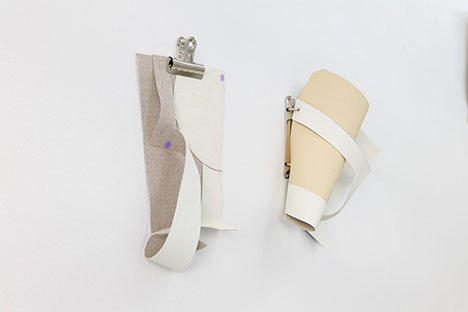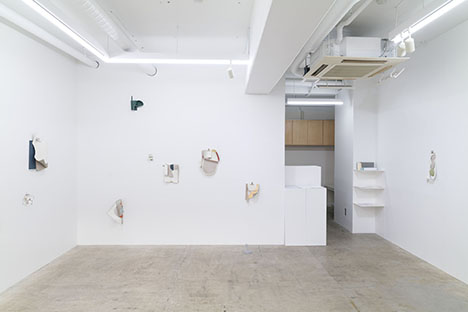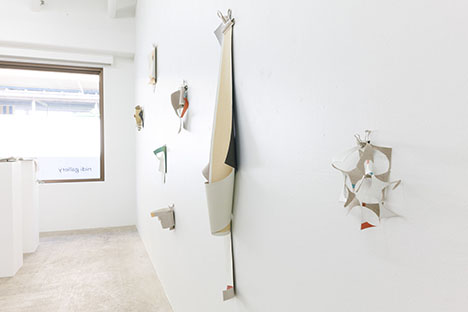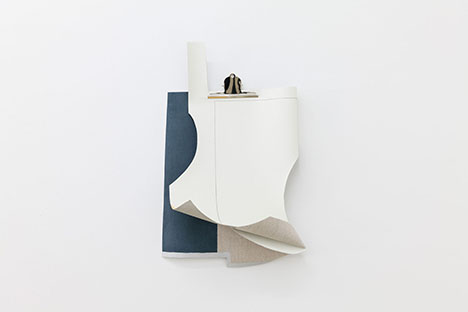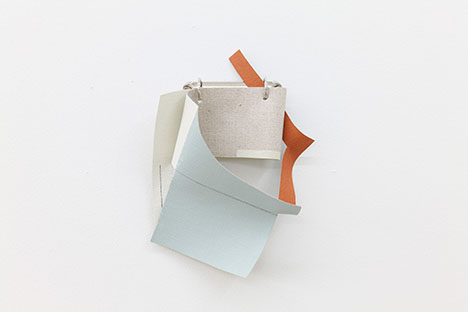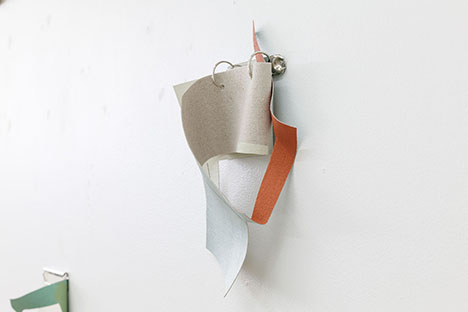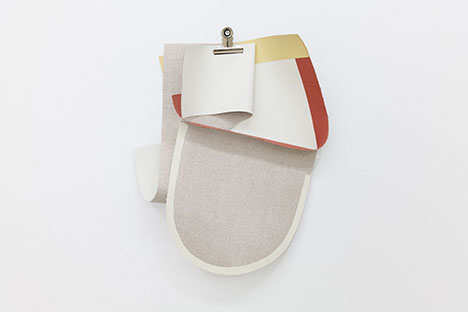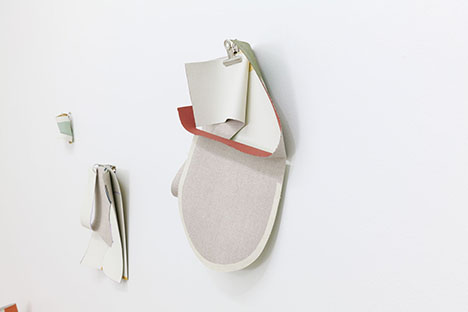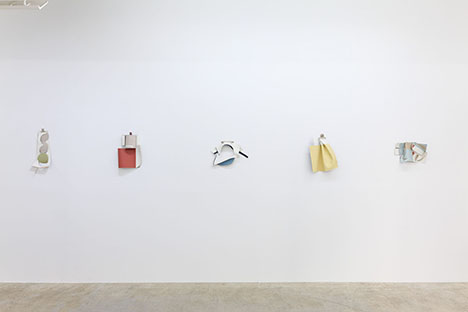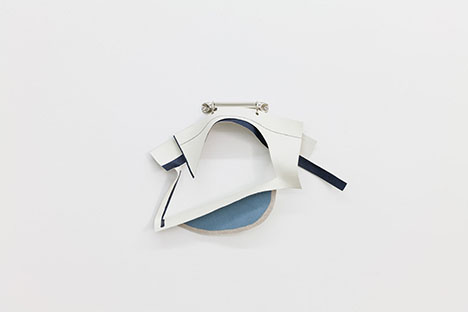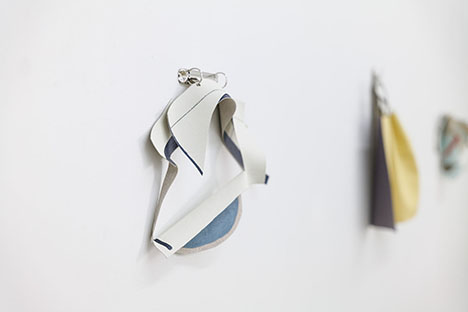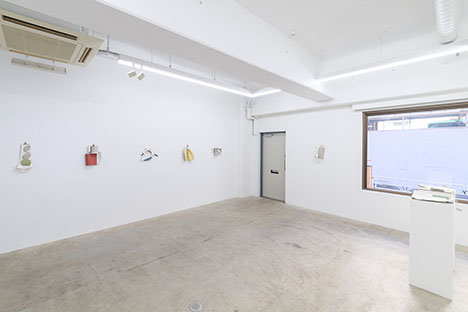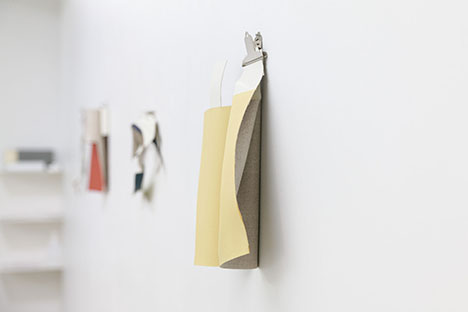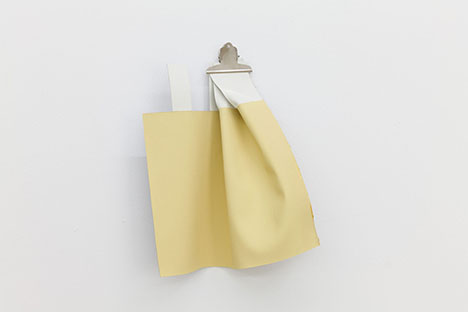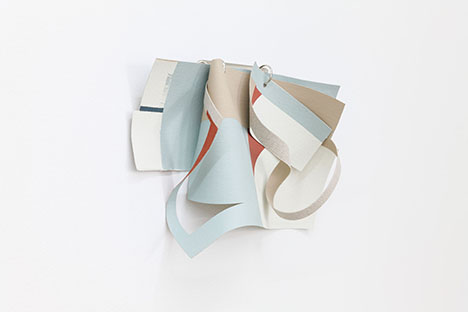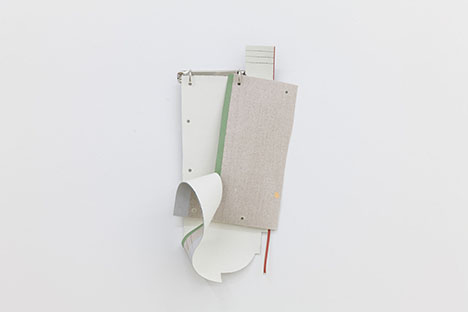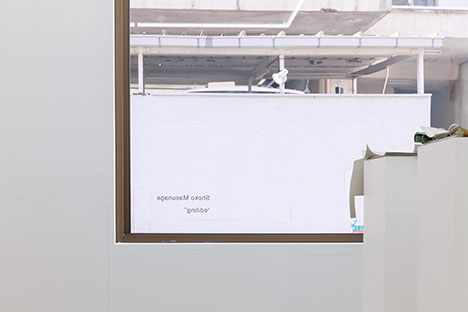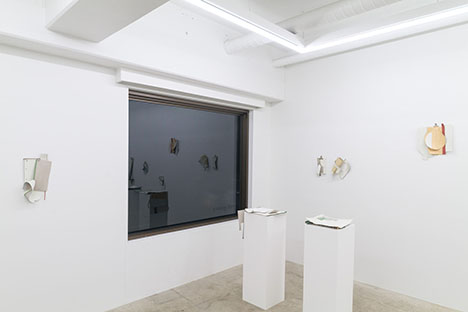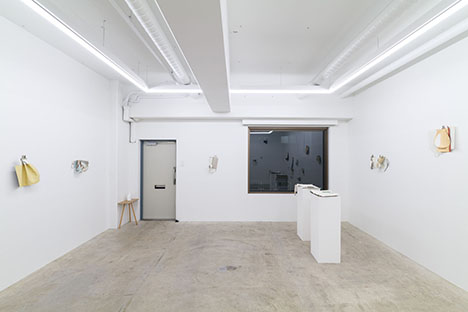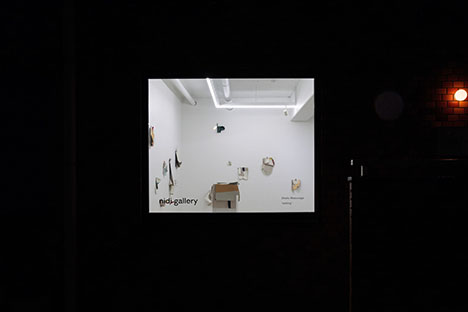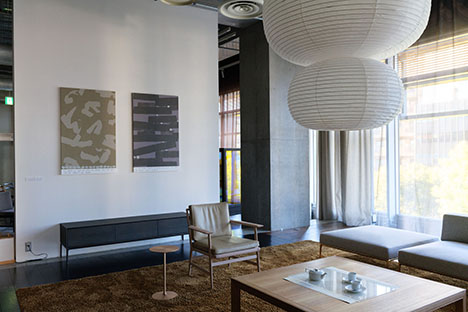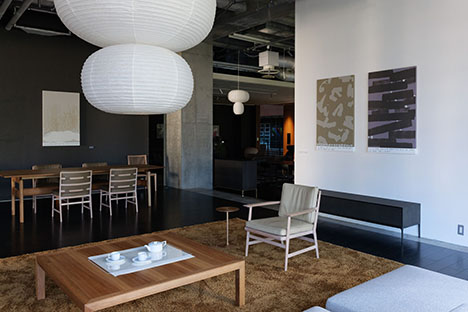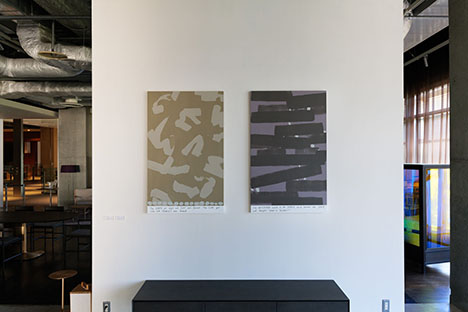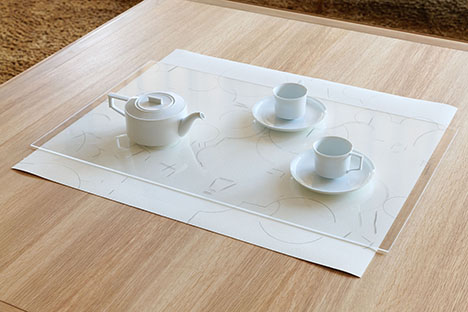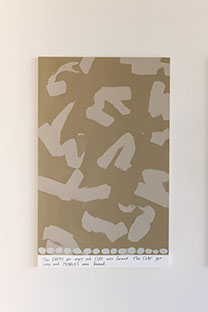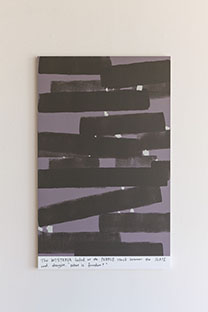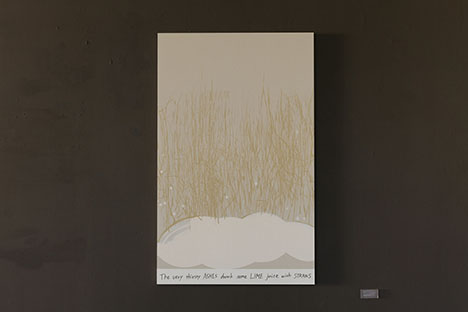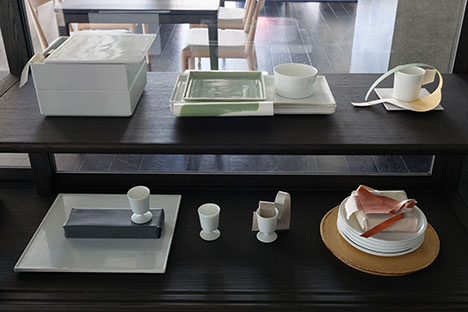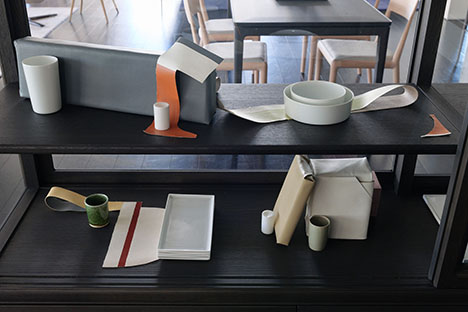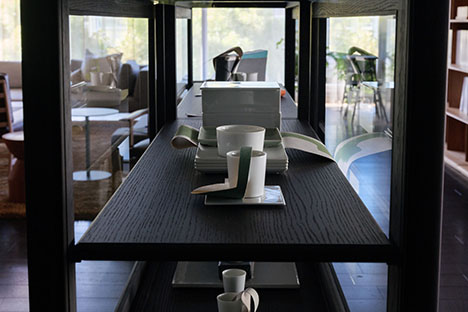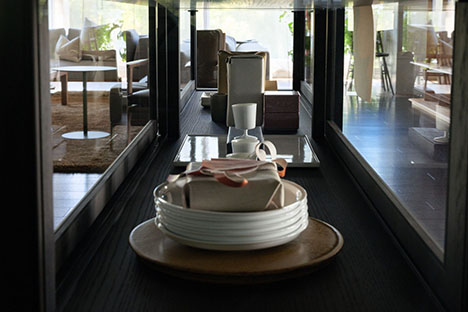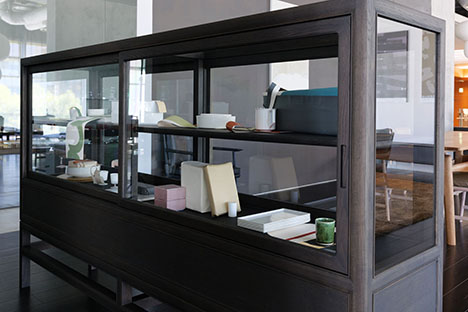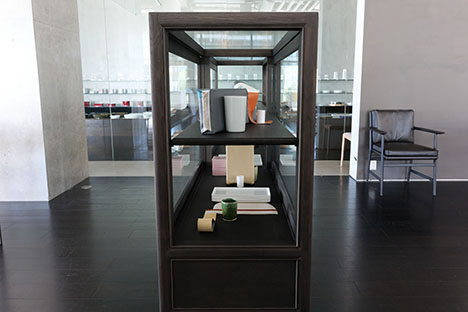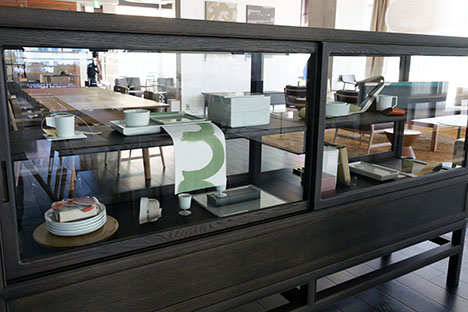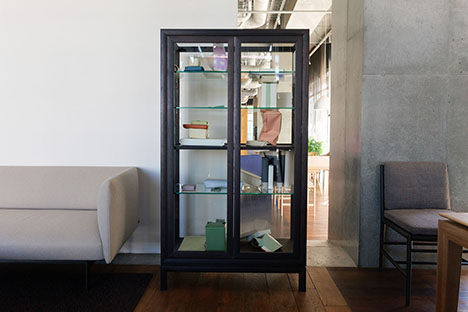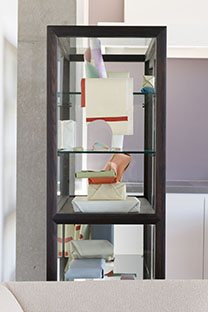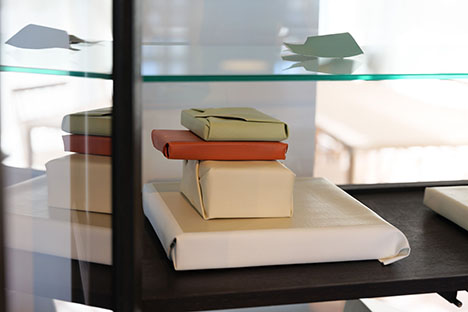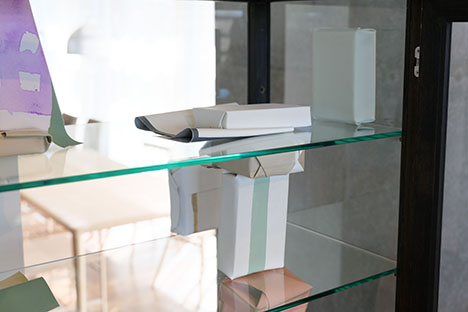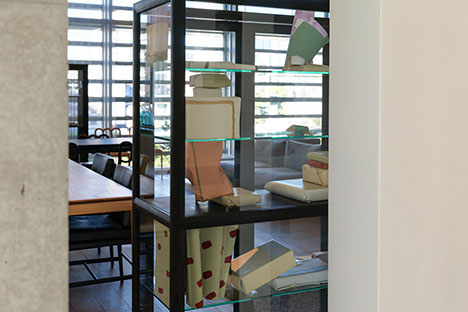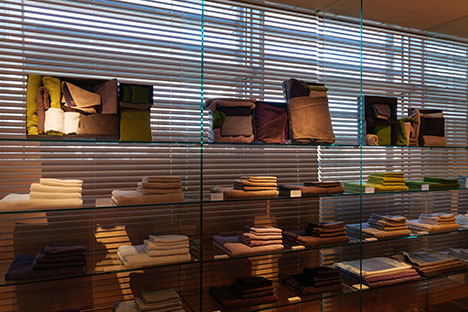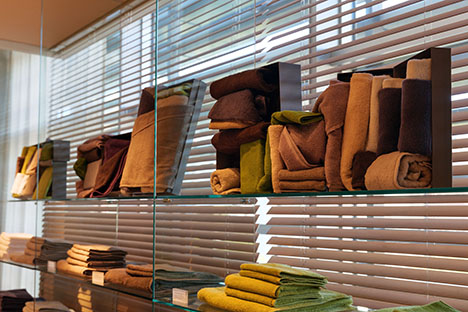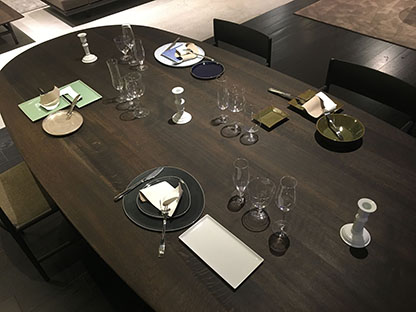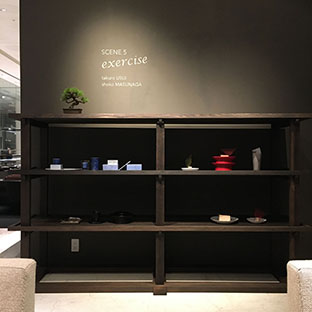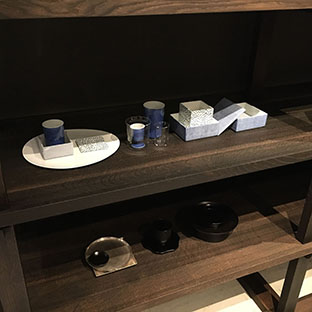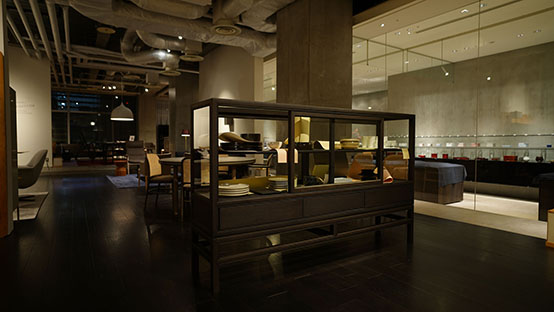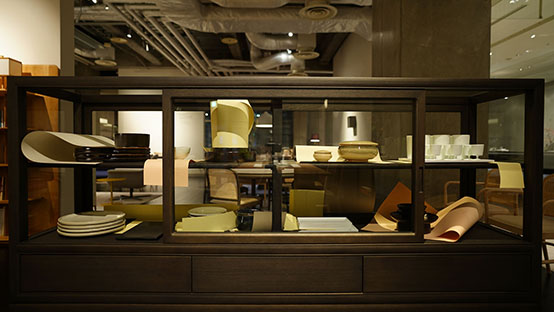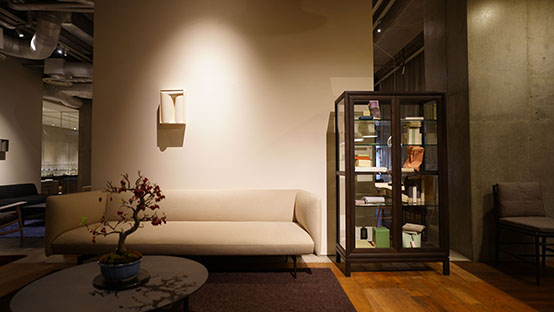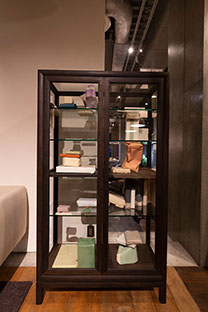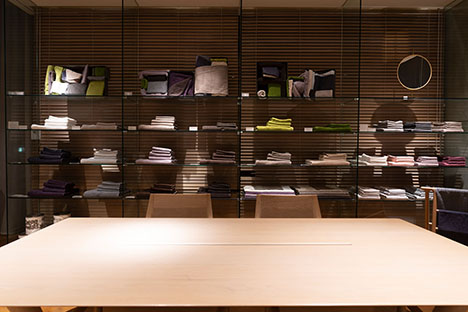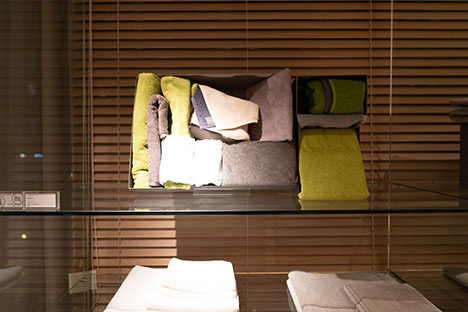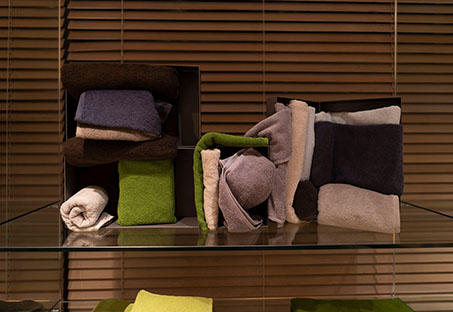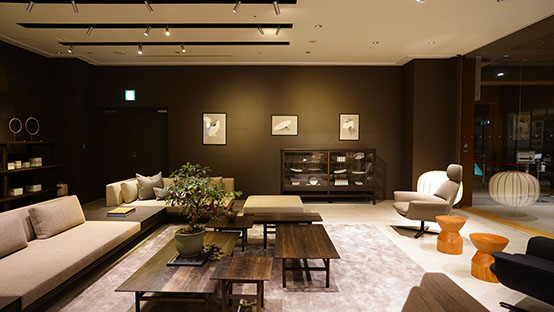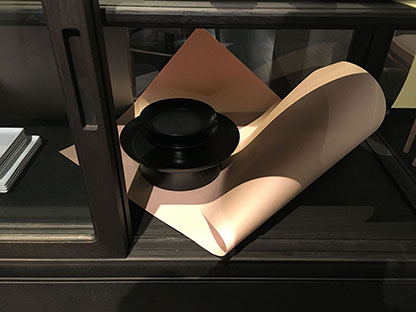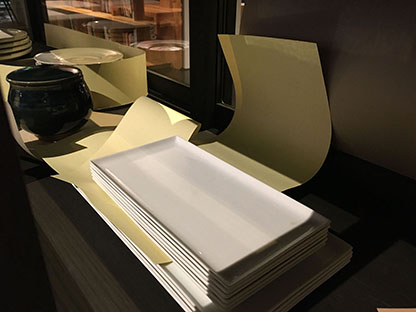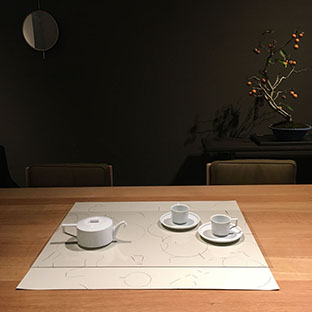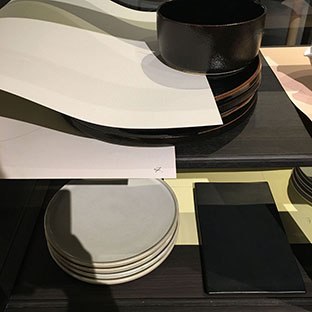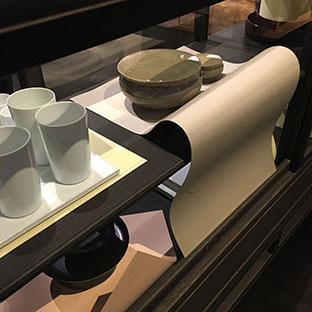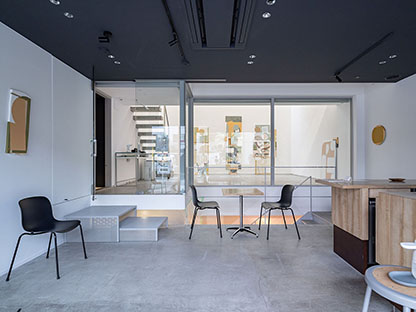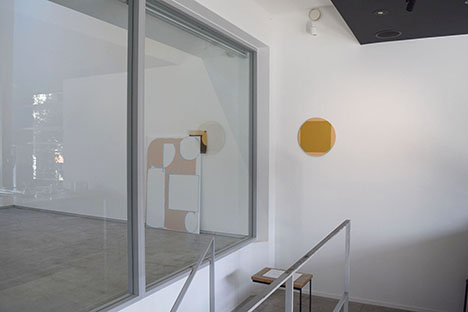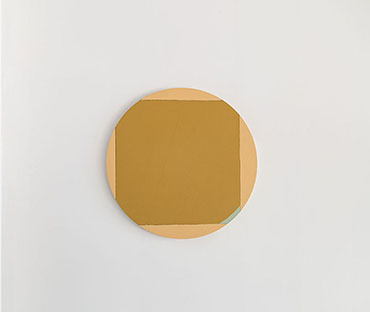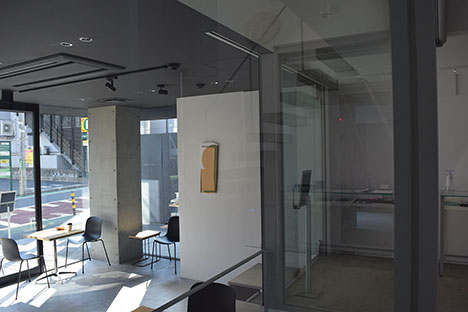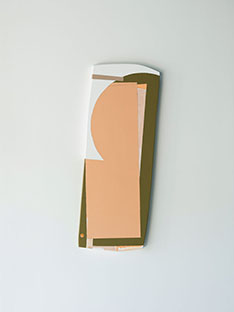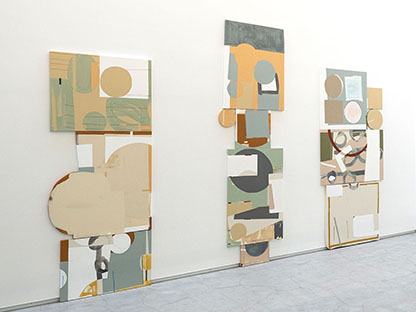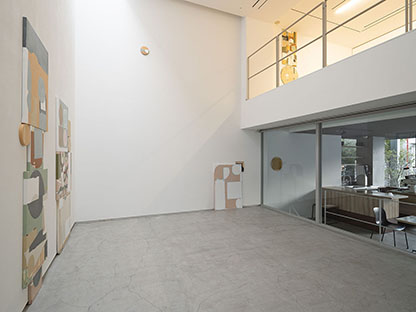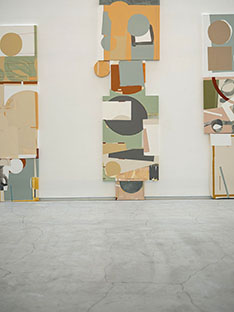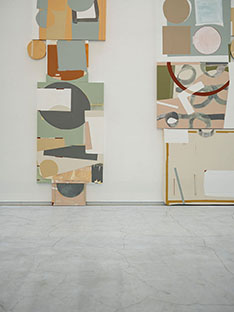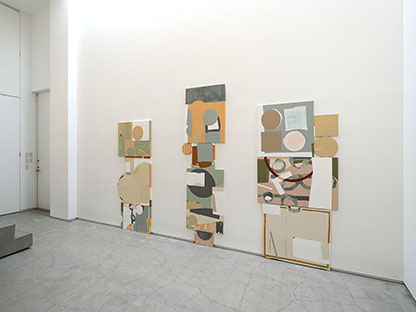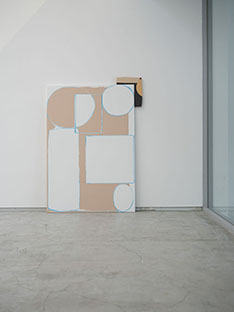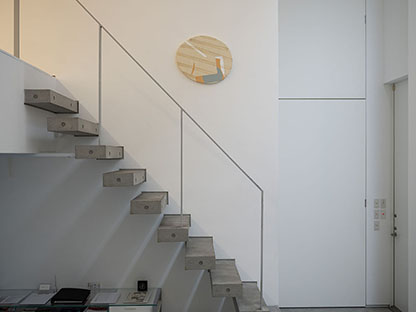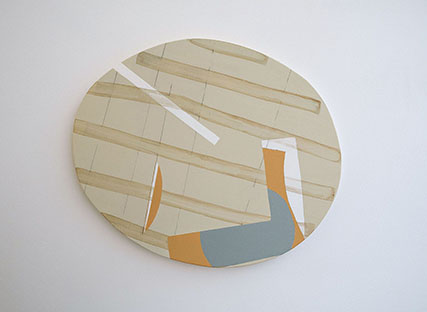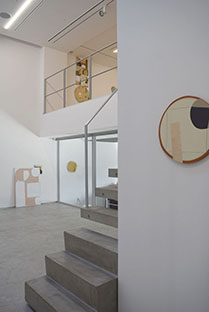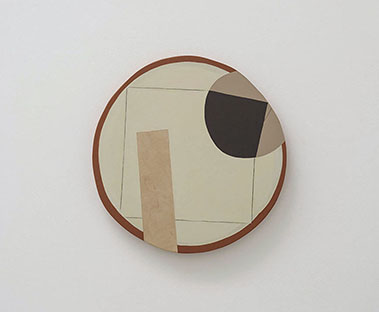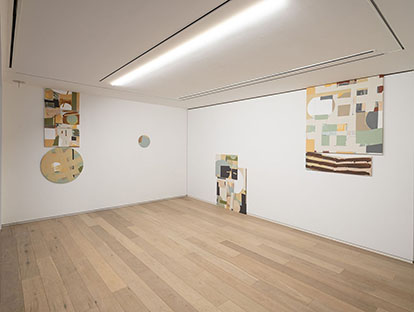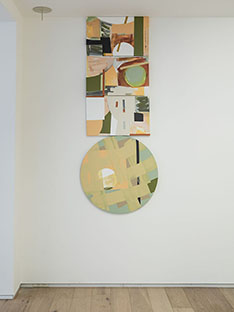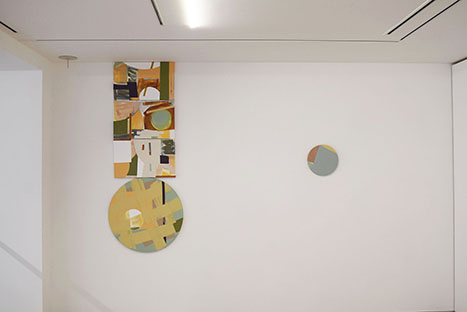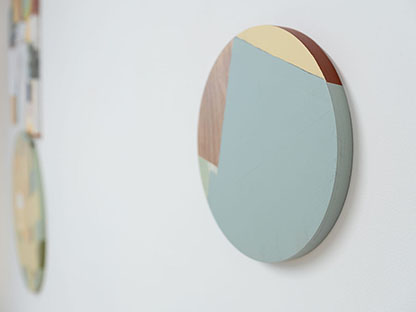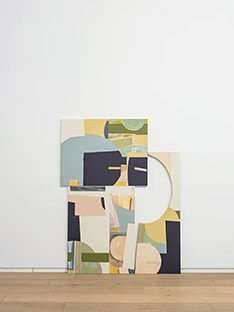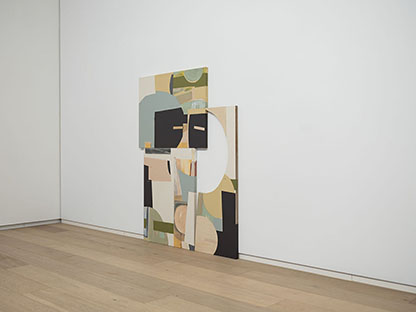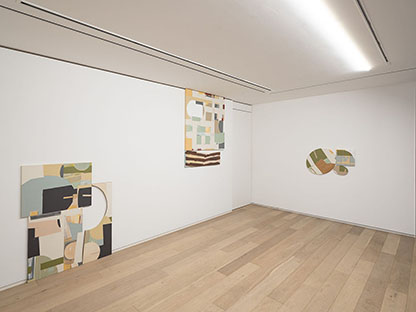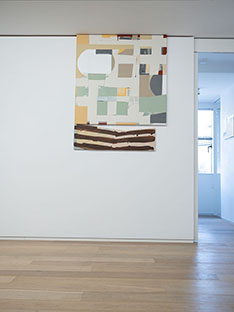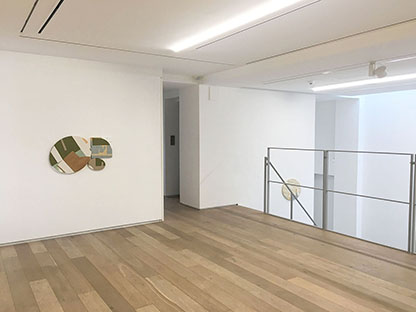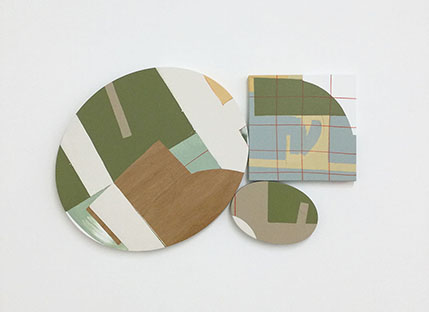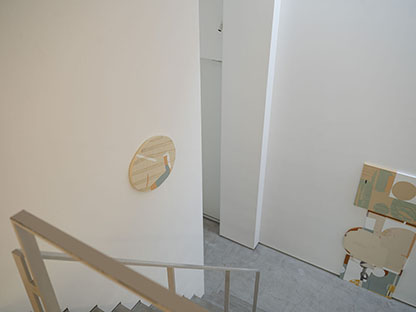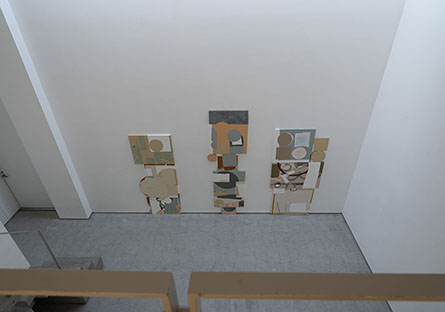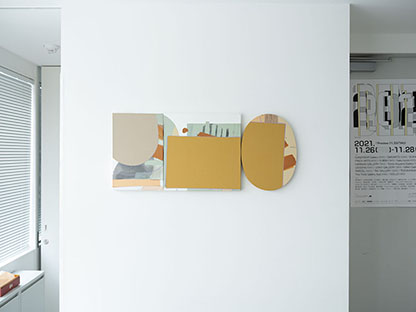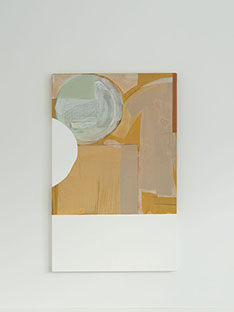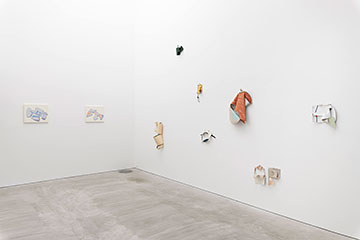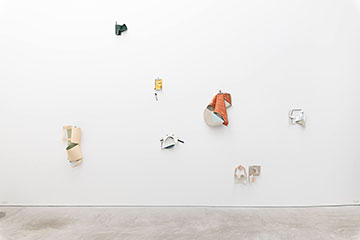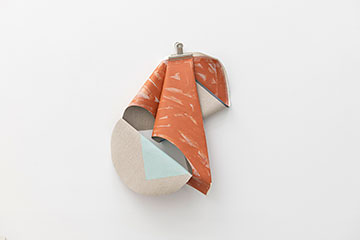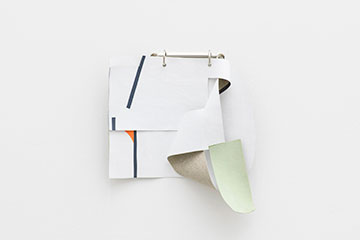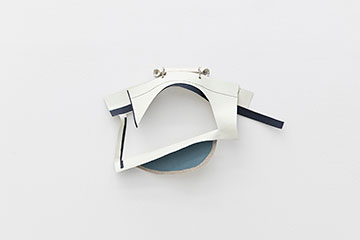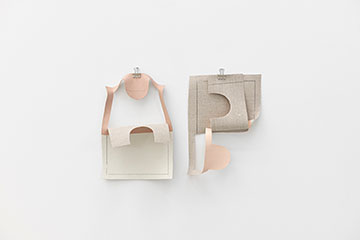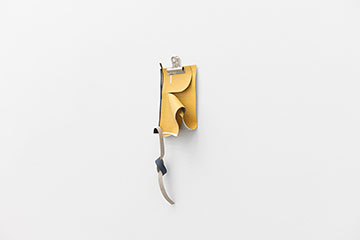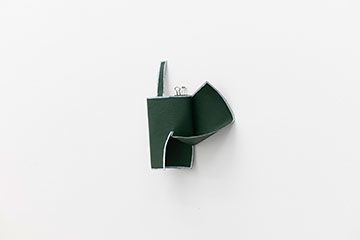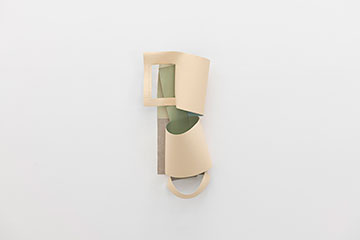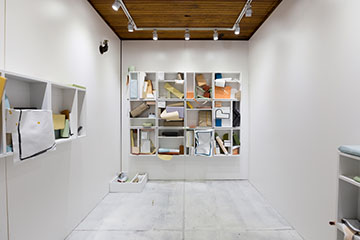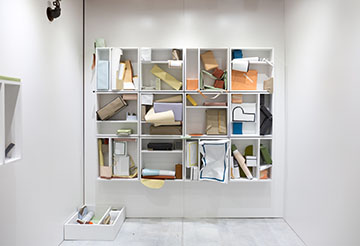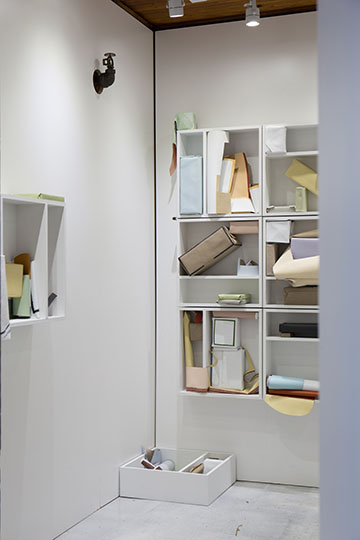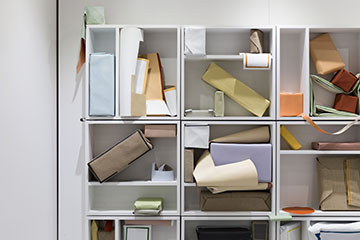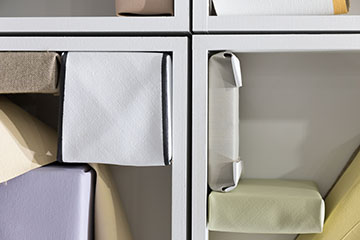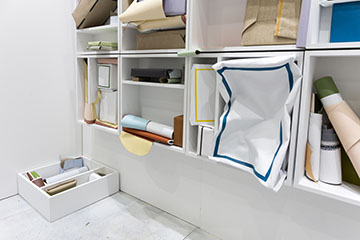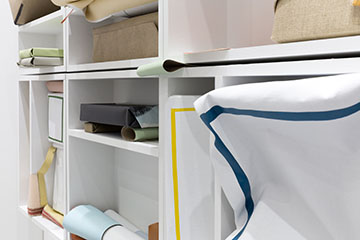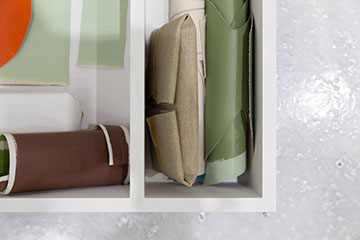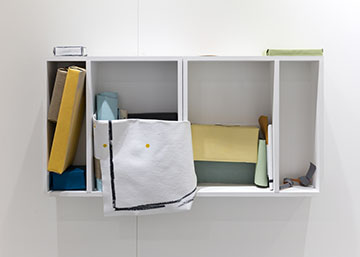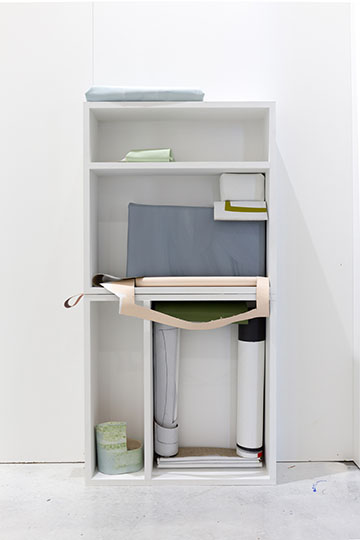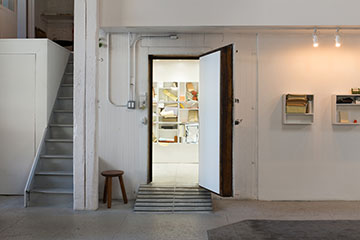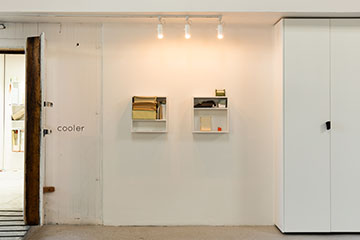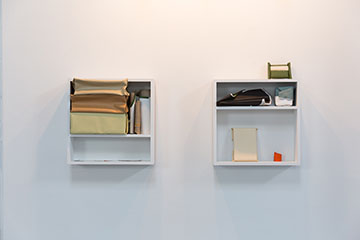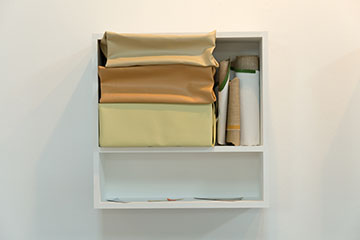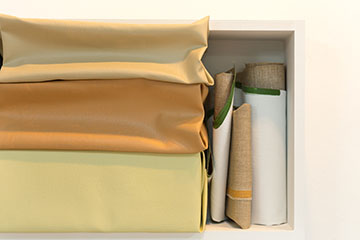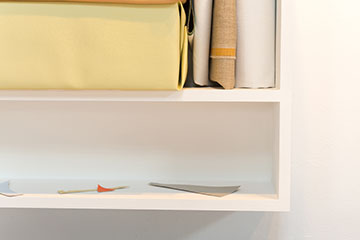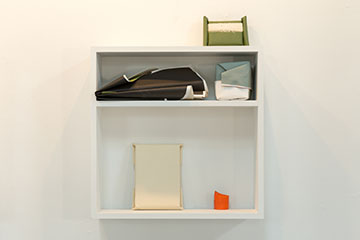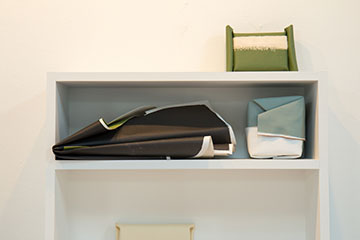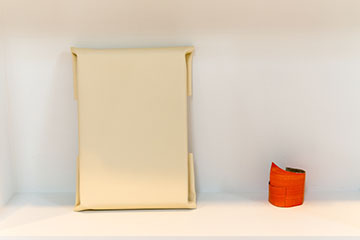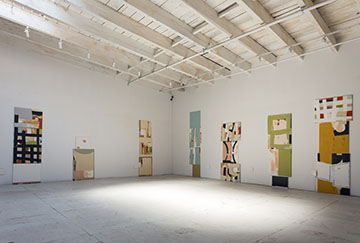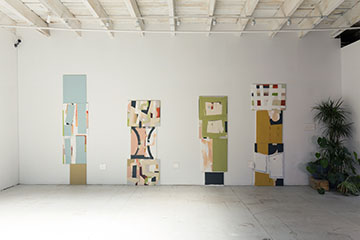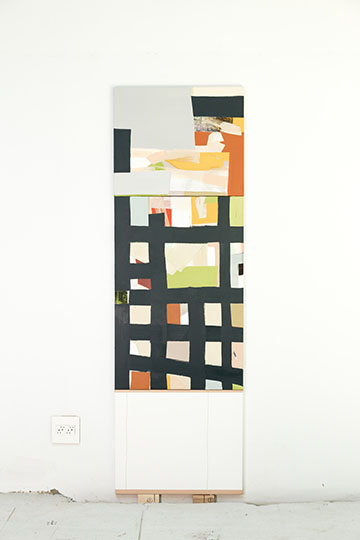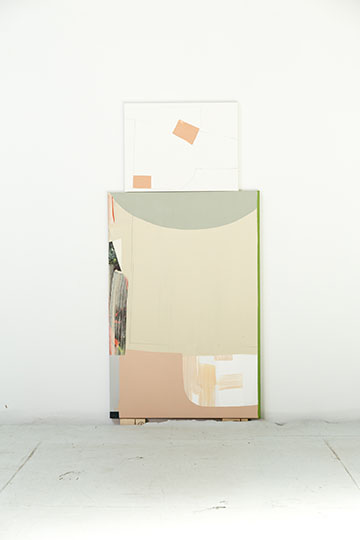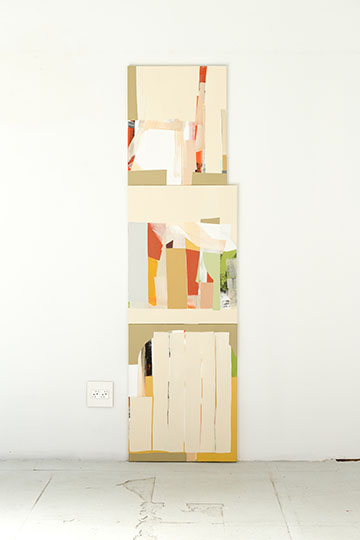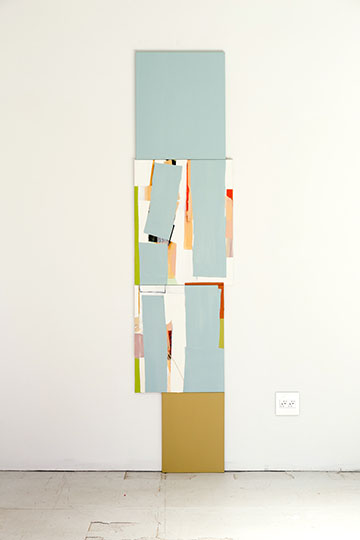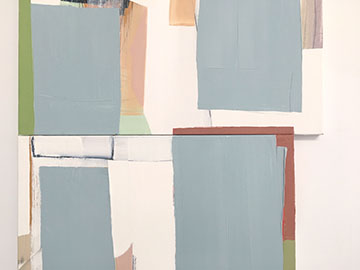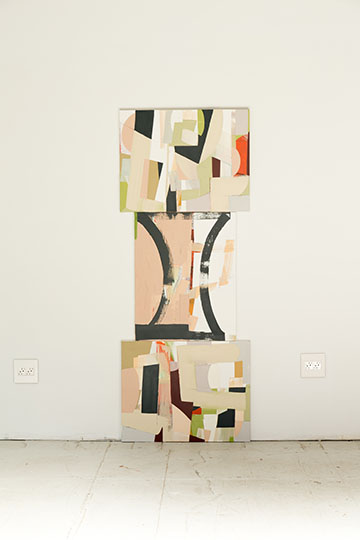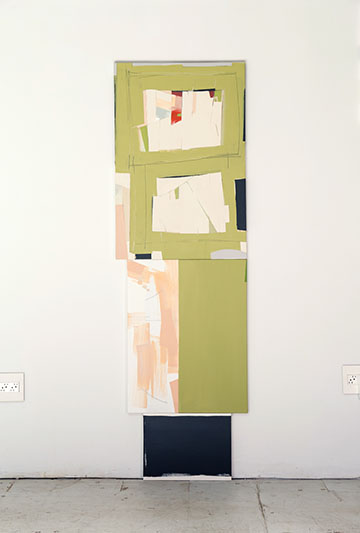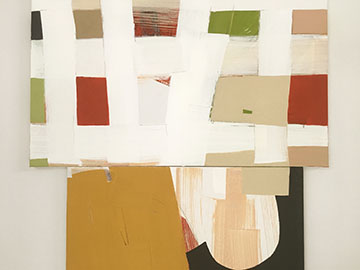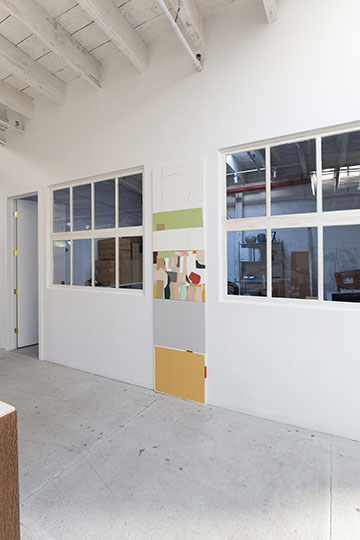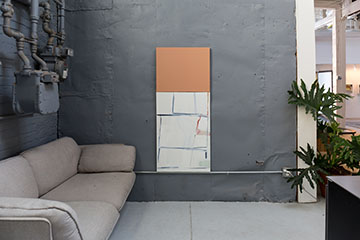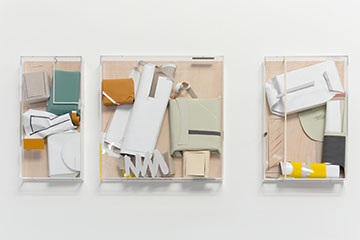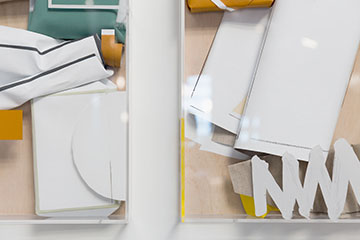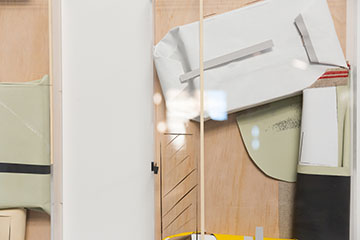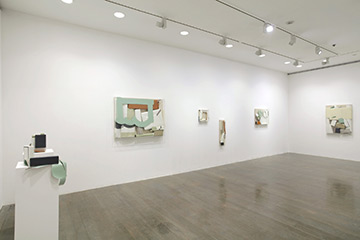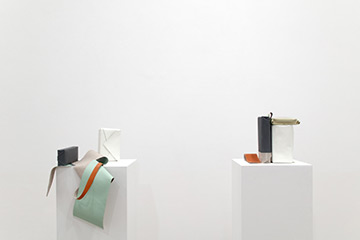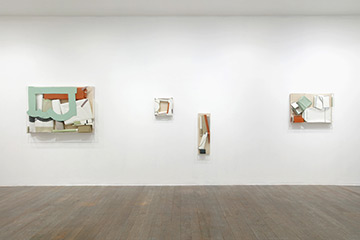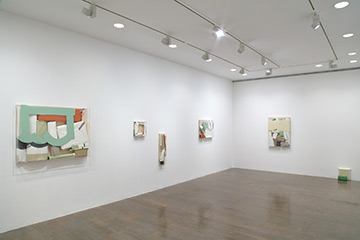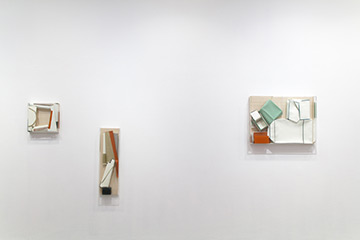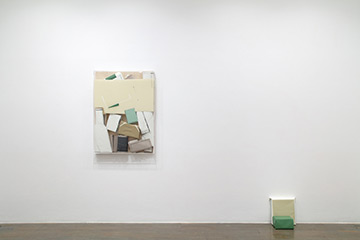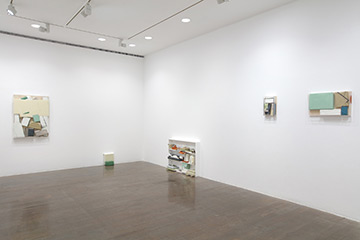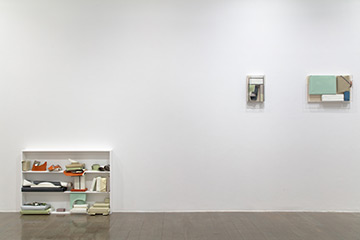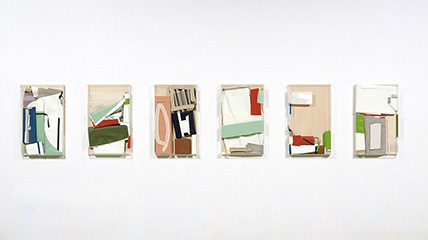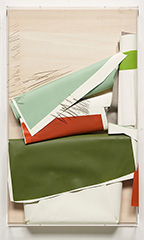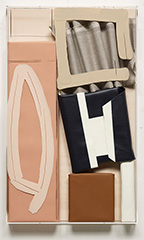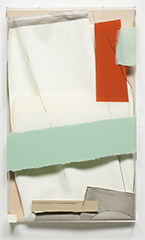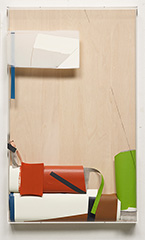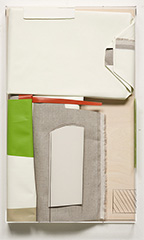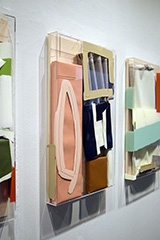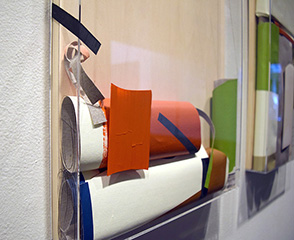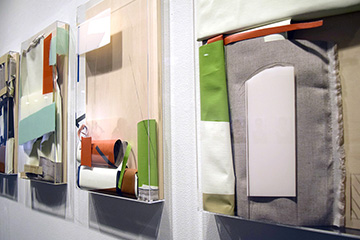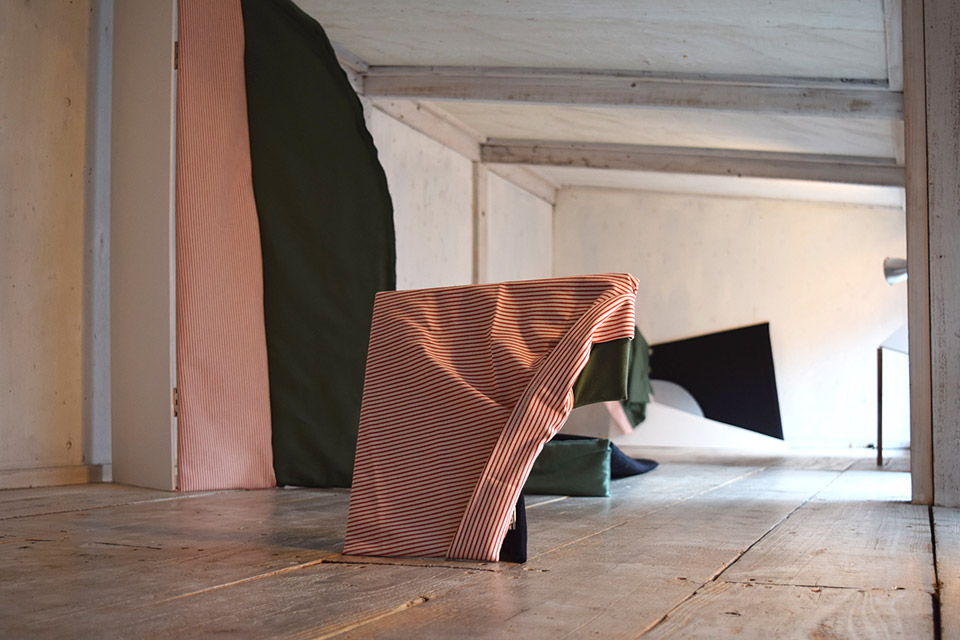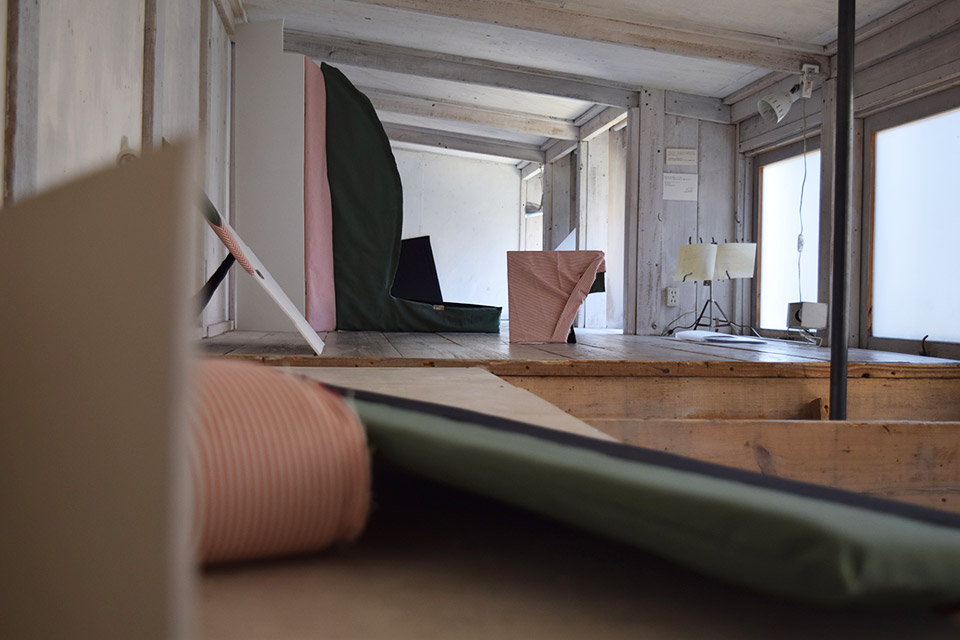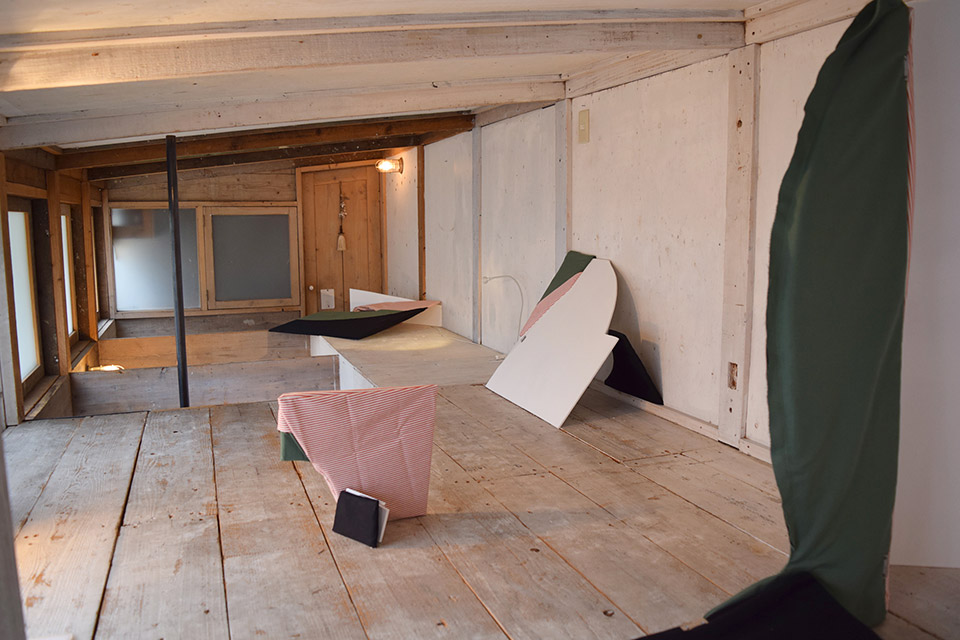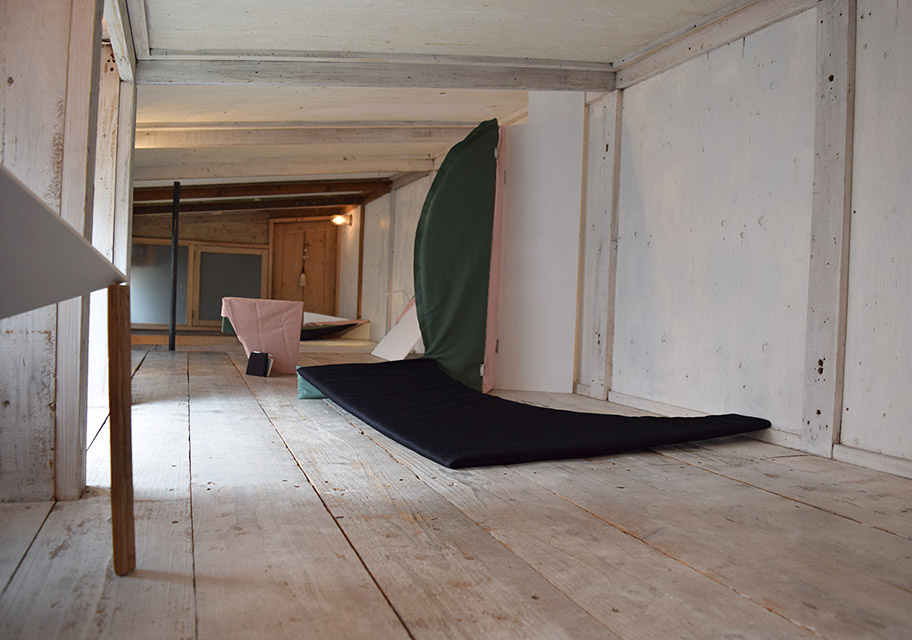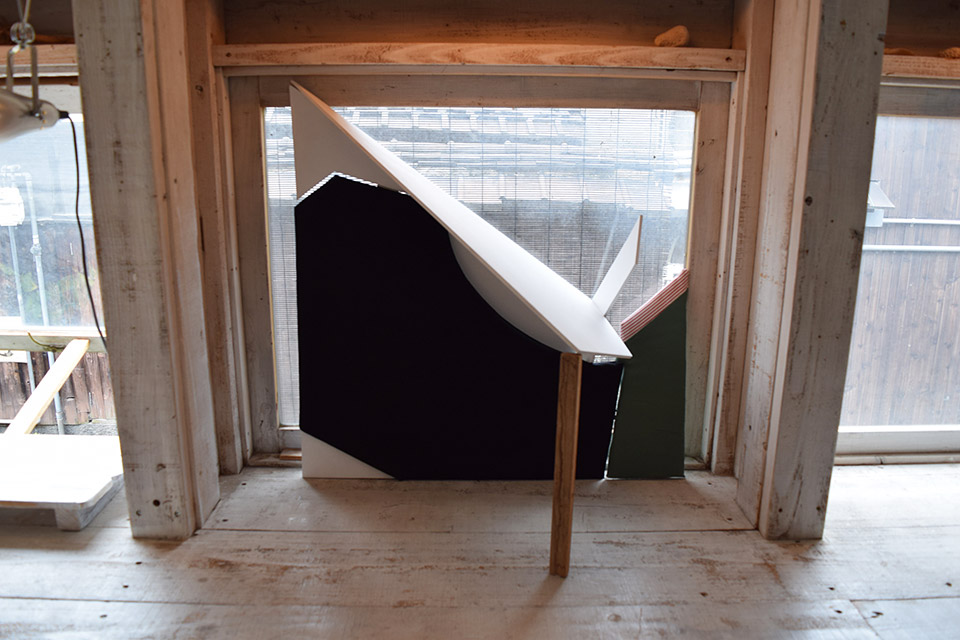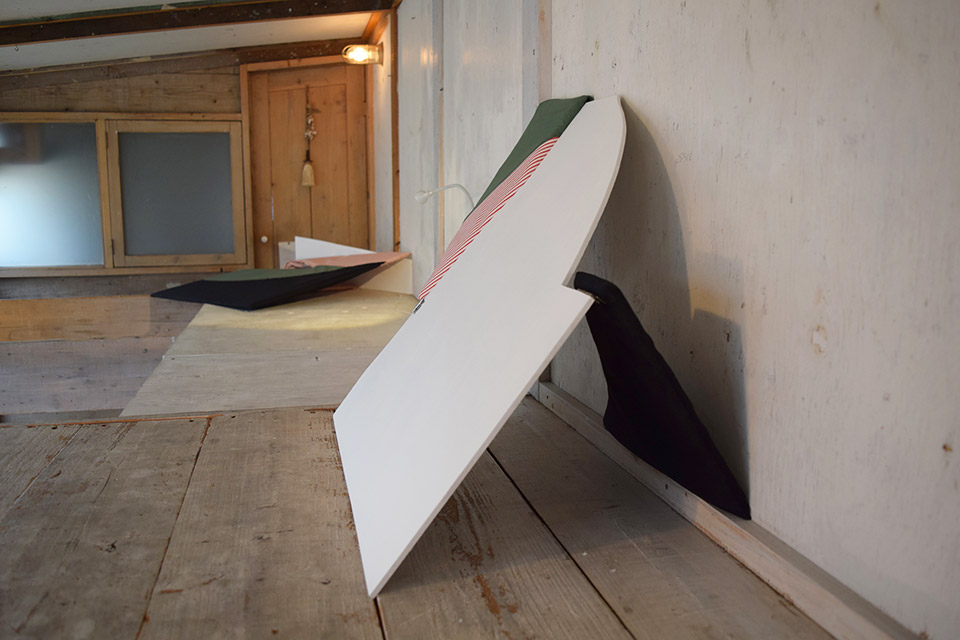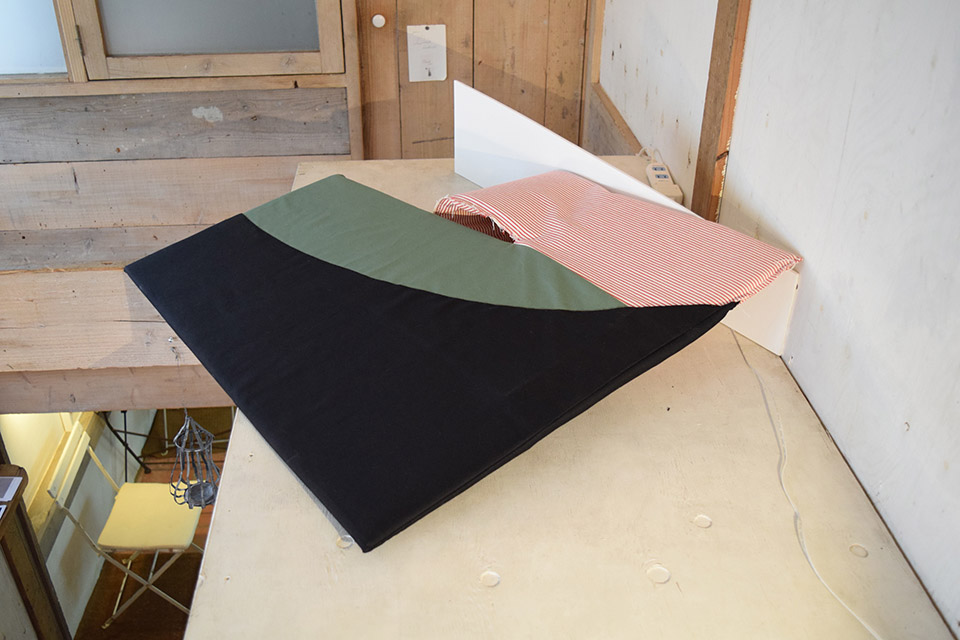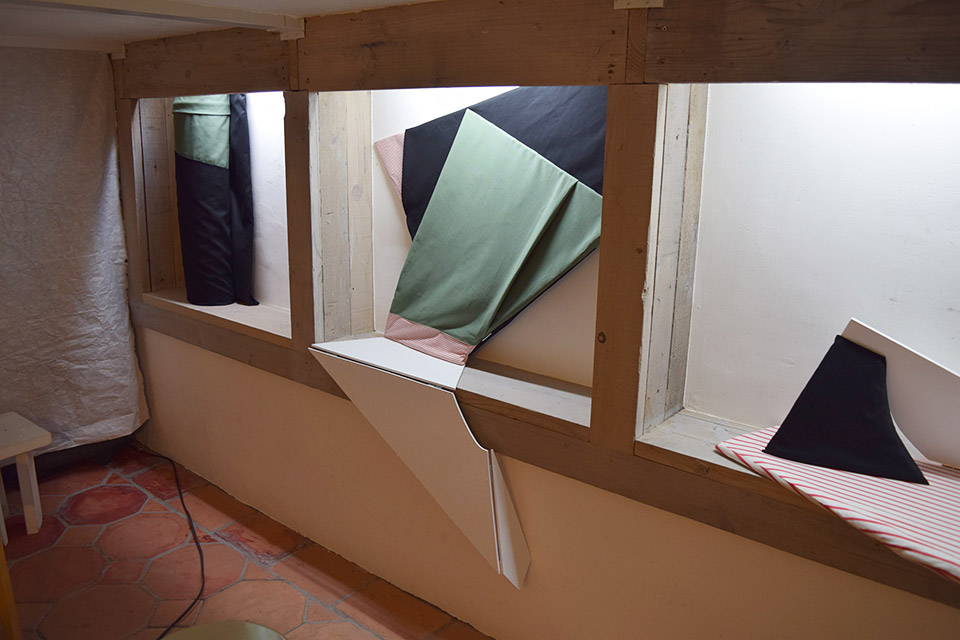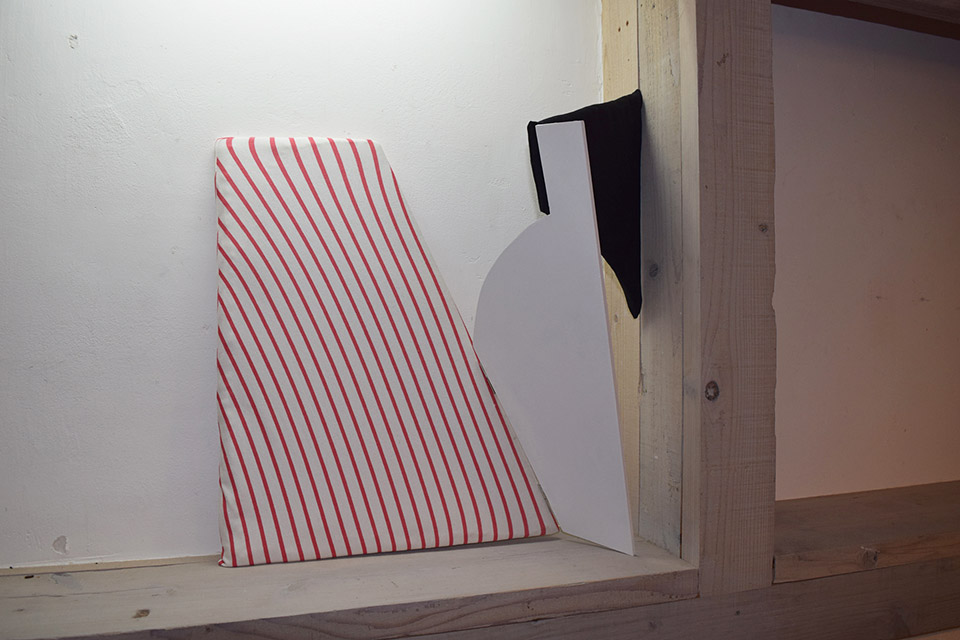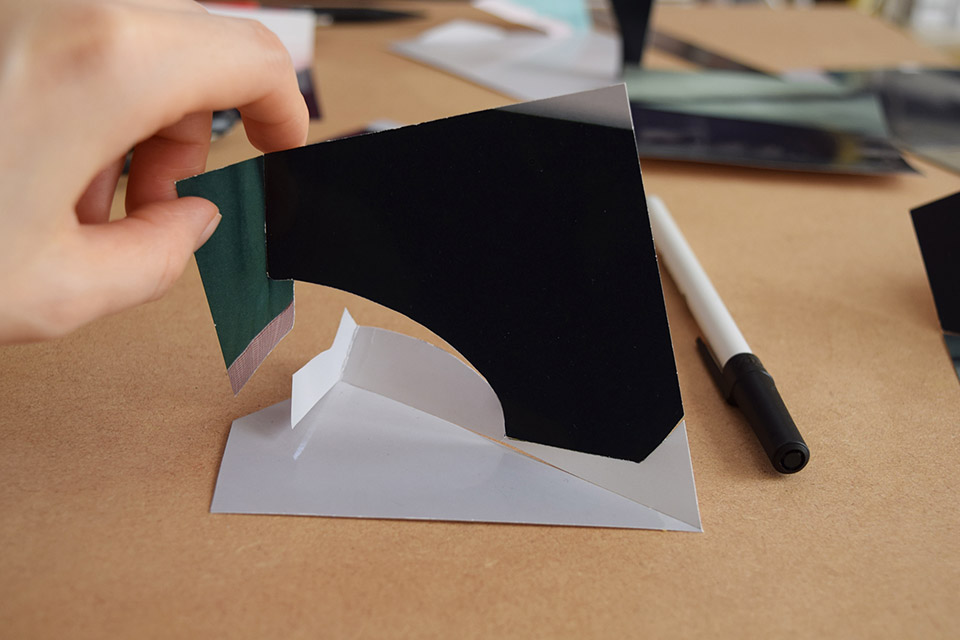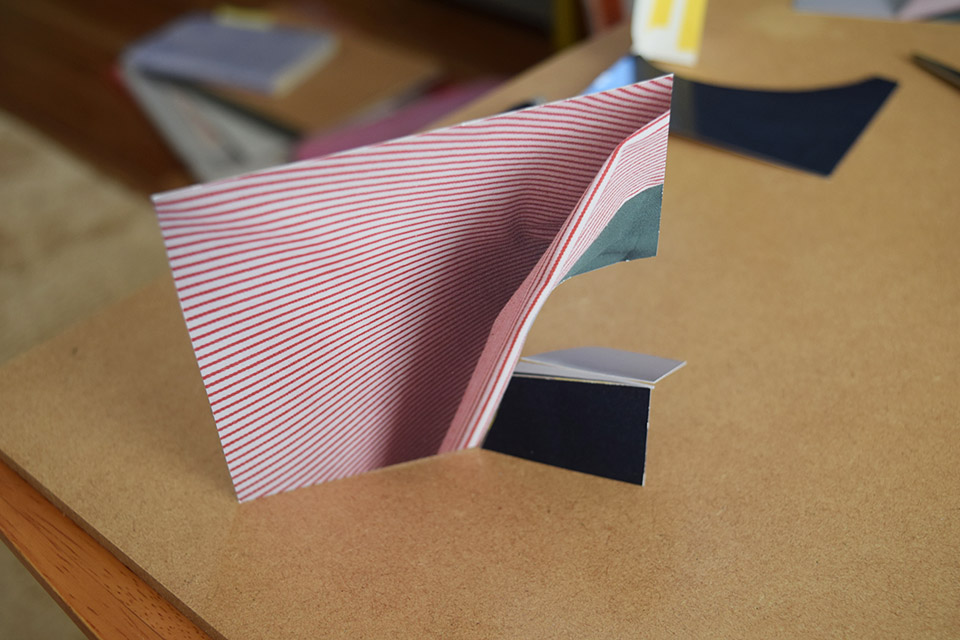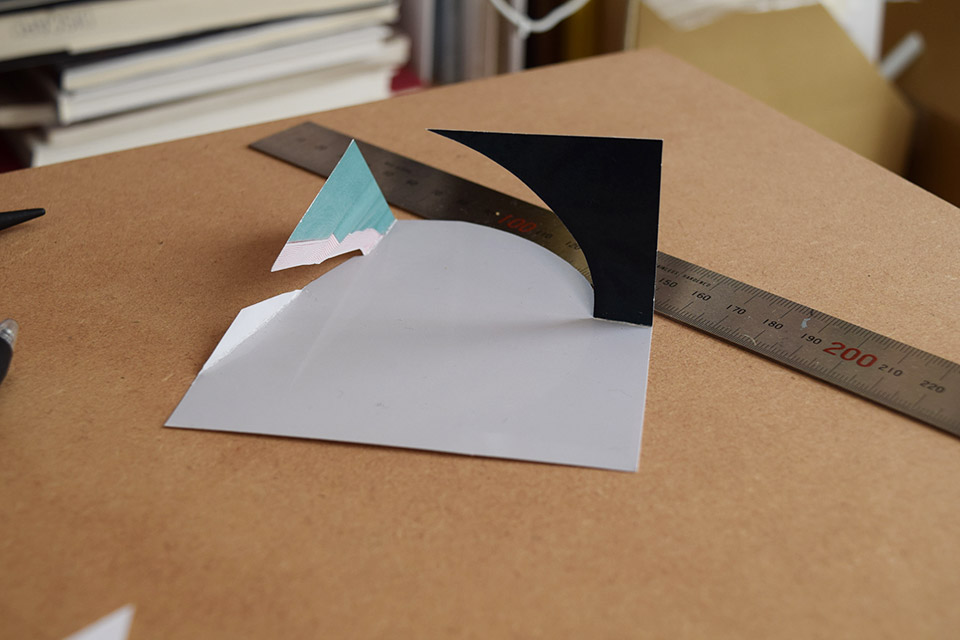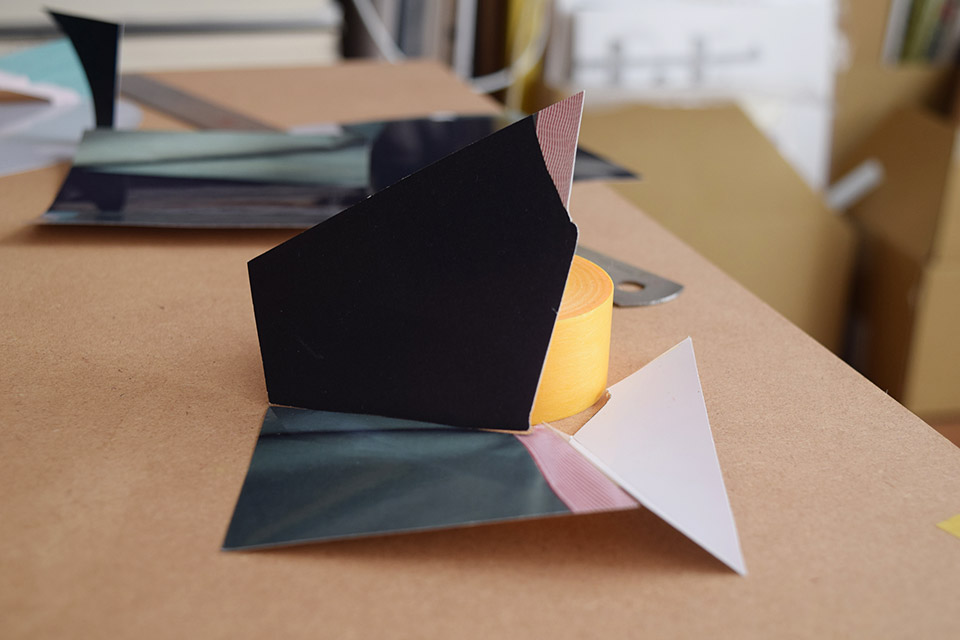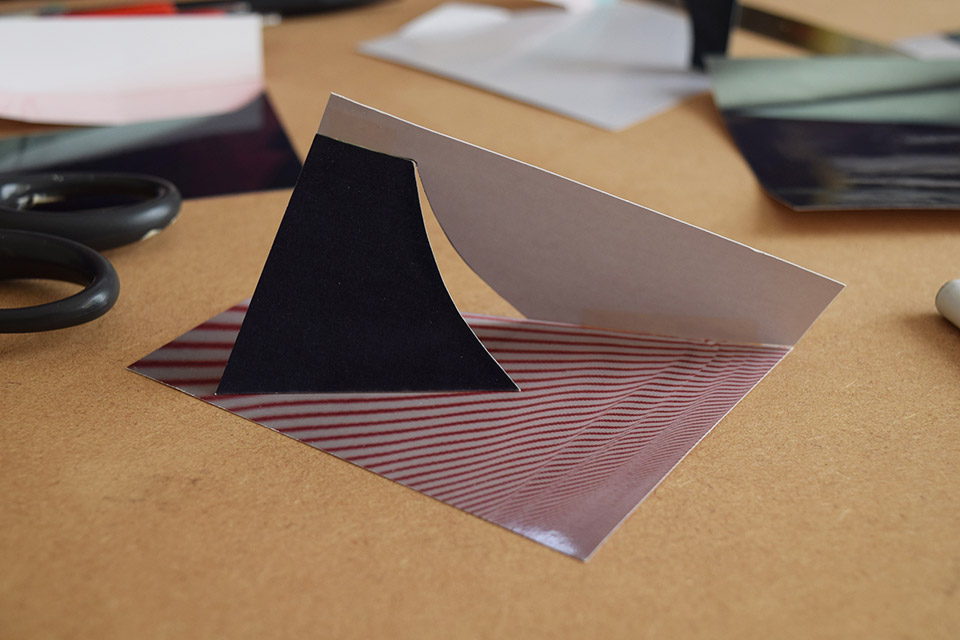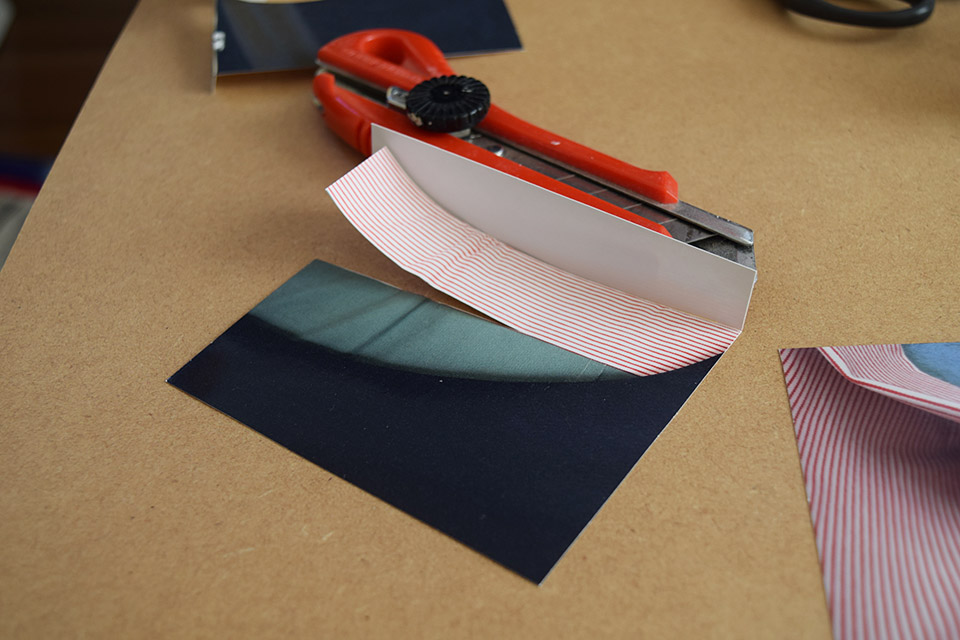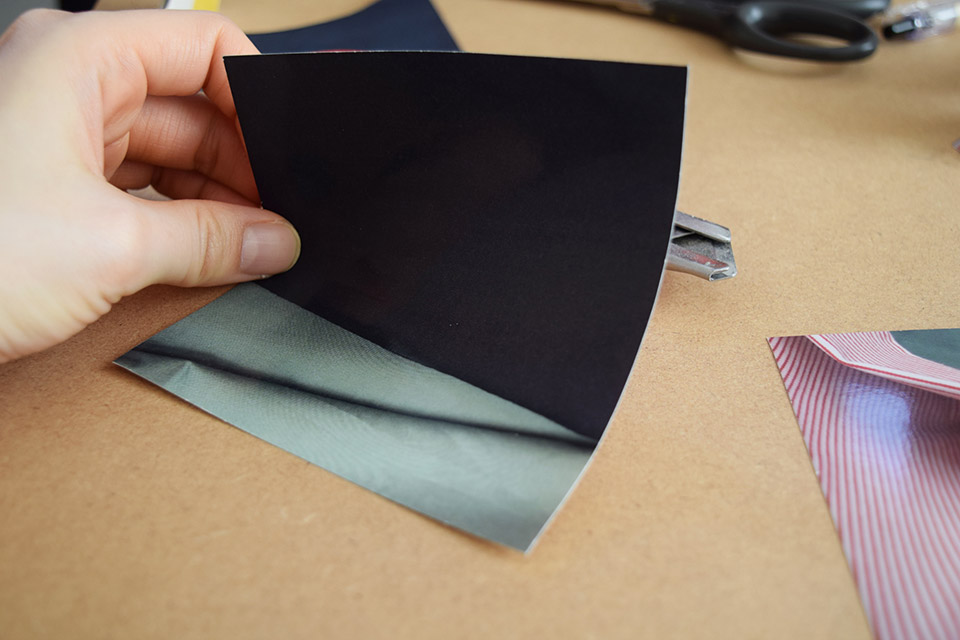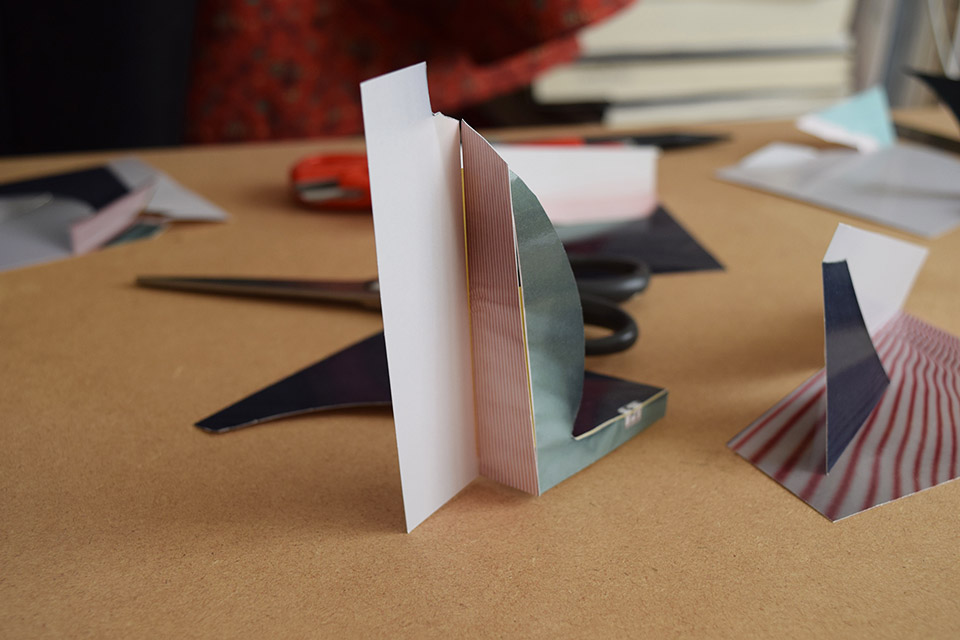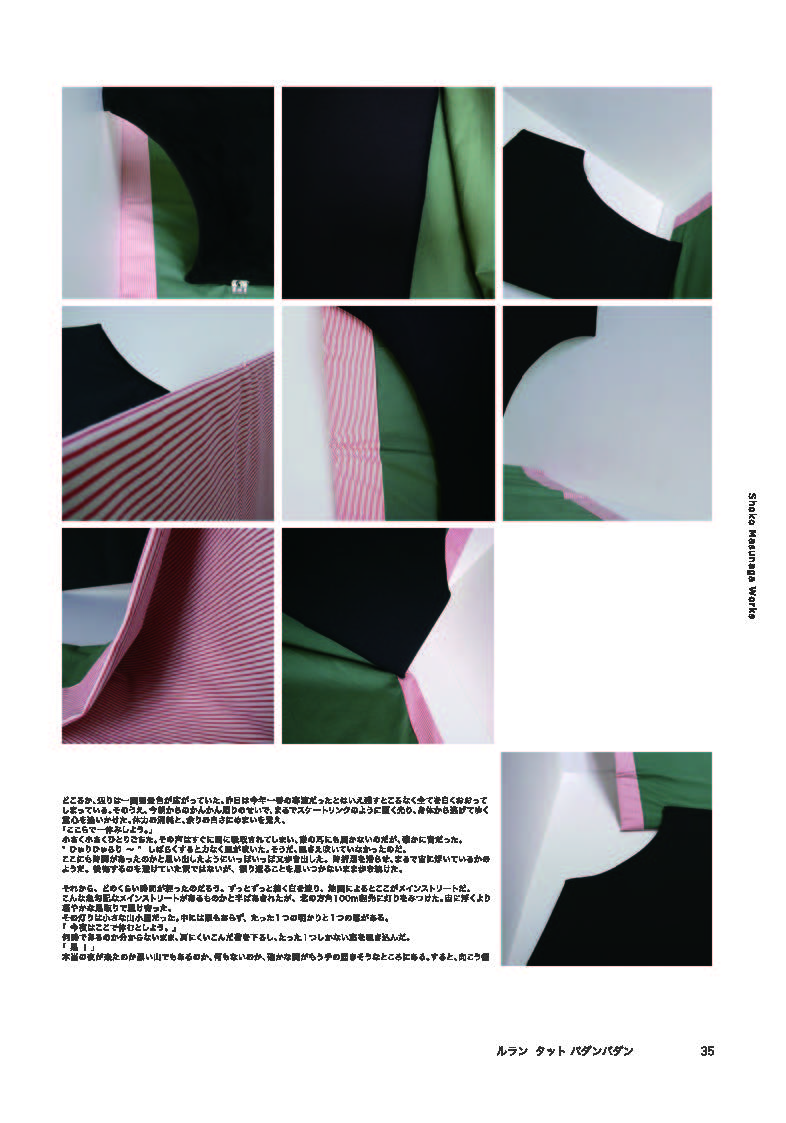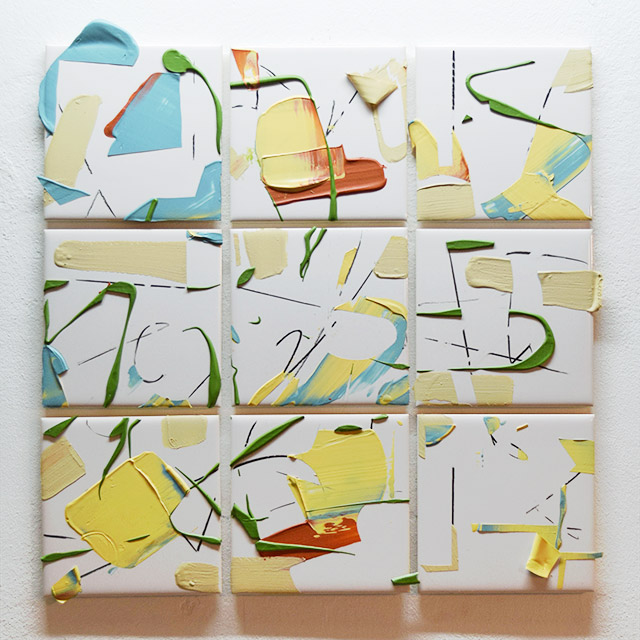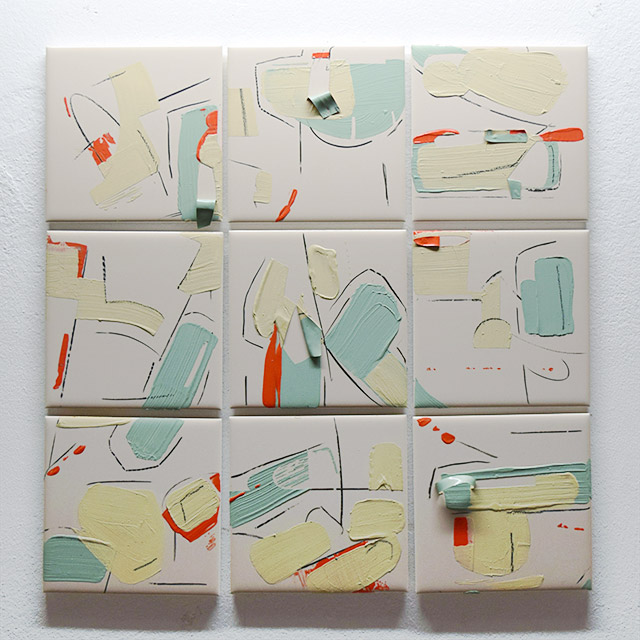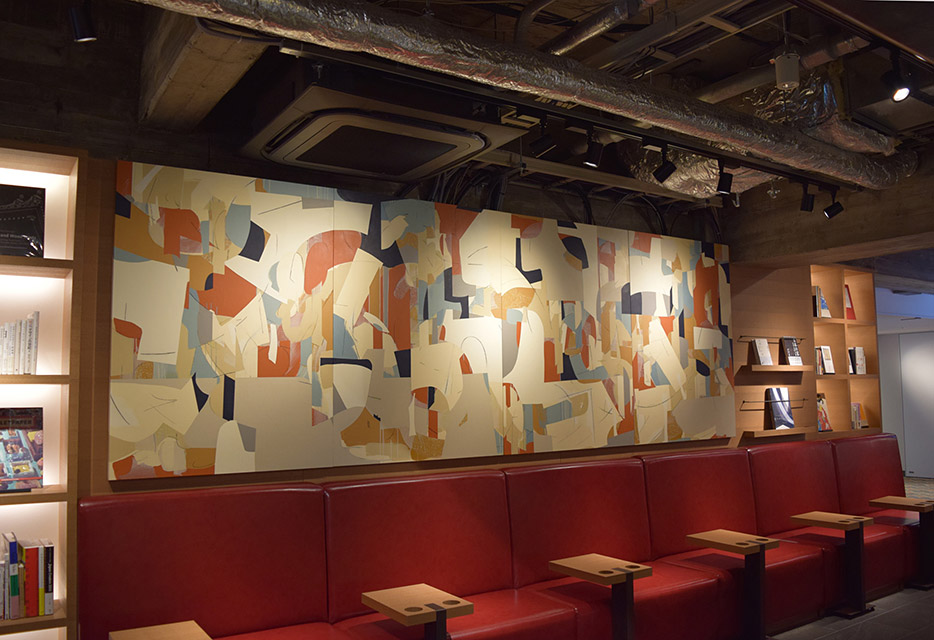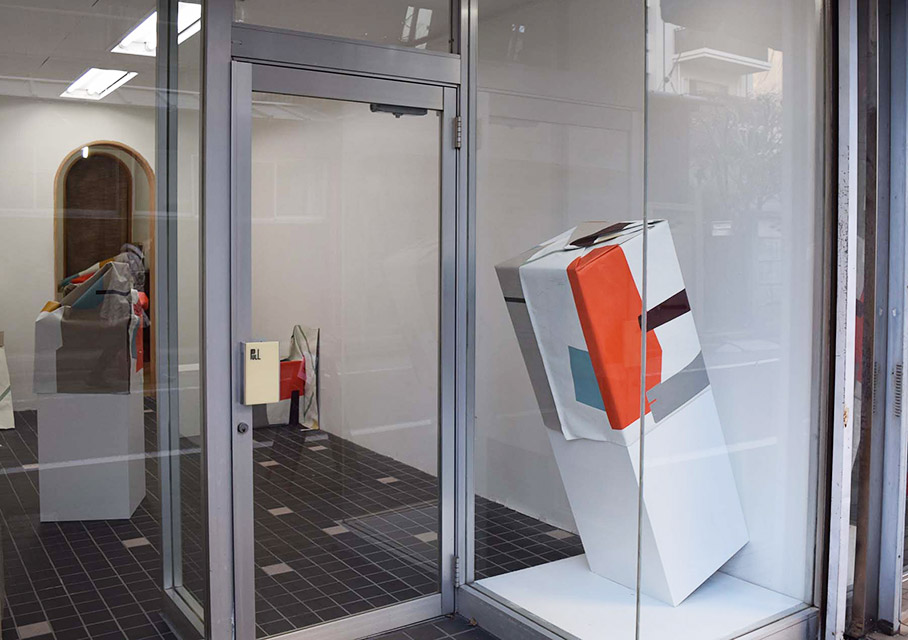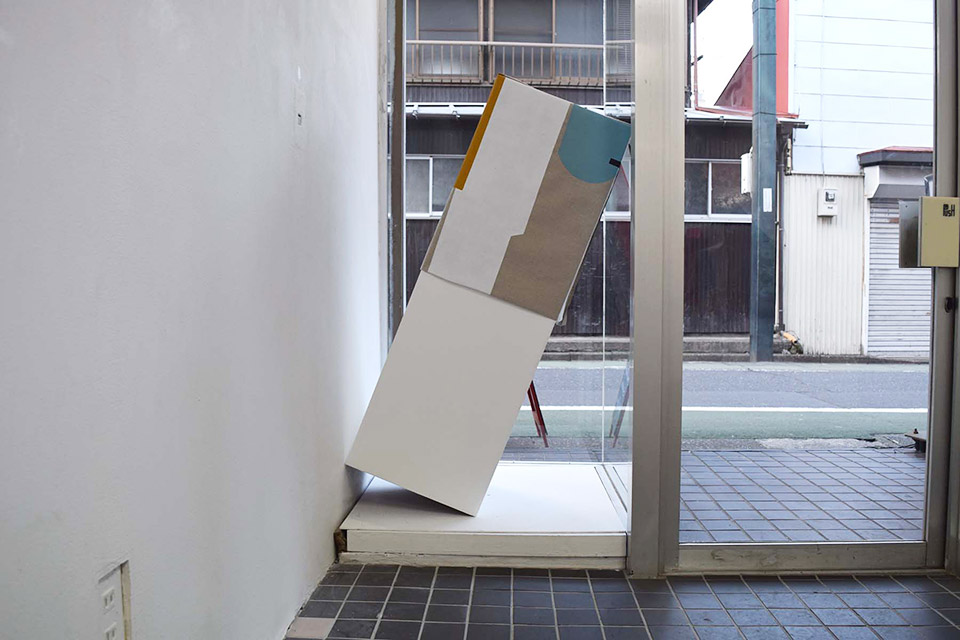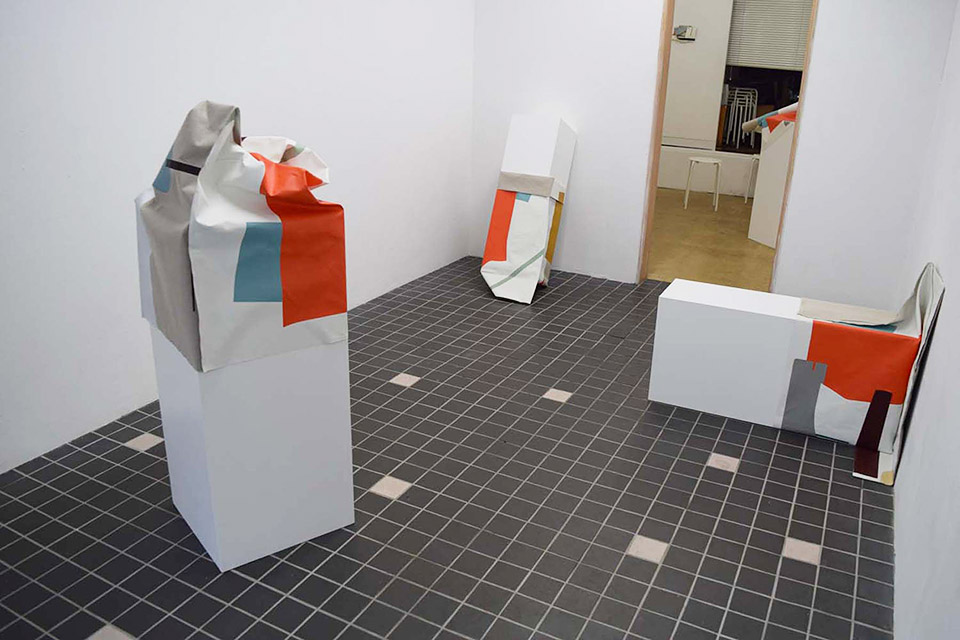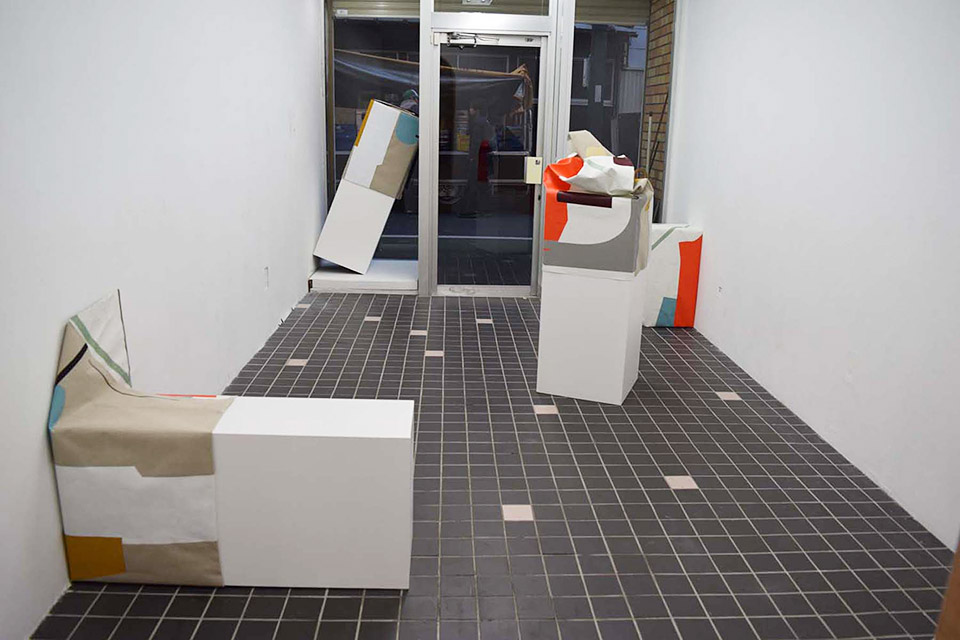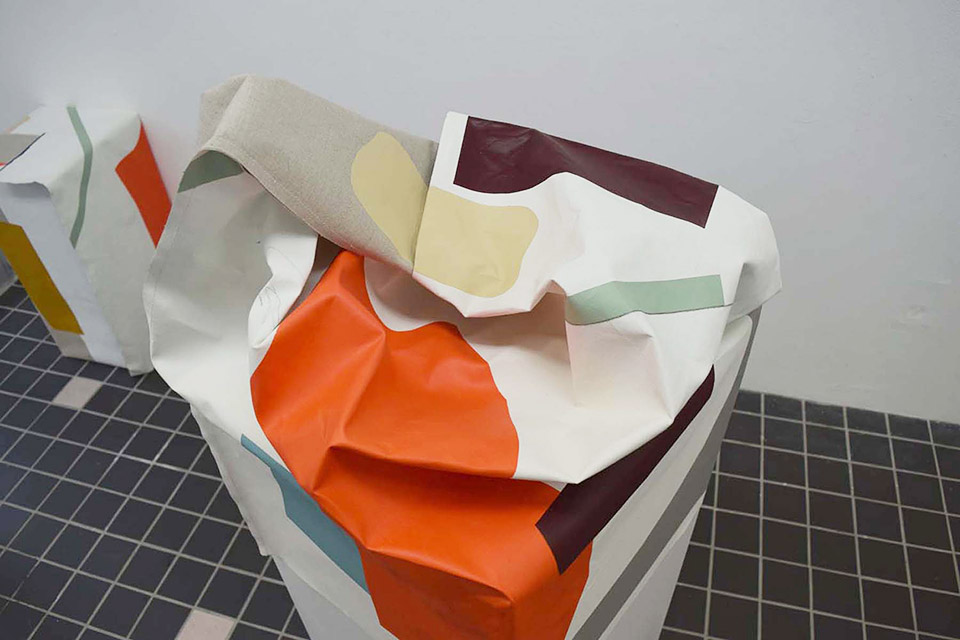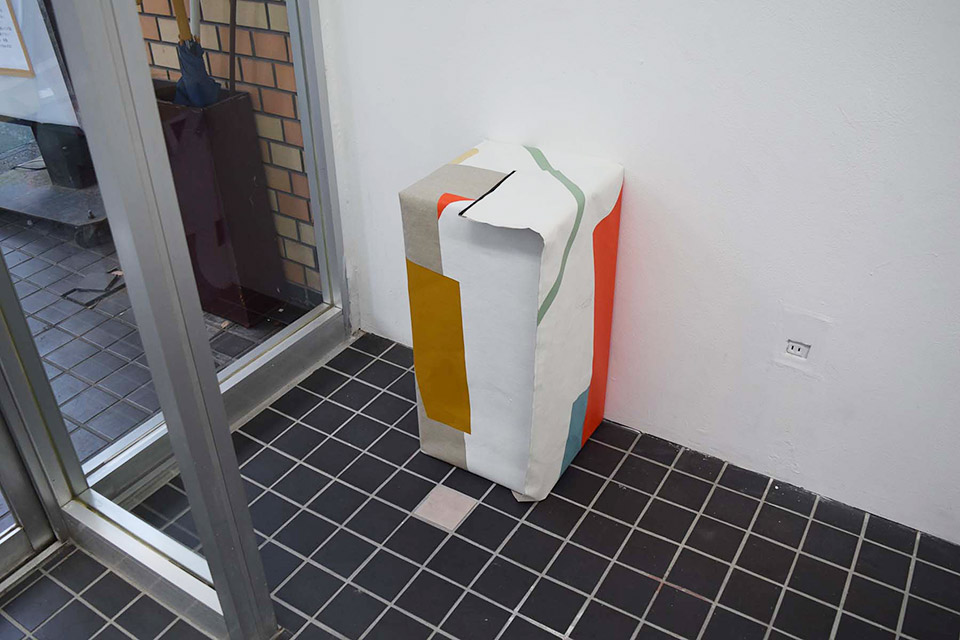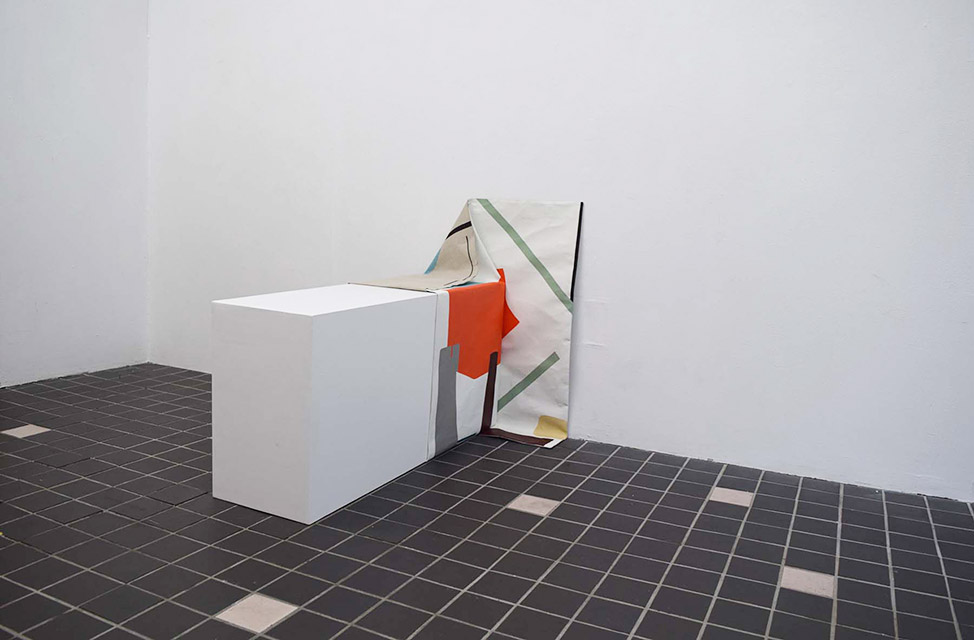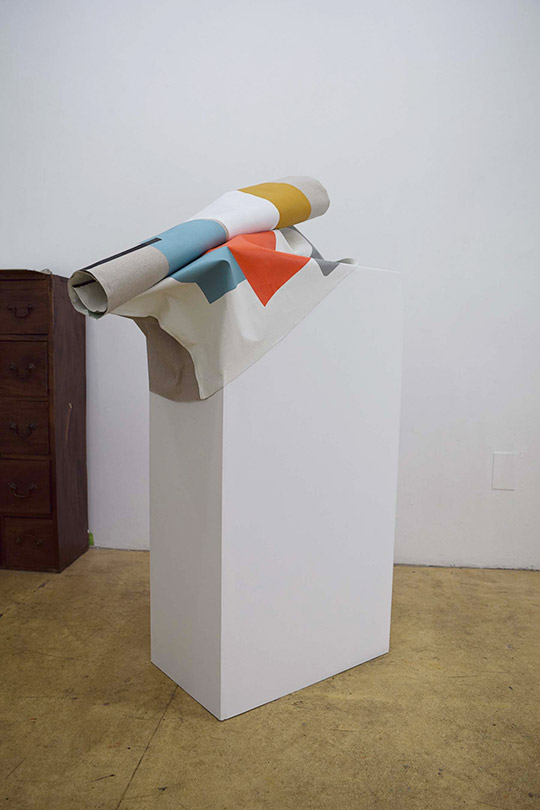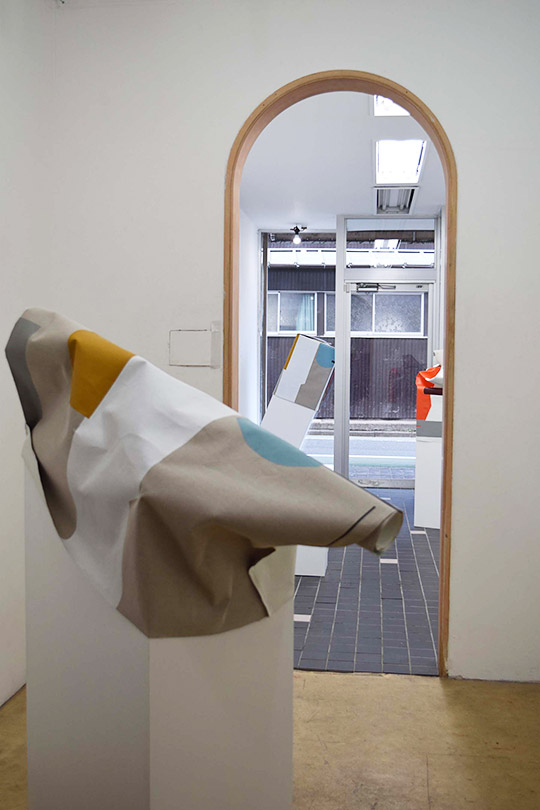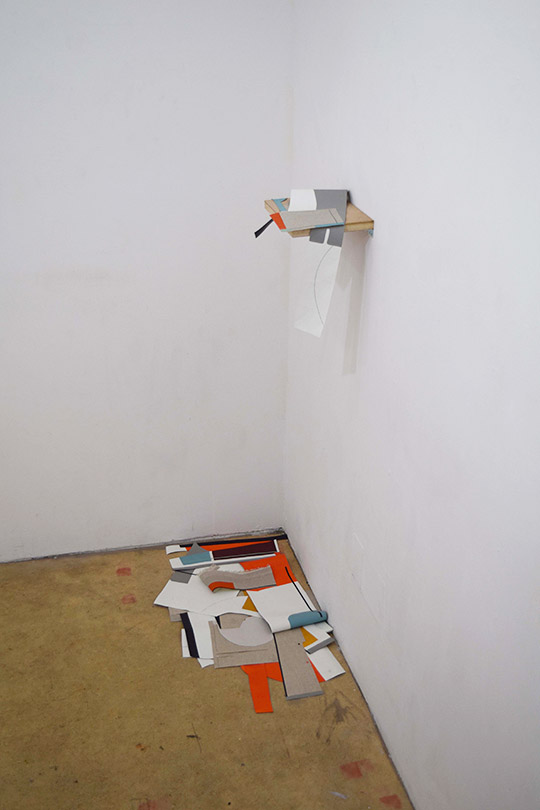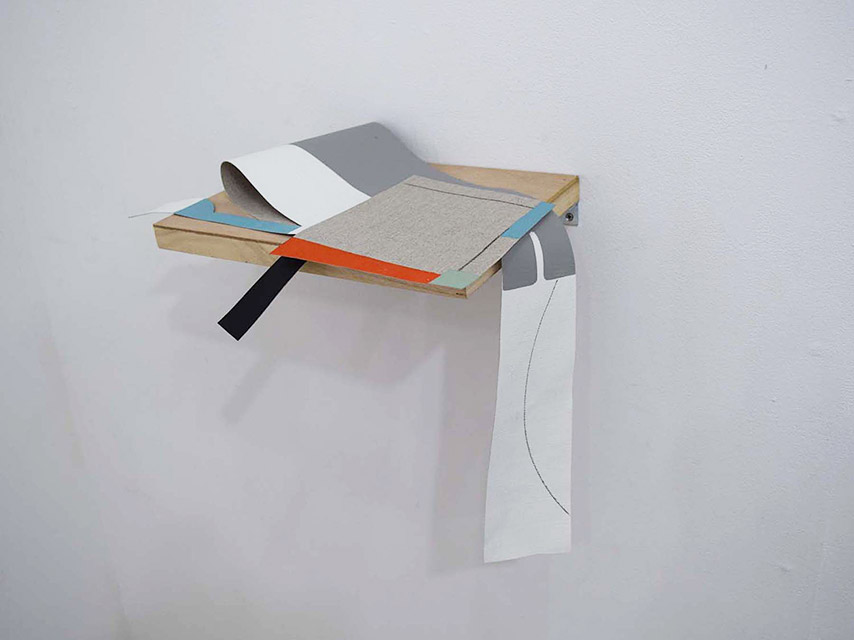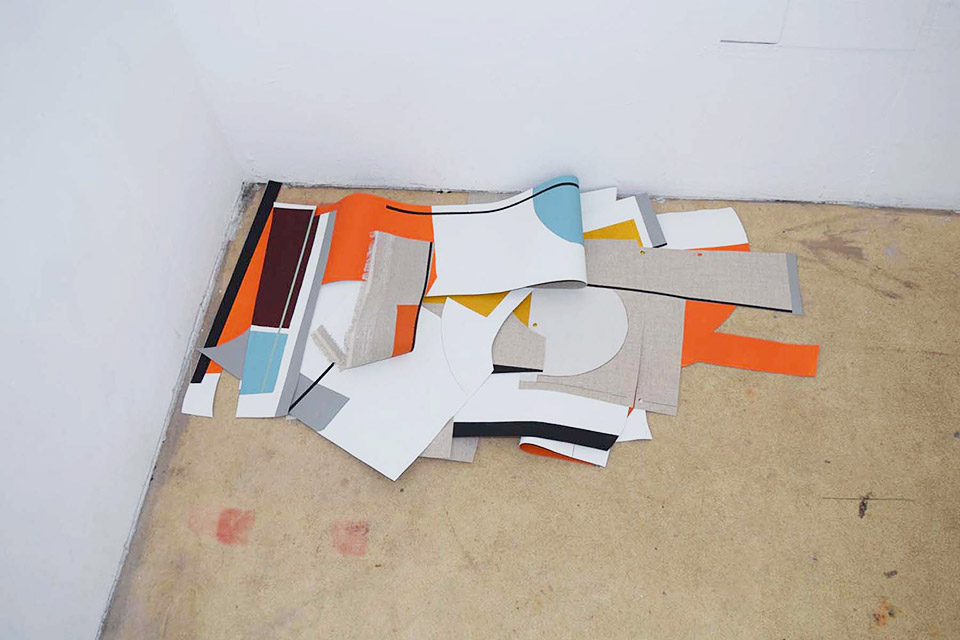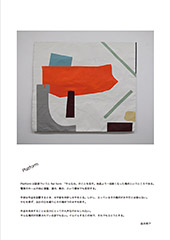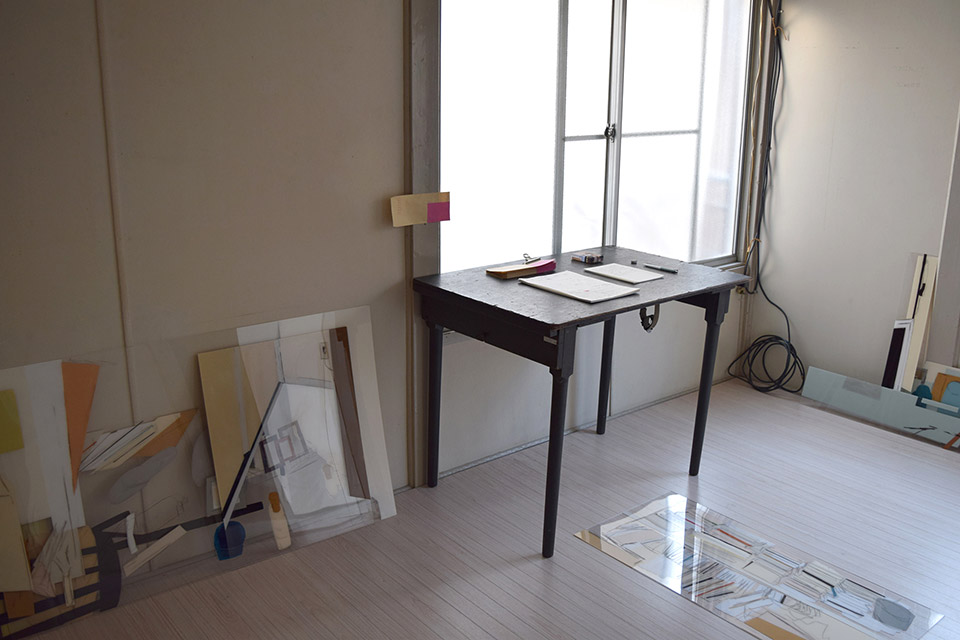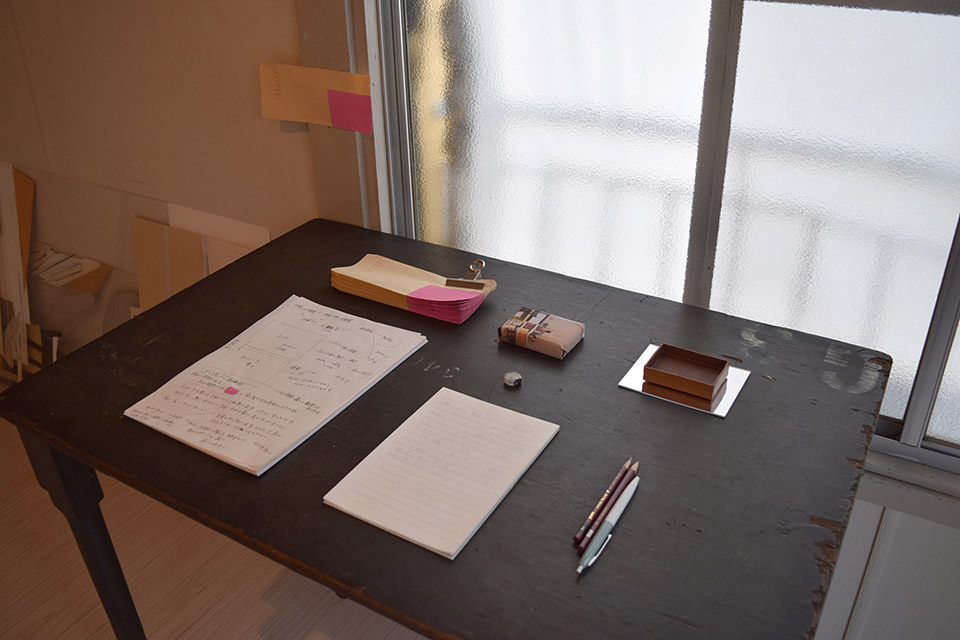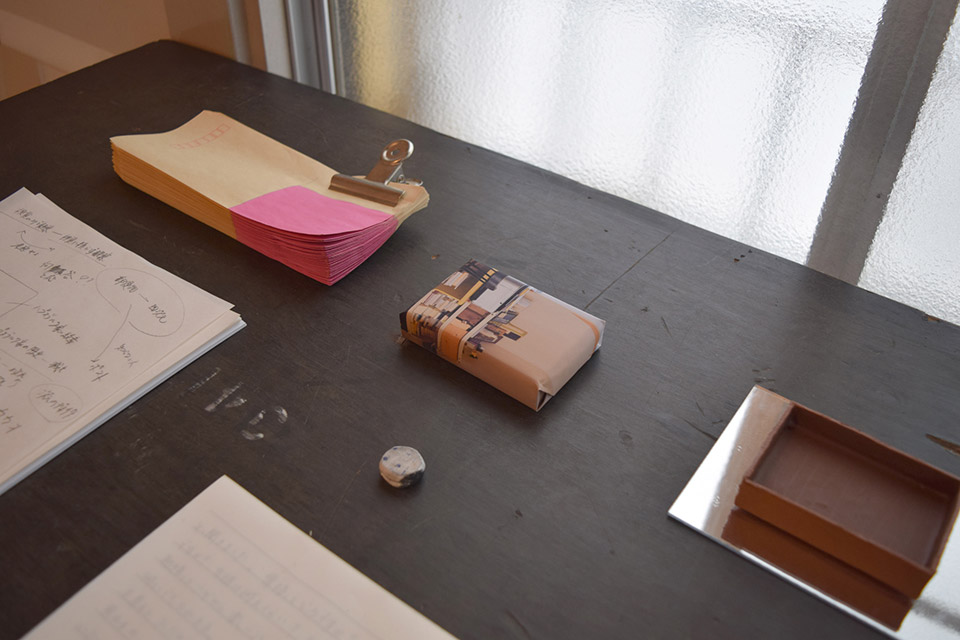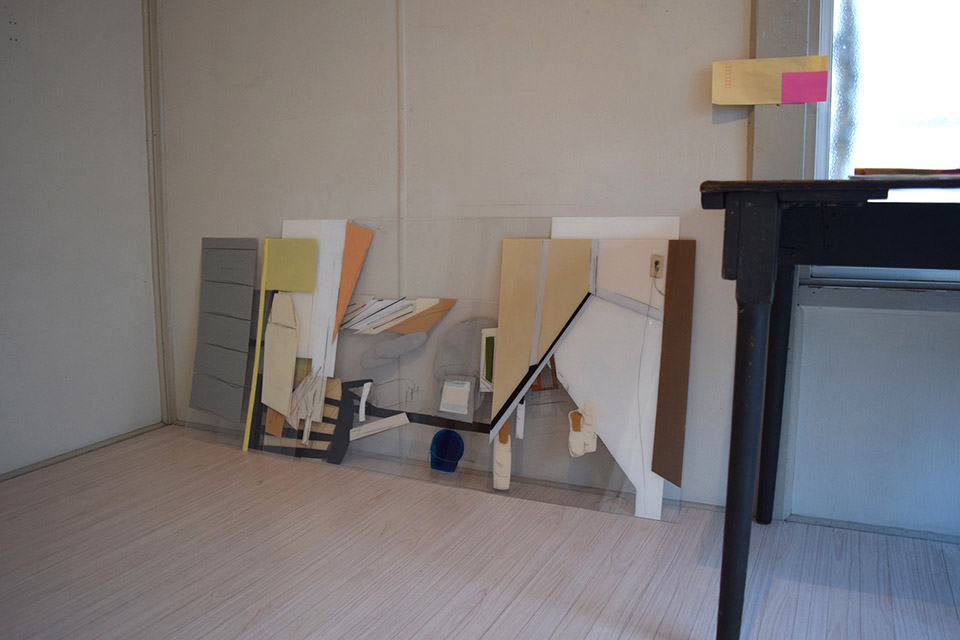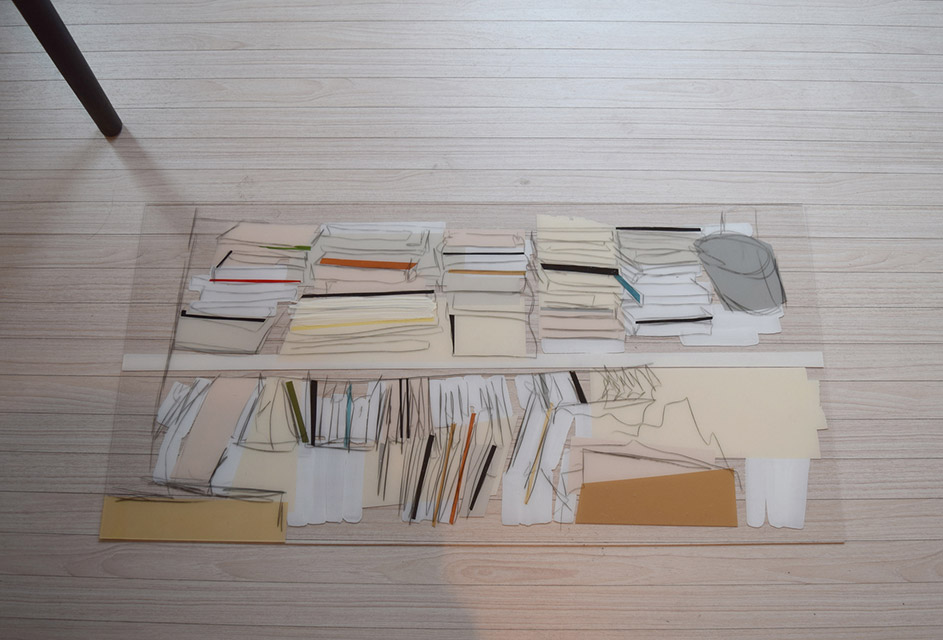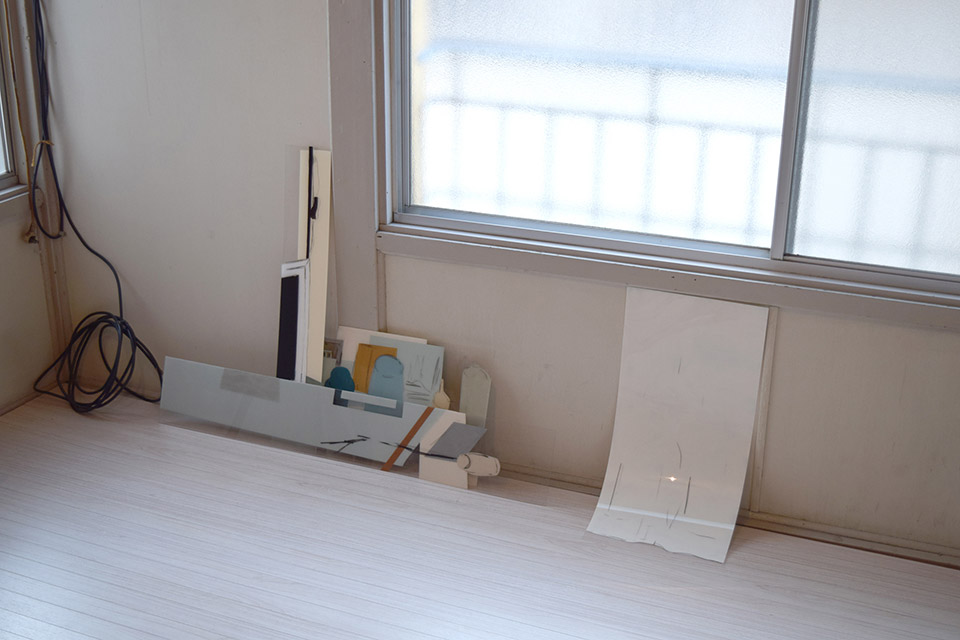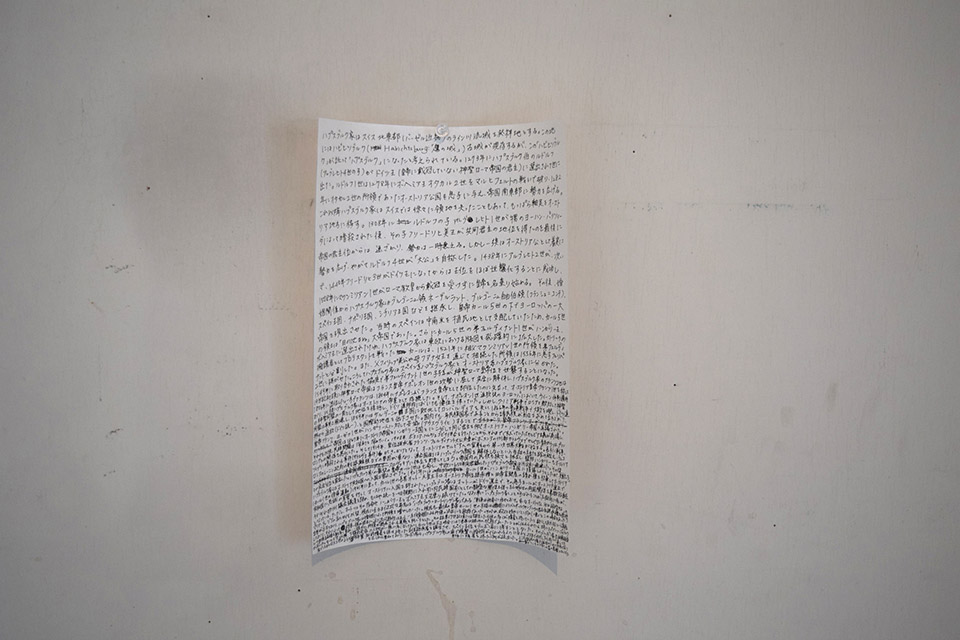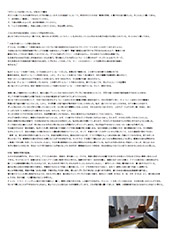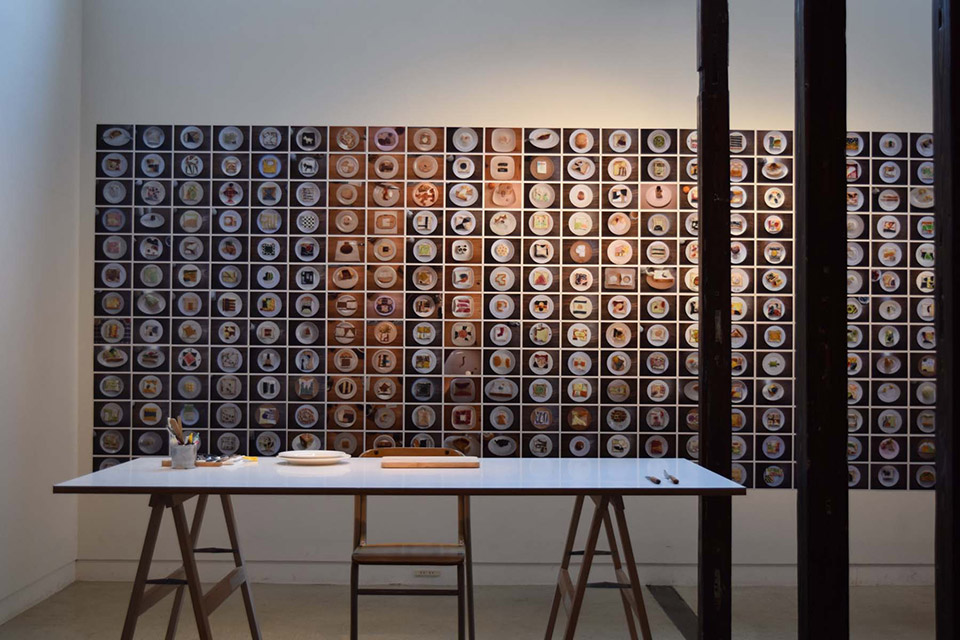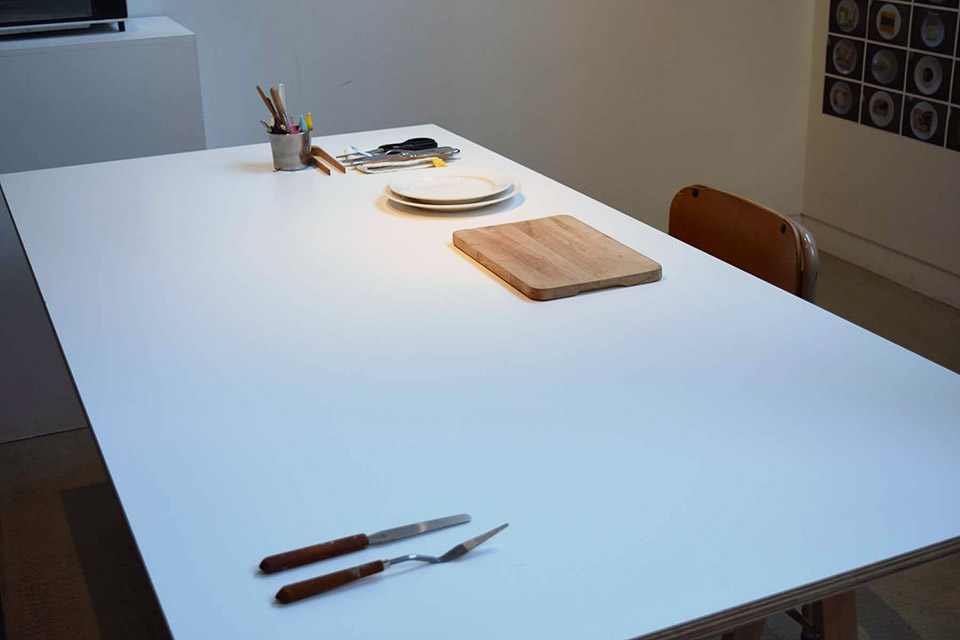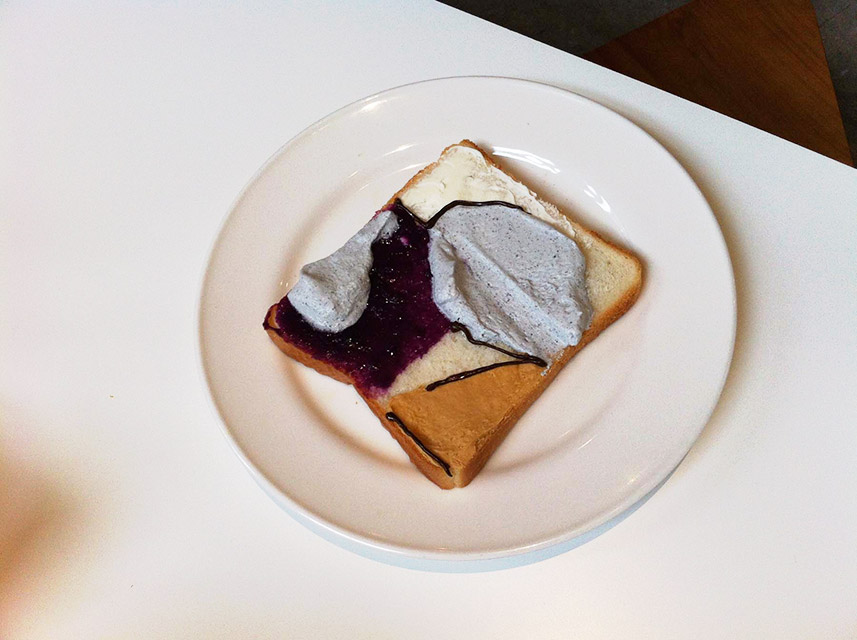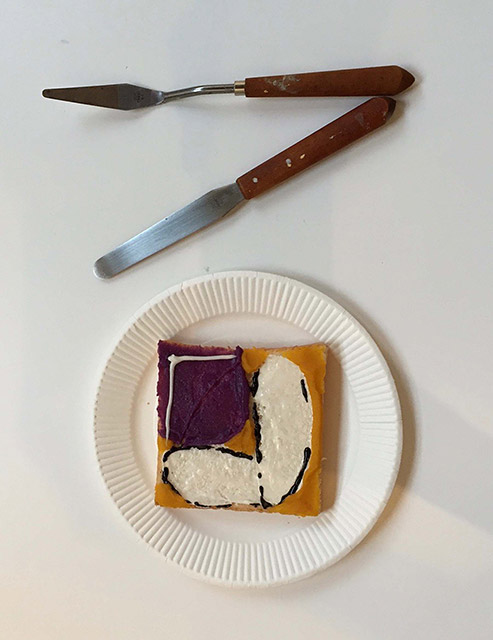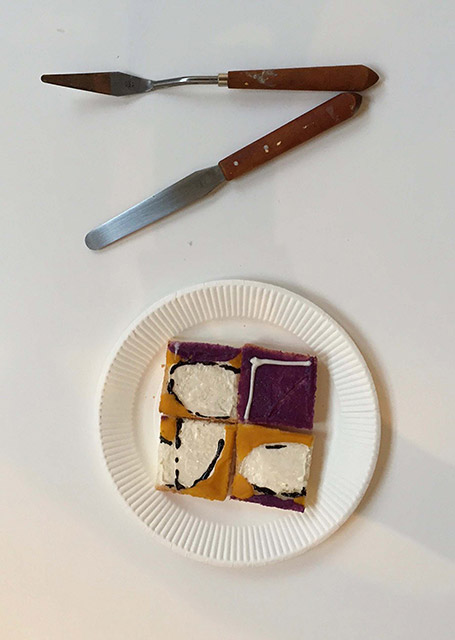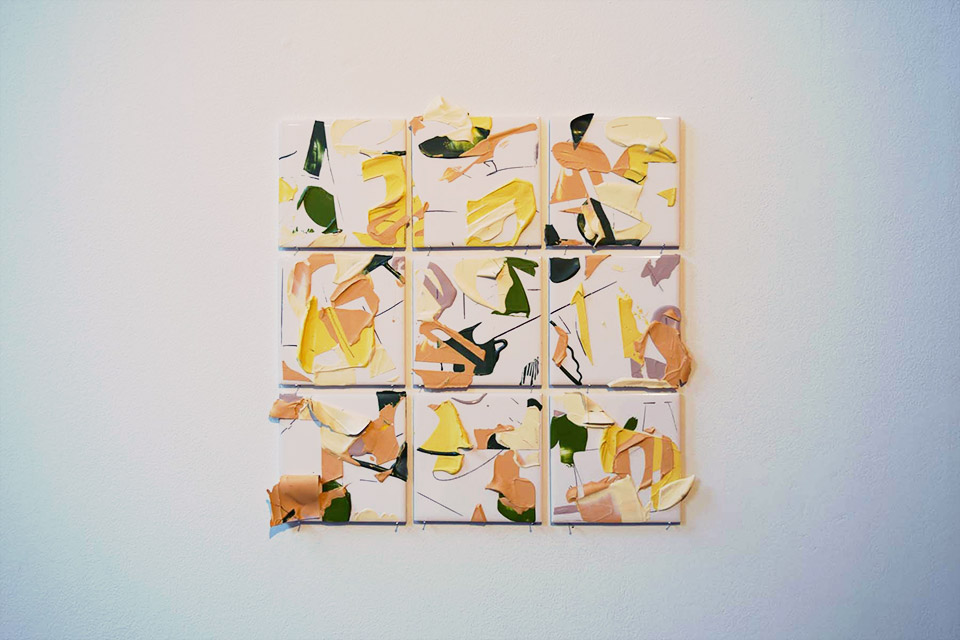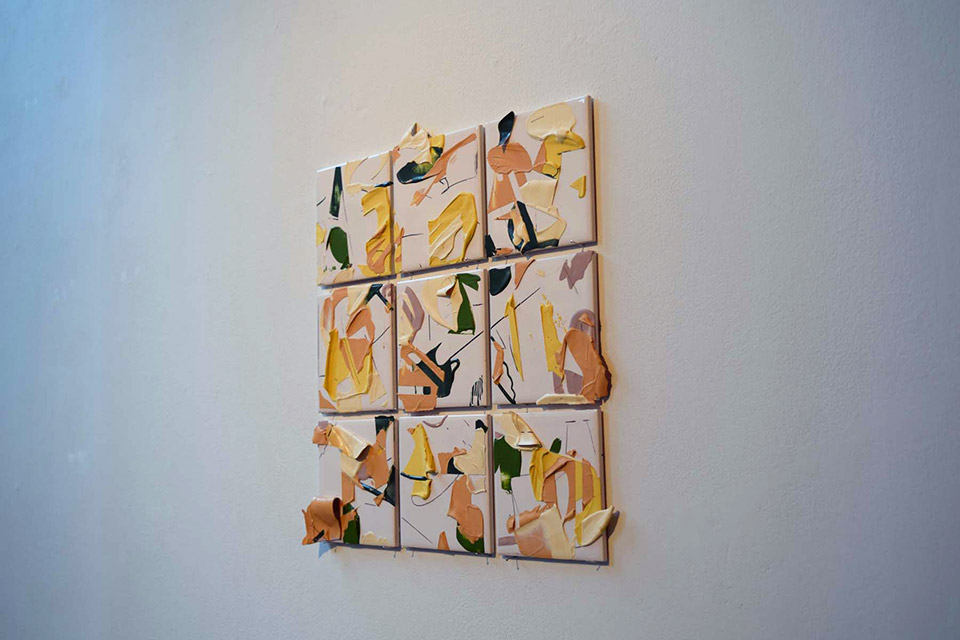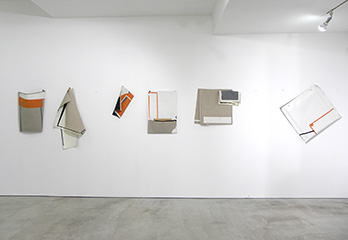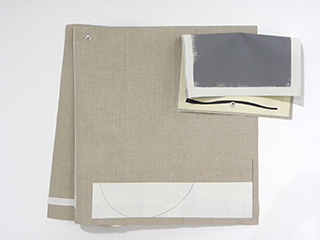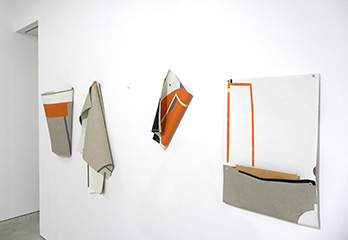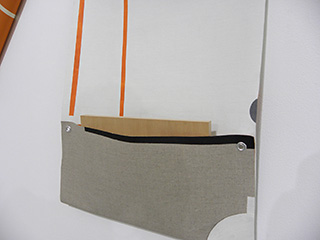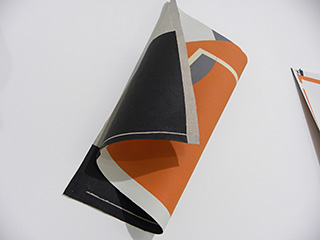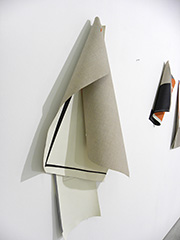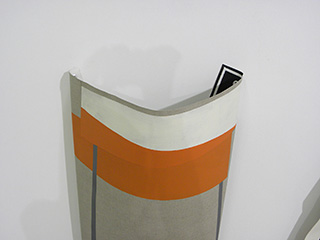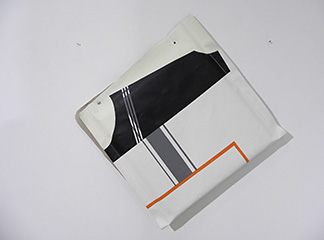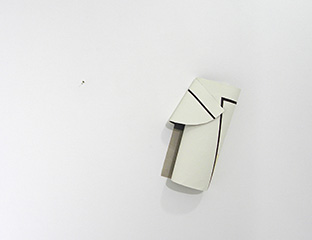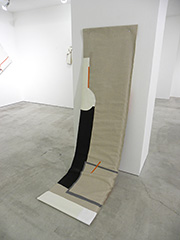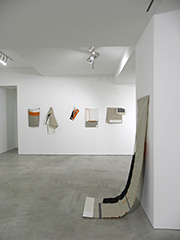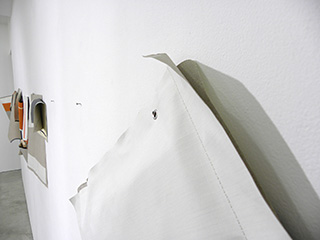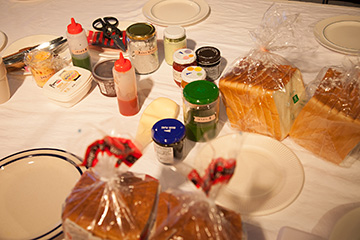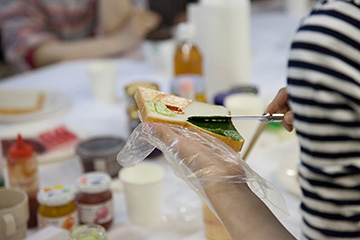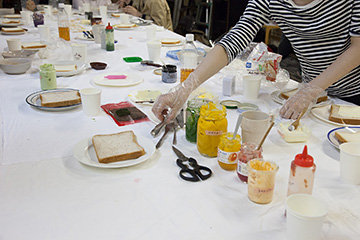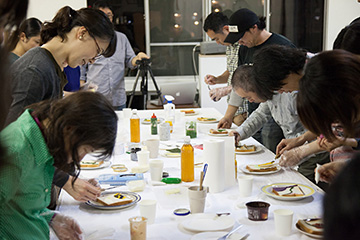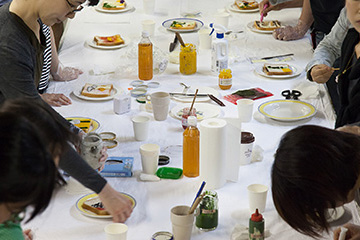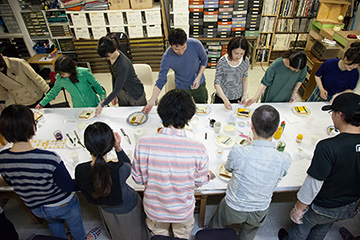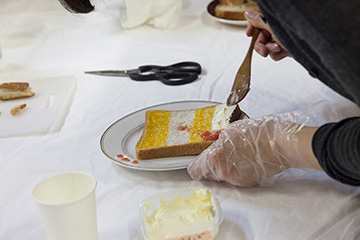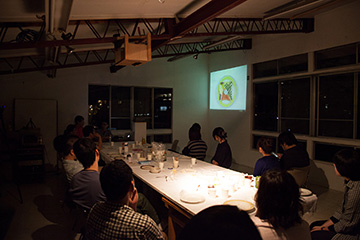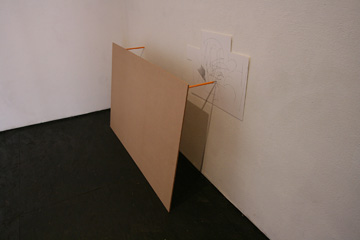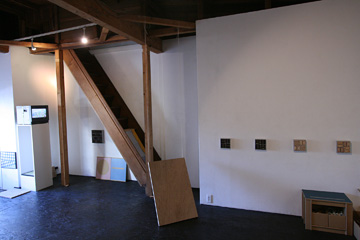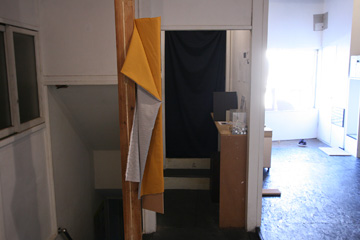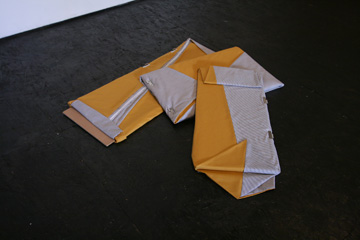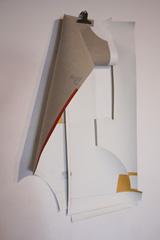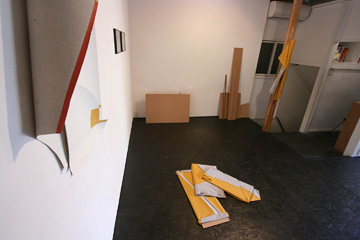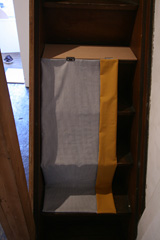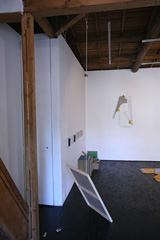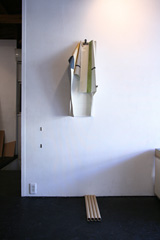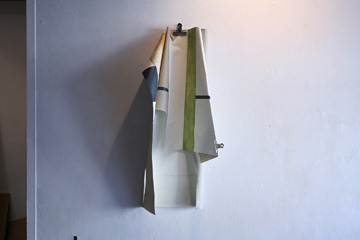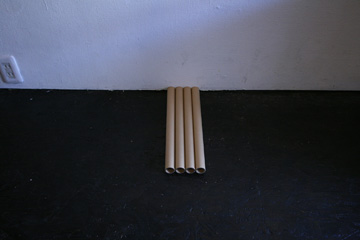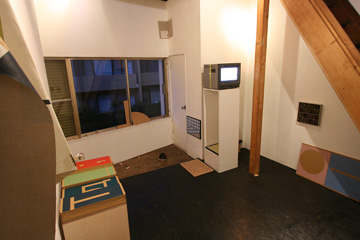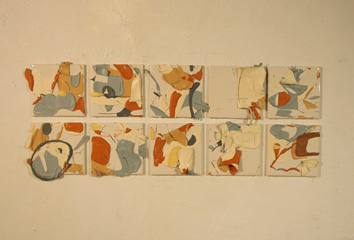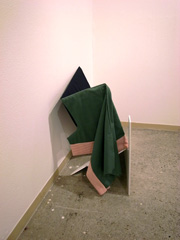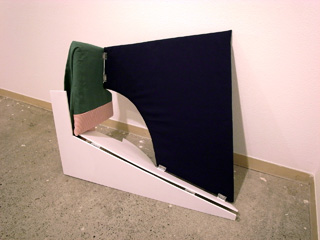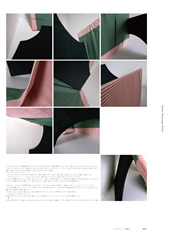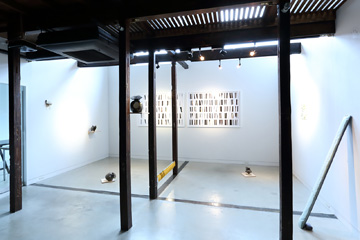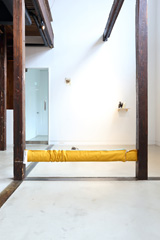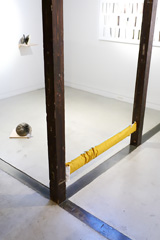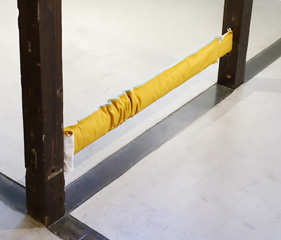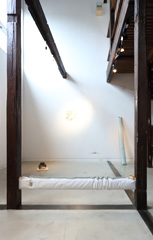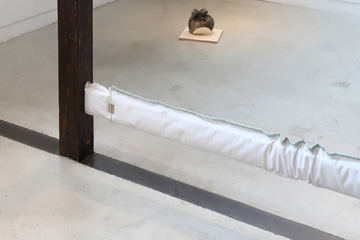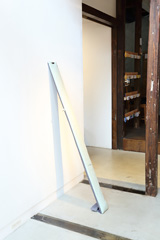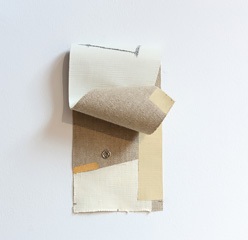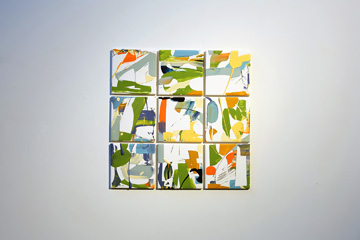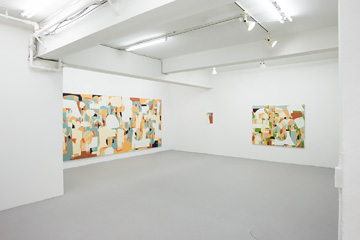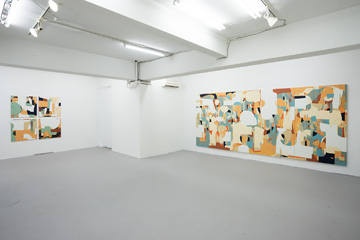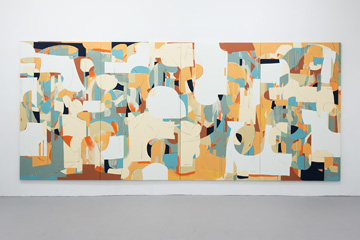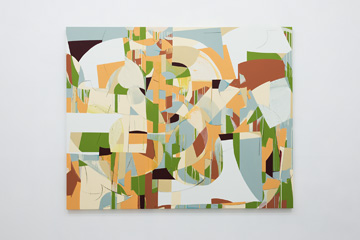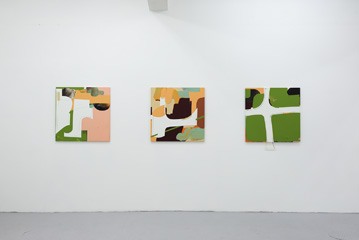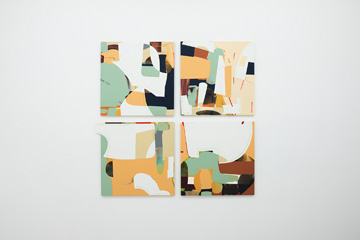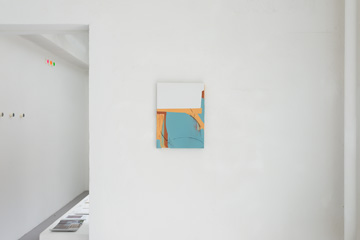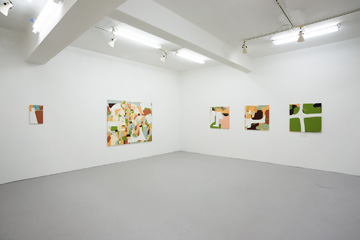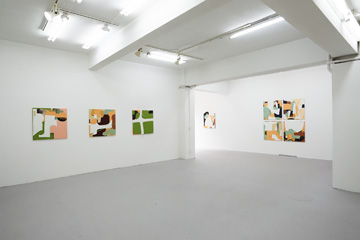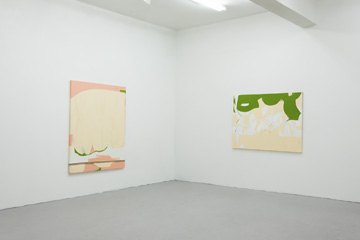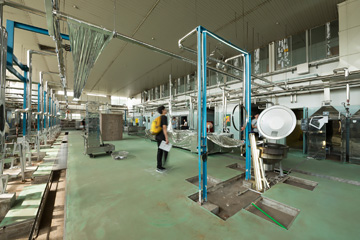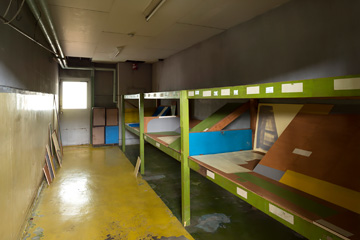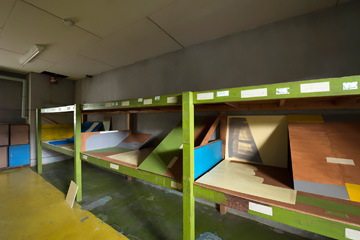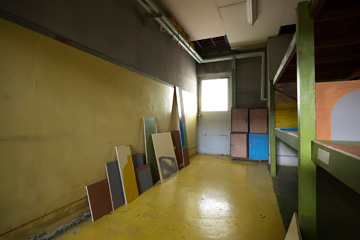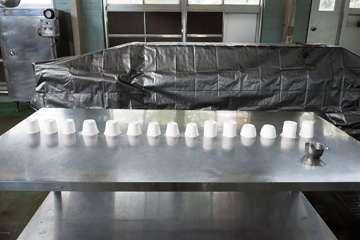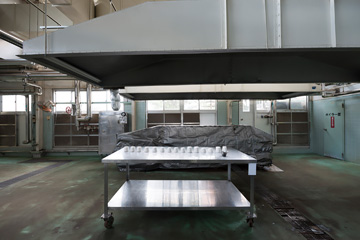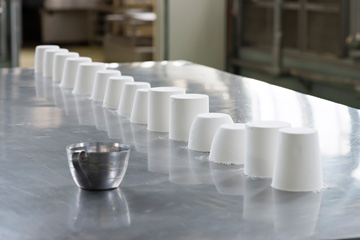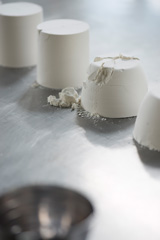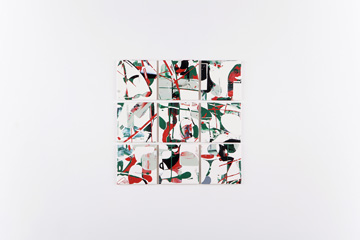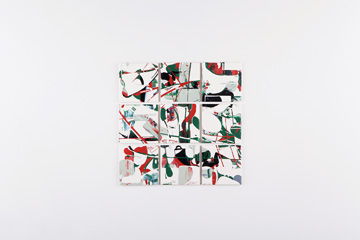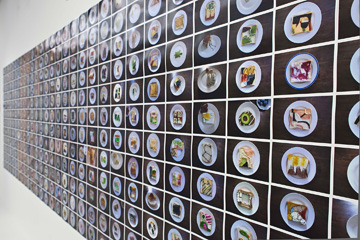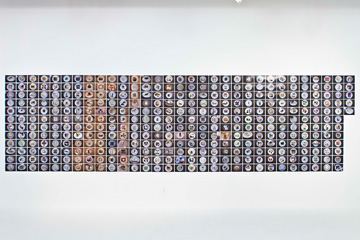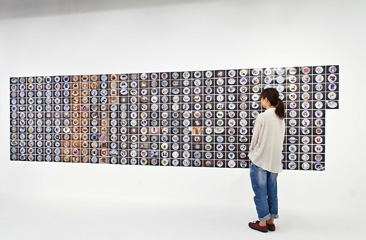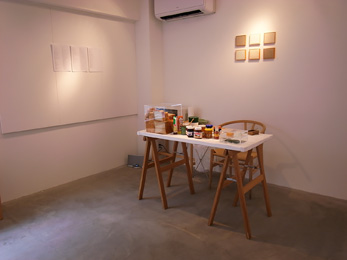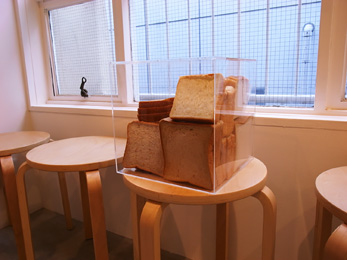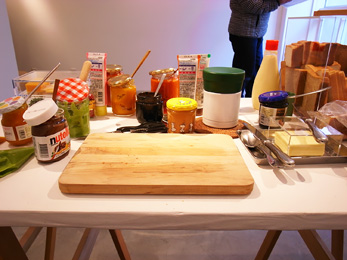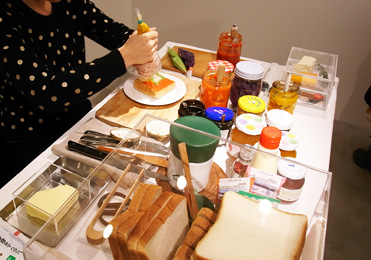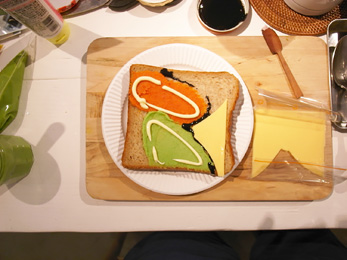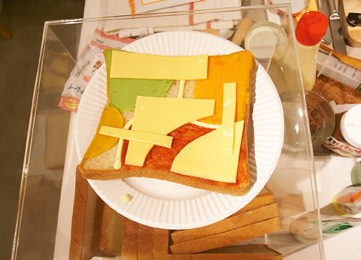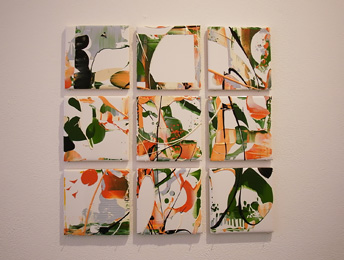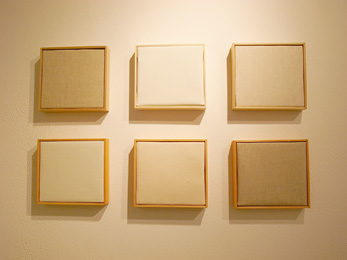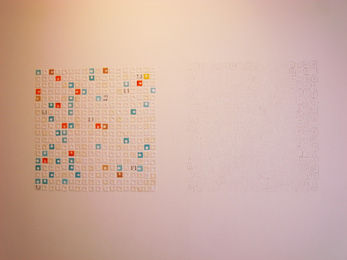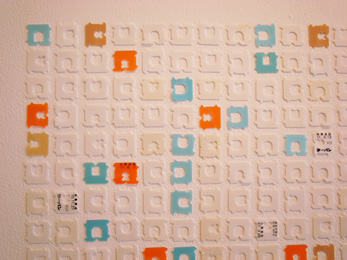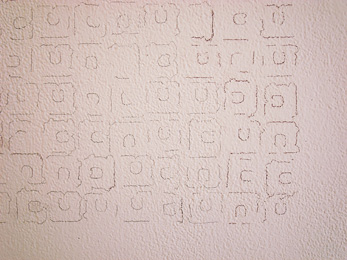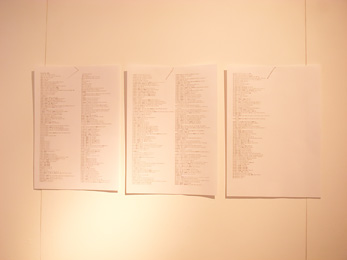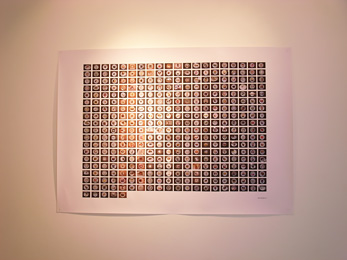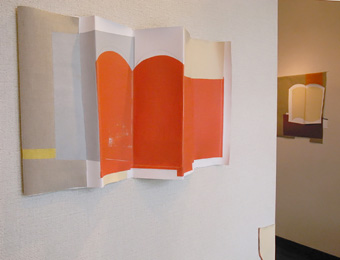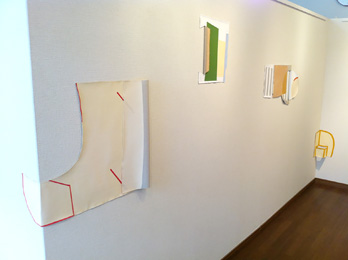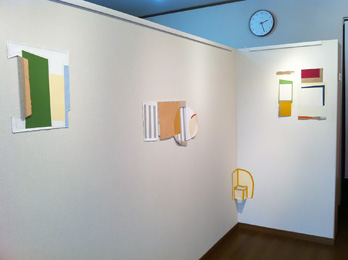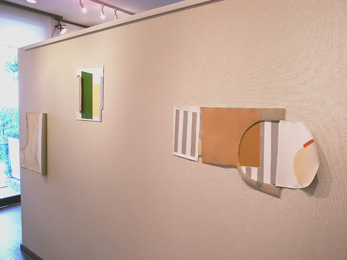Installation View
2023 "interplay"京都蔦屋書店アートウォール
私が制作を始めるときは、⼤抵どんなルールで制作を進めるのかをまず設定します。今回の作品は⽀持体とモチーフが瞬く間に⼊れ替わる構造を持ったシリーズを展開しました。これら3つから成る作品は⽀持体の上に⽀持体を重ね、鉛筆でトレースし、互いに線を引き合うことを契機に描かれています。当初設定したルールからはみ出しつつ、その都度起こったことに対して判断を重ねることで現れたものを、ひとまず作品と呼んでいます。場所と作品、線と⾊彩、作品と作品の関係性をなぞるような鑑賞体験を実現したいと思います。
益永梢⼦
When I start creation, I usually first decide what rules I will use to proceed with the creation. These pieces are a series with a structure in which the support and motif are replaced in the blink of an instant. These pieces consist of three pieces created by layering support on top of each other, tracing with a pencil, and drawing lines with each other. I call the piece if it emerged by repeatedly making judgments about what happened each time while going beyond the rules I had originally set. I would like to create a viewing experience that allows one to trace the relationship between place and work, line and color, and pieces and pieces.
Shoko Masunaga
2023 Ginza Curator’s Room #005 “Angel‘s Perch”思文閣
Curator's Statement
藪前知子 Tomoko Yabumae
創作版画、あるいは日本における抽象絵画の先駆者として知られる恩地孝四郎(おんち・こうしろう)は、道や空き地で拾った木々やガラクタを木箱に入れて保管し、時々「ひまのおつきあい」と称してそれらで遊んでいたと伝えられます。戦後間もなく、彼は、それらを即興的に組み合わせて紙に刻印し始めます。版を彫らない版画、のちにマルチブロックと呼ばれる手法です。同じ頃、彼は版画とはまた異なる「ひまのおつきあい」を残しています。木々や石、三角や丸、バラバラの要素が組み合わされたこの作品は、私たちのよく知っているあるイメージを形作っているように見えます。本展は、この、戦争の瓦礫から作られた「天使のような」作品、1949年頃に制作された恩地孝四郎《無題》を起点に、イメージの成立過程について響きあう問題を扱ってきた益永梢子(ますなが・しょうこ)、上田良(うえだ・やや)の二人を招いて構成されます。膨大なイメージの氾濫にさらされる現代、彼らの作品は私たちに、能動的に「見る」という行為を取り戻す、ひとつの手がかりを与えてくれるはずです。
さて、恩地は、版を重ねて制作する木版画とは、絵画の中で一番「構成的な過程を持つ」と考えていました。異なる想念や情景を、一つの画面に総合して表現したい時、分割して塗り分けたりせずとも、それらを別々の版に刷って合わせればよいからです。
版画を学んだ上田良もまた、バラバラの世界を一つに統合する可能性を、さまざまなメディアを用いて探求してきました。その主要な道具は、「メタル・グルー(金属の接着剤)」と彼女が呼ぶカメラです。脆い立体を組み立てて生まれる一瞬が写真によって切り取られますが、上田はその構成要素の関係を、単なる物理的な条件ばかりではなく、写真によって強調されるその物質的な特性の繋がりによって、つまりイメージの中にしか存在しないものとして捉えようとします。
益永梢子の絵画もまた、一時停止の状態で現れたような、可塑的で動的な印象を与えます。作家は、見るものの心理や環境によって微妙に変化する色彩や、性質や成り立ちの異なる線を組み合わせ、時に絵画の支持体とモチーフ、裏と表を逆転させたりしながら、その行きつ戻りつの過程も痕跡として残しつつ制作してきました。その作品が想像させる作者の選択や手の動き、素材から受け取る感覚の応答は、見るという経験の複雑さと豊かさを私たちに伝えます。
戦後の混乱期の脆いガラクタとの手遊びに、天使の顕現を託した恩地孝四郎。目に見えない世界からの伝令であるその存在は、バラバラになってしまった世界を繋ぎ合わせてくれるために現れたのかもしれません。単なる物質の集合が、いかにして芸術作品と呼ばれ私たちを共有へと導くのか。本展は、この根本的な主題に触れる多くの示唆を含むものとなるはずです。
A pioneer of the sōsaku-hanga (“creative prints”) movement as well as in abstract painting in Japan, Onchi Kōshirō, was said to have gathered bits of trees and junk he picked up from streets and vacant lots in a wooden box and sometimes played with them, calling them “Hima-no-Otsukiai[1]”. Shortly after the war, he began improvising with these objects and printing their various compositions on paper. Later on, this method of printmaking without engraving was called multi-block printing. Around the same time, he left behind a different work from his prints, also called “Hima-no-Otsukiai”. This work, combining trees, stones, triangles, circles, and contrasting elements, invokes familiar images in our minds. In this exhibition, we positioned Onchi Kōshirō’s “Title Unknown” (c.1949) as a starting point, an “angelic” work seemingly appearing from the rubble of war, and invited two artists in conversation, Shoko Masunaga and Yaya Ueda, whose works similarly resonate with his process of creating images. In our world today, in which we are flooded by a tidal wave of images, their works will surely guide us as to how we can relearn the active act of “seeing”.
Onchi considered the woodblock print, created by layering prints, to be the most “compositional process” in painting. This was because expressing different ideas and scenes in a single picture could be done by simply printing them on separate woodblock plates and combining them on paper, without having to mix colors on one surface.
Yaya Ueda, who also studied printmaking, employs a variety of media to investigate the integration of disparate worlds. Her most important tool is a camera she refers to as “Metal Glue (metallic adhesive).” While photography captures the moment within the existence of a fragile three-dimensional object, Ueda aims to capture the relationship between its visual components, not only in terms of their movements dictated by gravity but also in relation to other physical objects emphasized by the medium of the photograph; in other words, she is attempting to capture something that can only exist in an image.
Shoko Masunaga’s paintings have a plasticity and dynamism to them as if they are suspended in time. The artist incorporates a variety of colors that change subtly depending on the viewer’s psychology and environment, lines with various properties and origins, and, at times, reversals of the paintings’ structures or motifs, as well as the back and front, while leaving traces of these processes of exchange. Masunaga’s decisions and hand gestures, as well as the sensory responses she receives from the materials, convey the complexity and richness of the visual experience.
Through playing hand games with the fragile junk of the chaotic postwar period, Onchi Kōshirō put his trust in the manifestation of an angel. Its presence, as a messenger from the invisible world, may have appeared to help put together the world that had fallen apart. This exhibition will touch on and inform viewers about this fundamental subject: How do we call a simple assortment of materials a work of art and are then compelled to share it with each other?
[1] “Hima-no-Otsukiai” roughly translates to “Free time Companions”
Photo: Tadayuki Minamoto
2023 "ナナメを通る”千年一日珈琲焙煎所
この作品はリソグラフという印刷機を使用し制作しています。
ここに書かれてあるのは、リソグラフで印刷する際に使用したインクの色たちのストーリーで、色を重ねる順番に準じてストーリーは進みます。色たちが感情を持ち、生活し、どこに居るのか、行くのかを巡るような構造になっています。
インクの色は、紫外線に当たると、黄→赤→青→黒という順番で退色します。
それは化合物の結合の弱さ・強さが影響し、結合の弱い黄色ほど分解され易いと言われています。
しかし、そもそも「色」とは何でしょうか。
私は、一人一人が「見ている」と、感じている色は違うと常に思っています。
光が物体に当たると、その材質や特性により、異なる波長の光が吸収されたり反射されたりする。
反射された光が目に届くと、眼球の光を受容する部分がそれを視覚情報として受け取り、視神経を通じて脳へと伝達する。[Laura Perryman(服部こまこ訳)『The Color Bible』(SEIGENSHA、2022年)p.8]
「見ている」と感じていると、少し分かりにくく先に述べましたが、
そもそも「色」というものはなく、色として感じさせられていると言えるのではないでしょうか。
紫外線に分解され、色を感じられなくなったものは、もしかすると他の生物には認識できるのかもしれません。
人間の脳はその能力を使って100万もの色を見分けられる可能性があると言われていますが、
100万色すら一部なのかもしれない。そんなことを考えています。
These pieces are created using a printing press called RISOGRAPH.
What is written here is the story of the ink colors used when printing with Risograph, and the story progresses according to the order in which the colors are layered. The structure is such that the colors have emotions, live their lives, and go around where they are and where they are going.
The color of ink fades in the order of yellow → red → blue → black when exposed to ultraviolet rays.
It is said that this is affected by the strength and weakness of the bonds in the compound.
But what exactly is "color"?
I always believe that each person sees and feels colors differently.
When light hits an object, light of different wavelengths is absorbed or reflected depending on the material and characteristics of the object.
When the reflected light reaches the eye, the light-receiving part of the eyeball receives it as visual information and transmits it to the brain via the optic nerve. [Laura Perryman (translated by Komako Hattori) “The Color Bible” (SEIGENSHA, 2022) p.8]
As I mentioned earlier, it is a little difficult to understand when you feel that you are “watching.”
In the first place, there is no such thing as "color", but it can be said that we are made to feel it as a color.
Things that are broken down by ultraviolet light and can no longer be perceived as color may be recognizable to other living things.
It is said that the human brain has the potential to distinguish as many as 1 million colors.
One million colors may even be part of it. That's what I'm thinking.
photo : Koichi Nishiyama
2023 “その先の続き" “What Comes After the Beyond” Maki Fine Arts
2022 “editing” nidi gallery
展覧会会場で見たその時に、まるでたった今出来上がったかのような、今にも動き出しそうな、さっきまで動いていた気配を感じるような作品をつくりたいと考えています。
私は日常生活のなかで目にする蝶番やクリップ等に興味があります。金具そのものを観察していると、そこに想定される力学や物と物を繋ぐその構造と機能に惹かれます。仮止めのようであり、物理的に編集可能な性格は、可変的な私の作品を構成し、決定します。
バラバラとしていたものが組み上がる時のような、何かが立ち上がる瞬間に立ち会える時間として、そして、その後も変わる可能性を示唆する意味で展覧会タイトルを「editing(編集中)」としました。
I want to create works that, when peoples see them in the exhibition space, feel as if
they have just been completed, that they are about to start moving, or that they have
been in motion until just a moment ago.
I am interested in hinges and clips that we see in our daily life. When I observe the
metal fittings themselves, I am fascinated by the dynamics assumed there and the
structure and function that connect things. Binders and clips have temporarily and
physically editable functions and the structures of my pieces is determined by that.
I named the exhibition "editing" in the sense that it is a time to witness the moment
when something comes together and to suggest the possibility that things will change
even after that.
Photo : Koichi Nishiyama
2021 SCENE5 “exercise” ( Part 2 ) Takuro Usui, Shoko Masunaga Time&Style Midtown
Curated by Banana Art
Photo : Koichi Nishiyama, Takuro Usui, Shoko Masunaga
2021 SCENE5 “exercise” ( Part 1 ) Takuro Usui, Shoko Masunaga Time&Style Midtown
This exhibition “SCENE” is a series of exhibitions that began to take on the characteristics of Time & Style as a unique interior design shop and create an exhibition that focuses on the shop as a whole. This exhibition is the fifth in the series, which started to create a scene (SCENE) for the artists to come into contact with the shop and its customers.
In SCENE 5 “exercise,” based on the purpose of “SCENE,” we will focus on the “product display” to propose and introduce the products. The exhibition was designed to allow visitors to experience the difference between a “display exhibition” and an “art exhibition.”
In the interior shop, where people and products are constantly changing, and the display environment is continuously moving, the two artists have taken on the atmosphere of the shop and the products more flexibly, and based on their own experience and senses as artists, they have created an exhibition in which you can experience their approach to display.
*exercise: a variety of practices that use the head and body. It implies the consolidation and development of current skills, wisdom, and techniques.
Takuro Usui’s work is a series of installations and videos that use the shapes and patterns of familiar everyday objects, the environment, and the materials that make up the situation. Usui’s work is based on the artist’s awareness of the changes and discomforts that can occur from the minimal processing and experimentation of everyday objects.
The work of Shoko Masunaga is based on the artist’s subjective perception of the environment in which her work is created and on certain rules of painting and sculpture. The result may be a repetitive pattern or shape or a borrowed outline from the environment, but it is always an extension of the artist’s sensory act of drawing.
Although the two artists’ approaches to expression are different, they share a common denominator in that their work develops in various ways in response to the environment.
In the context of this exhibition, we invite you to discover the characteristics and differences between the two artists and their interaction with Time & Style’s products.
The exhibition will be constantly fine-tuned, and the works will be replaced according to the situation to comply with the purpose of the exhibition.
Curated by Banana Art
2021 “ replace “ LOKO GALLERY
私の作品の多くは絵画と彫刻を横断するような形態で、作品がおかれる環境・スペースとの関係性から思考をはじめる為、その制作方法は多岐に渡りますが、それらに共通しているのは入れ替え可能、 置換可能な性質を持った動的な絵画と言えます。
LOKO GALLERYへ初めて訪れた時、その外観に、黒く重厚な三つの箱をズラしたようなイメージを持ちました。そんな個々人の経験は、少なからず中に展示されている作品の印象にも影響すると私は考えます。明るい色彩のものはより明るく軽やかに見えることがあるかもしれないし、その逆の可能性 もあるでしょう。ひとたび身体がその建物内に入ってしまうと天井が高く自然光が入るその空間の作用で、外の様子を忘れる人もいるでしょう。個々に違う眼、体験を持っていることに加わって、毎日、毎時変化する自然光の作用により、作品の見え方はより分岐してゆくと思います。
そんな場所で、近年始めたキャンバスを積み上げて設置する作品を発表したいと思います。 床と壁、建築に依存しながら、絵画として、何かできることがあるのではないかと始めた作品からの展開です。1Fでは積み上げる設置ですが、2Fの空間では天井から積み、下がる設置に挑戦し、1Fと3Fに挟まれた、少し圧迫感のある空間をつくることで、LOKO GALLERYの外側を内部から思い出すことができたらと考えました。目の前に見えていない場所を思う契機になったり、周囲の環境の何かに気づいたり、そういう機能を持った作品をつくりたいと思っています。
私の制作では、ルールやアルゴリズムを設定してから手を動かし始めることがほとんどです。そうして、なるべく自分の身体、特に手と眼に染み付いた感覚的な独自の互換性のようなものを避けようとしています。どうやって自分で、自分とは違うものをつくり出せるのか、また出会えるのかと考えています。 また、ルール設定については、”ルールを自分で作ることができる自由”が私の思想と繋がっている実感があります。
今回のルールは、鉛筆のように接近して線を引く道具を使用する際に、必ず他の支持体の輪郭を定規のように使用するということ、そして互いの支持体を干渉しながらも個々(キャンバス・パネルごと) に独立することです。支持体(ここではキャンバスとパネル、木枠を指します)の上に描かれるのが 別の支持体の輪郭であり、今使用している支持体も、別の支持体のモチーフになりうるという、立場が入れ替わることを繰り返します。それらは相互関係で出来ており、置換可能ですが、肩透かしのような関係性もあり、特定の作品、色彩に視点が定まることを避けています。
モチーフと支持体が瞬く間に入れ替わったり、配置により異なって見える微妙な色彩を用いることで、物理的な意味以外でも動的な絵画が提示できればと思います。
Painting and sculpture intersect in many of my works which begins by considering the relationship of the environment or space where it is exhibited. Therefore, the artistic means is widely ranged, although there is one thing in common – that the painting holds dynamism and is available for exchange and replacement.
When I first visited LOKO GALLERY and saw its exterior, I received an impression as if three black, massive boxes were piled up, slightly unadjusted. In my opinion, this personal experience influence how the exhibited works inside may be seen in no small way. Those brightly colored may seem even more brighter and lighter, or the other way around. Once the viewer’s body enters a space with high ceiling where natural light comes in, they may forget what they saw outside. Beside the fact that each has different eyes and experience, how the works are seen diverge by the effect of natural light which shifts by each hour, each day.
At such a place, I will present my recent works which consist of piled up canvas.This series developed from questioning what paintings could do by depending on architectural features such as the floor or the wall. At the ground floor, I pile up from the floor, while at the second floor I challenged to pile down from the ceiling¬ to make the space – sandwiched between ground floor and 3rd floor – have a glimpse of pressured feel to retrieve the exterior of LOKO GALLERY from the interior.
I want to create works that makes the viewers to recall places unseen in front of them or lets them discover something from the surrounding environment.
Before I begin my creative process, I start by setting rule or algorithm so that I could avoid the unique compatibility happening naturally on my body, especially those in my hands and eyes, as much as possible. I always try to create or encounter something different from myself by myself. When I set some sort of rule, I have a solid sense that “the privilege to create a rule by myself” is connected to my philosophy.
This time, as a rule, I decided to use the outline of a support as a guide when drawing lines on a different support and let each support (such as canvas or panel) become independent while interfering to each other. What is drawn on the support as a motif is the outline of another support – vice versa could happen and repeat replacement. This is realized through correlation and is replaceable, somewhat tricky, which keeps our point of view unsettled from particular piece or color.
I intend to present painting with dynamism beyond physicality through instant replacement of the motif and support, and the shift of subtle color when the arrangement is changed.
Photo : Kunihisa Fukuda, Shoko Masunaga
Movie : Kunihisa Fukuda
2020 "Ordinary objects" (Maki Fine Arts)
Alex Dodge / Shoko Masunaga / Ryosuke Ogino / Fuminao Suenaga
http://www.makifinearts.com/jp/
Photo 星野健太
2019 " Box, Box, Box " Cooler Gallery ( Brooklyn, New York )
この展覧会では「重さ」について思考し制作した作品を3つの異なる方法で提示します。近年、益永は絵画の構成要素として重力に焦点をあててきました。物がそのものの重さによって(重力により)落下し着地する現象を観察してきました。
彼女はキャンバスを伝統的な方法とは別の方法で使用し、重ねる、積み上げる、描くという方法で重さを知覚することに挑戦します。それらは彫刻のように組み立てられ、このギャラリーでかつて見られたであろう箱の積み重ねと箱の動きの光景を想像し、元倉庫であるこの場所の文脈に接続、収納、設置します。その作品群はあらかじめ不可視性を設定して制作され、キャンバスに包まれた箱の中はまた別の空間を確保します。そして、それらは時間の経過とともに変化する可能性を持っています。
目に見える、見えないとはどういうことか、彼女は問い続けます。
In this exhibition, the notion of 'weight' is considered and presented through 3
different methods. In recent years, artist
Shoko Masunaga has focused on gravity as an element of painting, observing the
phenomenon that an object has its own weight as a material, and because of gravity, both
falls and lands.
Although she uses canvas in a quasi traditional fashion, the works are perceived in a
way that gives them weight. They are assembled like sculptures, inspired by the stacking
of boxes and the movement of boxes, speaking formally to the gallery's context, now
housed within the location of a former warehouse. The pieces are conceived with the
notion of invisibility in mind; they transform over time or in a box wrapped in canvas.
What does it mean to be both visible and invisible?
Curated by : Michael Yarinsky
Photo : Mami Kosemura http://mamikosemura.com/
2018 " Daily Routine " クリテリオム93 益永梢子展 水戸芸術館現代美術ギャラリー第9室
企画 : 井関悠(水戸芸術館現代美術センター学芸員)
Organized by: Mito Arts Foundation
Curated by: Yu Iseki (Curator, Contemporary Art Center, Art Tower Mito)
photo : Masumi Kawamura
Criterium is a series of exhibitions at Contemporary Art Center, Art Tower Mito focusing on new works by young artists. Every Criterium exhibition is formed jointly by the artist and the curator. Through her work that reveals the traces of everyday behavior and ideas, the artist Shoko Masunaga explores the relationship between painting and space, and the possibilities of painting. She focuses on the two- and three-dimensional nature of painting, employing not only paper and canvas as painting support but also tiles and folded canvases in order to create work that shuttles between the two. This exhibition features a series of Masunaga's new paintings specially presented as an installation for the Criterium.
"Review"
web版美術手帖 2018.4.27
眼と手が複合する絵画。沢山遼が見た、益永梢子「Daily Routine」展
https://bijutsutecho.com/insight/14401/
2017 " VOCA 展(The vision of contemporary art)" 上野の森美術館
われわれの小さな地図も、のびゆく蔓に貼りついているとは
(Even Our Tiny Maps Are Stuck onto the Growing Ivy)
アクリル、ダーマト、カンヴァス、アクリル ボックス 木製パネル 65×39×5cm が6枚
(Acrylic and Dermatograph (grease pencil) on canvas, acrylic box, wooden panel)
6点1組のこの作品のタイトルは、フランツ・カフカの小説『われわれの小さな町は、およそ国境沿いにあるとは』に着想を得て付けられている。平坦な筆触で彩色されたカンヴァスの断片が、折られたり巻かれたりしてアクリルボックスの中に詰め込まれている。これら構成物は、観者に正対するアクリルボックスの表面をひとつのレイヤーとして、ある種の絵画のように透けて見えるだろう。益永梢子は、絵画を特権的な芸術ジャンルとして自らのうちに位置づけながら、絵画、彫刻、写真、インスタレーションといった異なる形式が要請する諸原理を露呈すべく制作を続けてしている。益永はこれまでにも、たとえばカンヴァスを断片的に切り取ることで物質性と平面性を強調し、その側面や裏面にも観者の視線を誘導したりすることで、絵画の条件を問い直してきている(2011年-)。あるいはこの作家が従来から取り組んできた別の絵画のシリーズでは、カンヴァスに塗られる色彩の数、絵具を塗る順番、マスキングを付けたり剥がしたりする順番が、制作過程においてあらかじめ作家自身によって設定されている(2000年-)。ひとたびルールが設定されれば、アルゴリスムに従って作品はある意味では自動的に産出されるというわけだ。つまり益永がここで重きを置いているのは、作品制作においてルールを設定すること、すなわち絵画ないしは芸術の条件を規定する決断そのものなのである。
米田尚輝(国立新美術館研究員)
The title of this set of six works in inspired by Unsere Stadtchen light nicht etwa an
der Grenze, a novel by Franz Kafka.Fragments of canvases colored with a float touch are
folded or rolled up and stuffed into acrylic boxes. These structures may beseen through,
with the surface of the acrylic box the viewer is facing as one layer, like a kind of
picture. While regarding painting as an exclusive genre in art within her mind, Masunaga
Shoko continues producing works in order to reveal, the manifold principles required by
different formats such as painting, sculpture, photography, or installation. From2011,
she has, for example,emphasized materiality and planarity by cuttingout fragments of
canvases. By leading the viewer'os eyes to the side or back of the canvas, she
encourages the viewer to reconsider the conditions of a painting. Alternatively, in
another series of pain- tings she has been working on from 2000, the number of colors to
be appliedto the canvas, the order in which the paint will be applied, and the order in
which masking tape will be applied or removed are decidedby the artist herself before
she starts producing the work. Once the rules are fixed, in a sense, the work is
automatically produced according to an algorithm. In other words, what Masunaga place
emphasis on is the establish- ment of rules in producing a work, that is, the decision
itselfthat stipulates the conditions of a painting or art.
Yoneda Naoki
curater, The National Art Center, Tokyo
2016 「ルラン タット パダン パダン」"RURAN-DATT-PADAN-PADAN" gallery yolcha
自らが制作した立体作品を様々な角度から写真を撮り、その写真をもとに別の立体作品につくりかえる。
写真は物質を都合良く捉えることができます。写真を撮るという過程を、彫刻でいう「切る、彫る」 という手技と同様の制作手順として考えてみたいと思いました。
ところが、私が切り取った写真は壁を含んだアングルであることに気づきます。ならば、立体に起こす際、壁を含む必要があるように思いました。彫刻家の視点と画家の視点、ものを見ようとするときの差異がここにあるような気がしている。
I take pictures of the sculpture that I created from various angles, and then I will
create another sculpture using these photographs.
It's convenient to picture the substances. In my opinion, I think the process of
"taking" pictures could be considered as the techniques such as "carving" and "cutting"
in the process of making sculpture.
However, I noticed the photographs I cut off are in a status contains the angles
that are subjected to wall. Therefore, I assume that when making a three-dimensional
object, one should consider the comprehension of a wall. Accordingly, the difference of
perspectives in term of seeing an object between a sculptor and a painter is mentioned
above.
2016 「Platform」 LOOP HOLE
platformの語源はflat formで「平らな台」のことを指す。地面より一段高くなった場所というところである。電車のホームの他に演壇、演台、舞台、という意味でも使用する。
作家は作品を設置するとき、水平器を持参し水平をとる。しかし、立っているその場所が水平だとは限らない。やむを得ず、自分の目を頼りにその場所での水平を探す。
作品を発表することは自分にとっての大声なのかもしれない。
平らな場所が用意されている訳でもない。ぐらぐらするこの地で、それでも立とうとする。
The origin of the word platform is "flat form", which means a place that is one-step
higher than the ground. In addition to the platform in a train station, the word also
stands for rostrum and stage.
When an artist installs artworks, she/he would use a spirit level to make sure
whether a surface is horizontal or not. However, not always the place where she/he
stands is horizontal. Having no choices but to find the level of the place relying on
the eyes by oneself.
For me, to publish my work is like speaking in a loud voice. There is no platform
prepared for me. Despite the wobbling ground, I try to stand.
2015 グループ展「絵画をつくる方法」"means of making painting" 児玉画廊(東京)
http://www.kodamagallery.com/picasa/iyp31.html
作品をつくる前に、作品を設置する際に壁に打つ釘の幅を任意で40cmと決める。キャンバスにハトメが付いているが、ハトメの位置が必ずしも40cm幅ではない為、たわみ、届かない場合もある。
そして、この空間で作品を入れ替えることが可能であり、それ自体も可変性を持ち合わせる。
釘が作品の形態を決定する一番初めの要素となる。
Before creating an artwork, I decided the width of the nail to hang the artwork to be
40cm first. 40cm is optional.
Though there are eyelets attached on canvas, where each eyelet located is not
always matching the width of 40cm. Therefore, sometimes it may swag or does not reach
the nail.
In addition to that, since it's possible to change the artwork in this space, which
means the object/artwork is transformable.
The nail is the first element to determine the form of an artwork.
2015 ワークショップ「朝食の晩餐」blanclass
半ば強制的に目の前にパンを乗せた皿が回ってくる。
いづれ、食べなければならない"食べる"という制約があるために、それらを粗雑に扱うことはできない。
作品として、"みる"と同じく"食べる"ということで"視覚と味覚(触覚)"を持ち、作品を目にしたときとは違い視覚以外のことが強調される。
制作に関わる条件として"食べる"行為は、どのような作用をもたらすのか。(作品の決定、判断の検証)
2013 「Line / Color」 西山功一企画 ART TRACE GALLERY
「なぞる」という線。
身体性のある有機的な線と定規を用いた無機的な線のちょうど間にあるのが「なぞる」という線ではないだろうか。
色彩(絵の具)のフォルムを積極的になぞる。その感触は身体性を持ちつつ意識上で強制された部分がある。いわば、色彩を誘導する線とは真逆の、色に誘導される線を書く(描く)ことを試みる。
The line of "trace".
I think the line of "trace" is what between the organic line with physicality and
the inorganic line drawn by a ruler.
I aim to trace the form of coloring(paint). The feeling is something compelled in
conscious while bearing the sense of physicality. So to speak, I attempt to draw the
line that is guided by colors, which is contrary to the line leads the colors.
